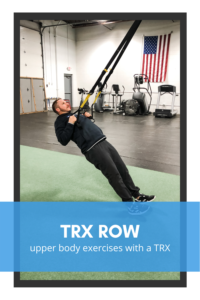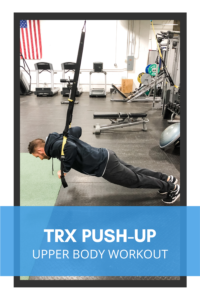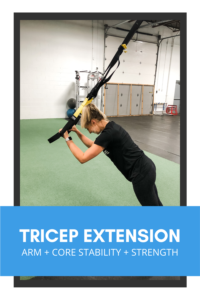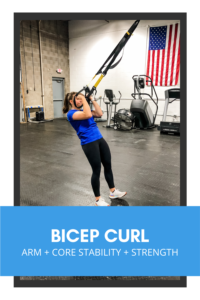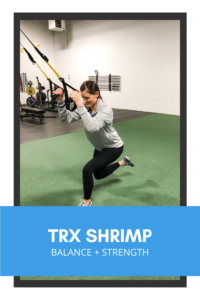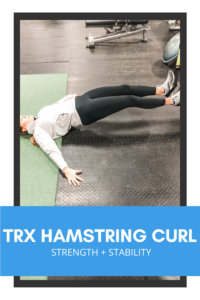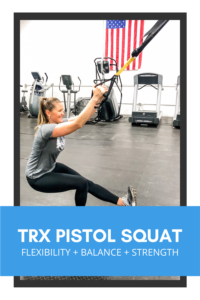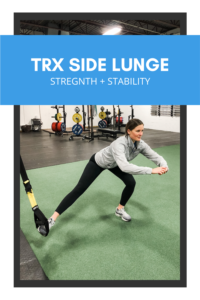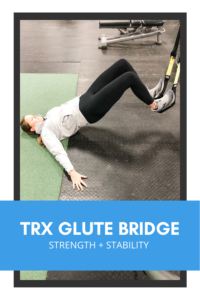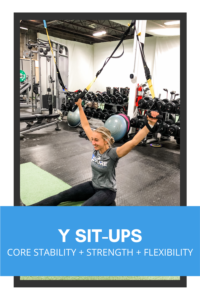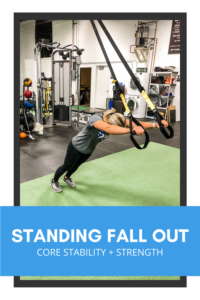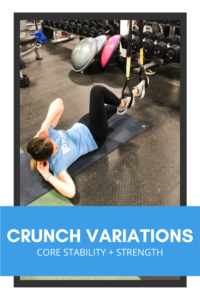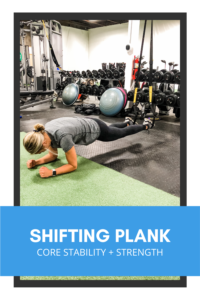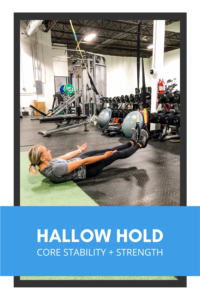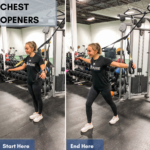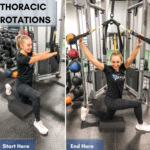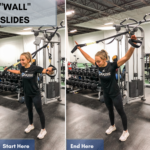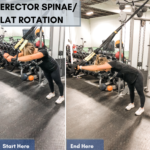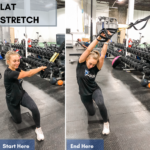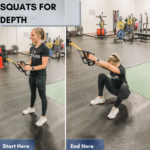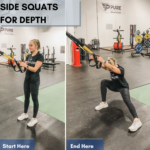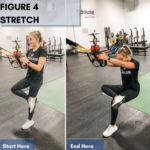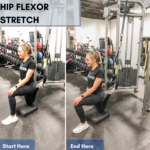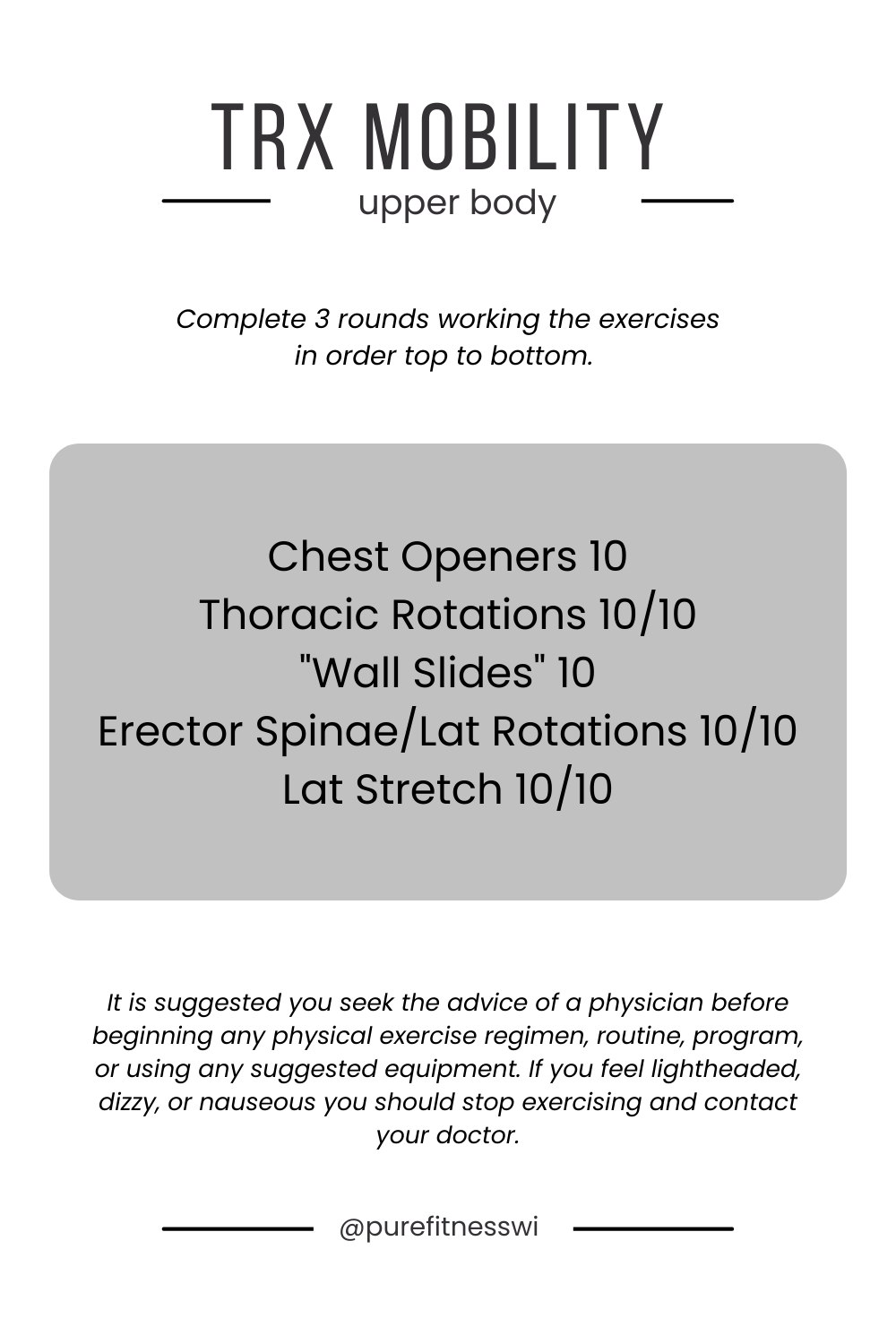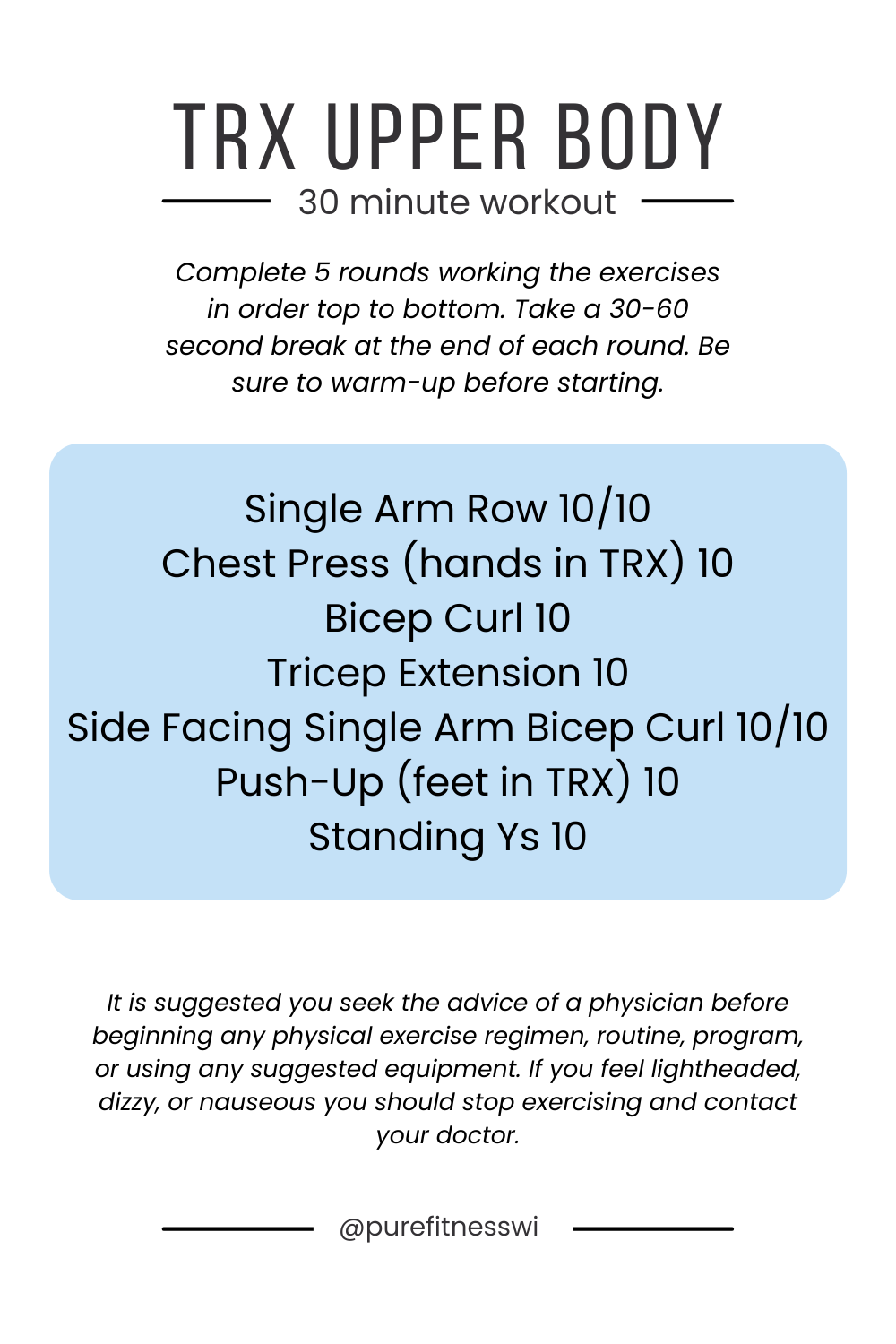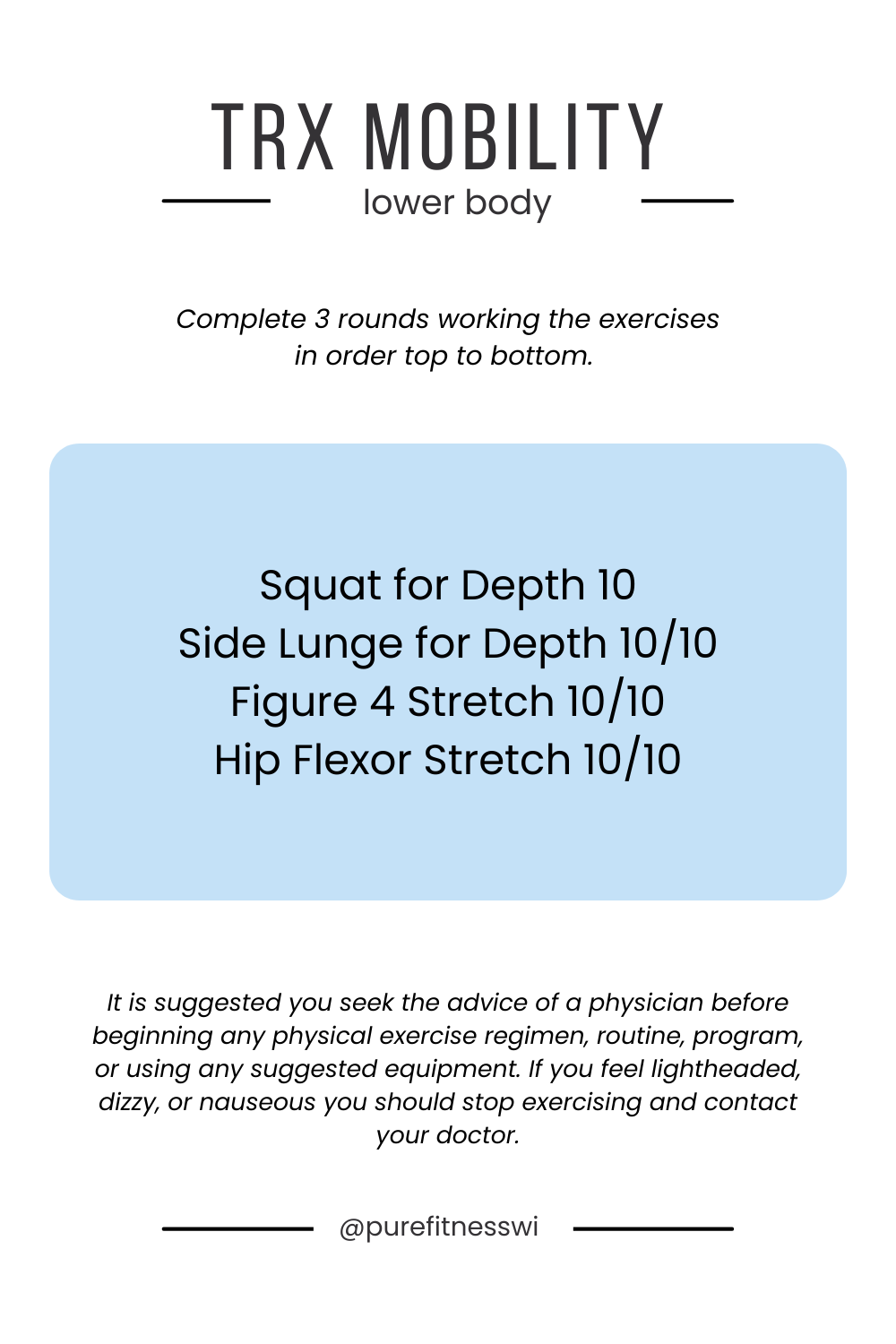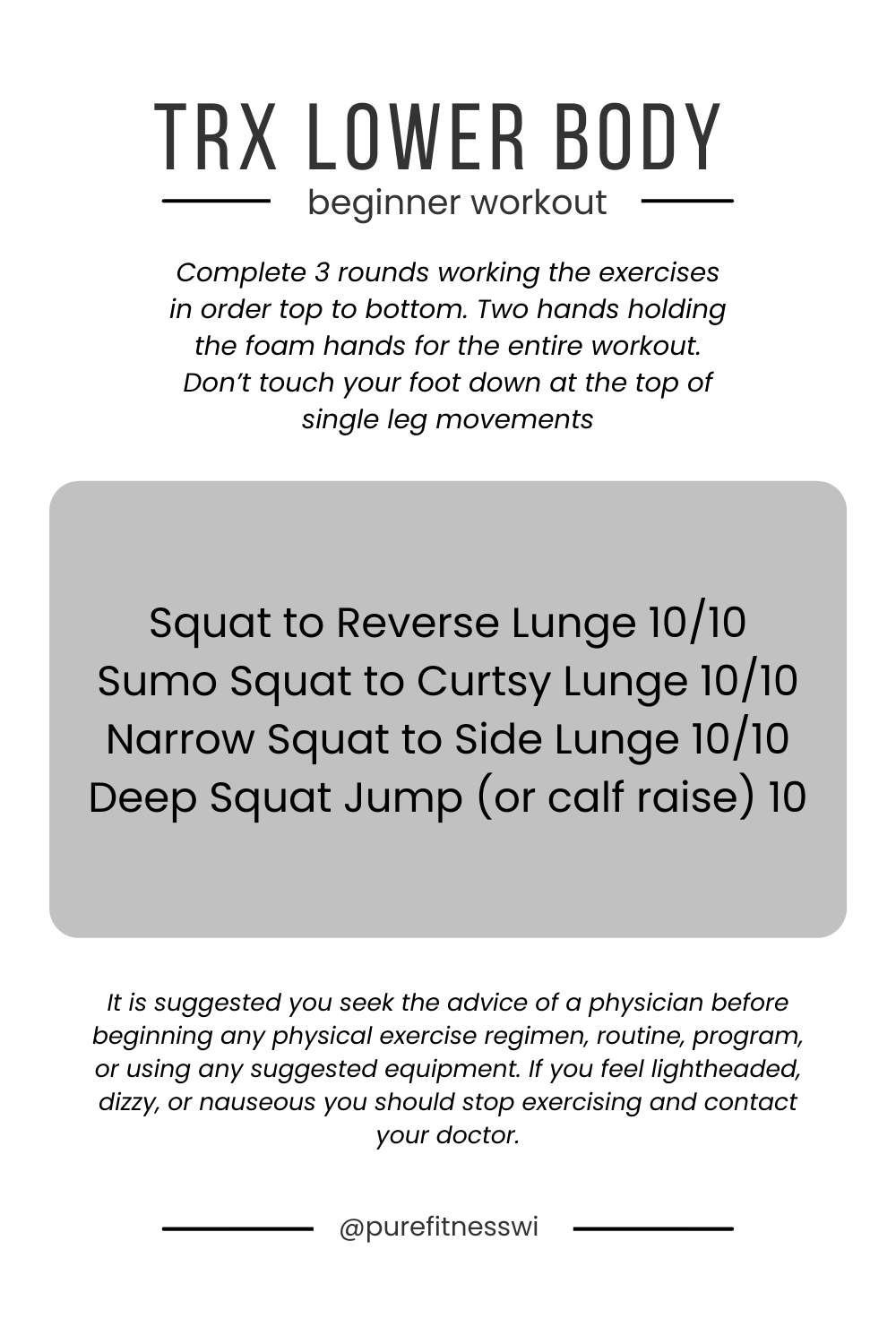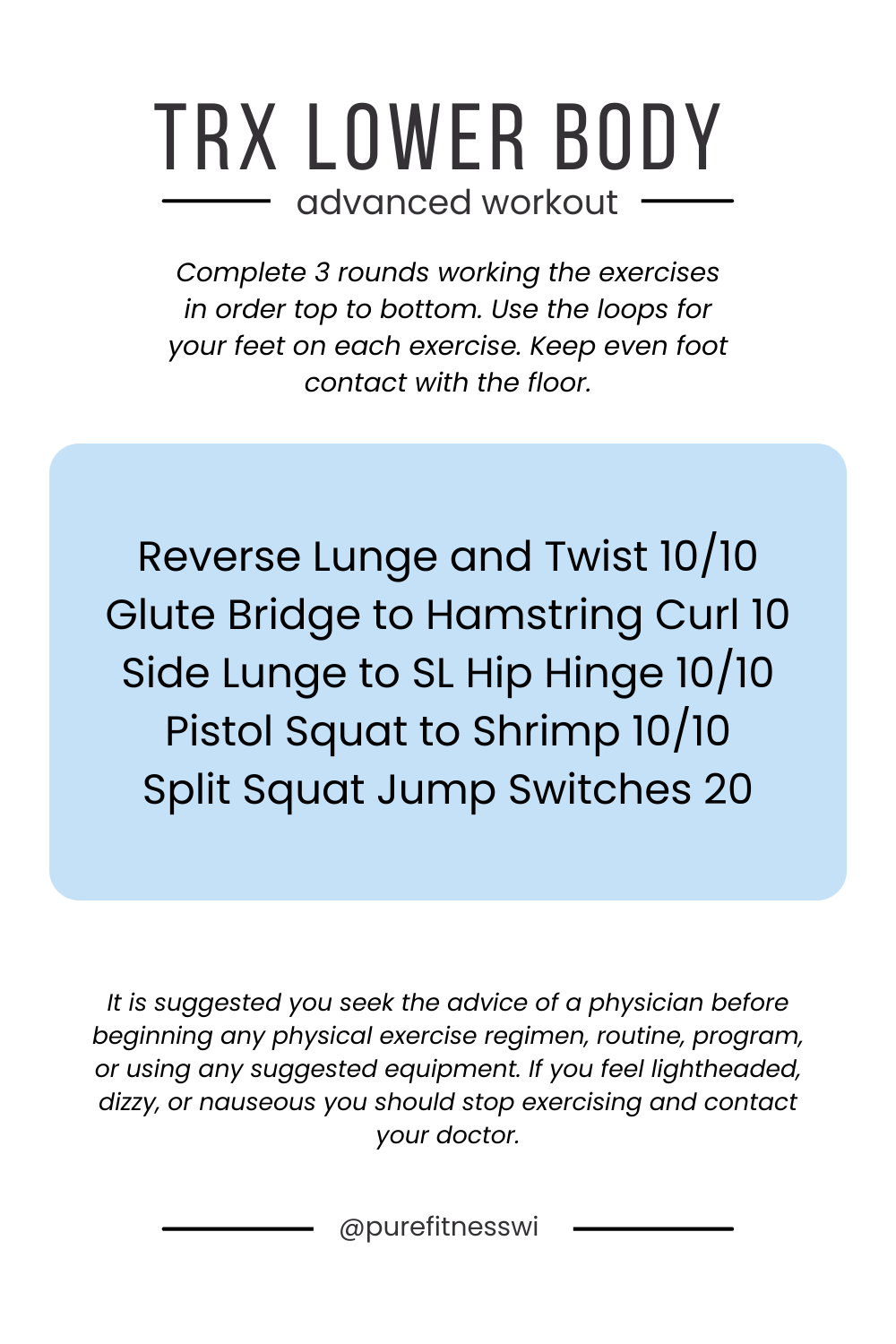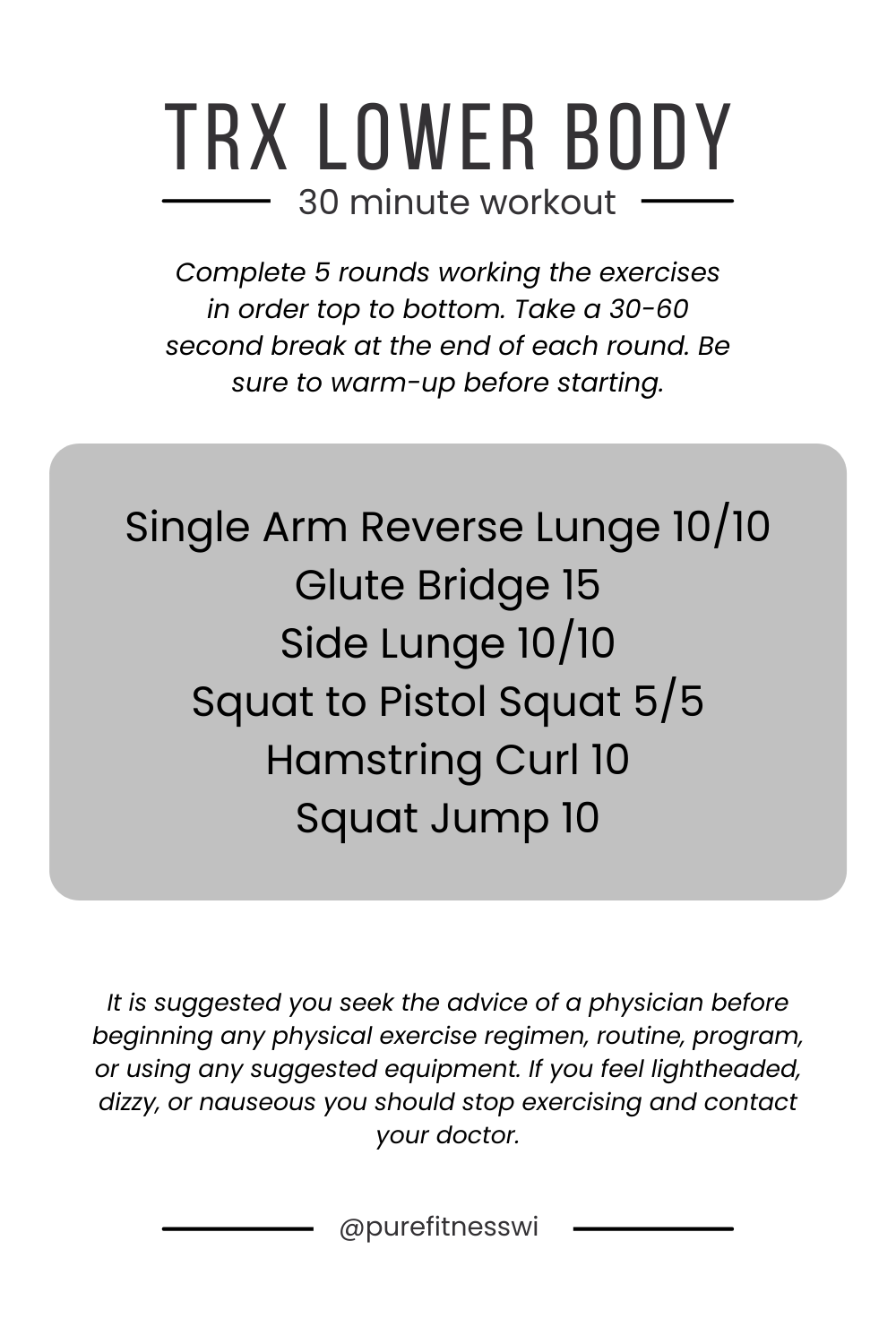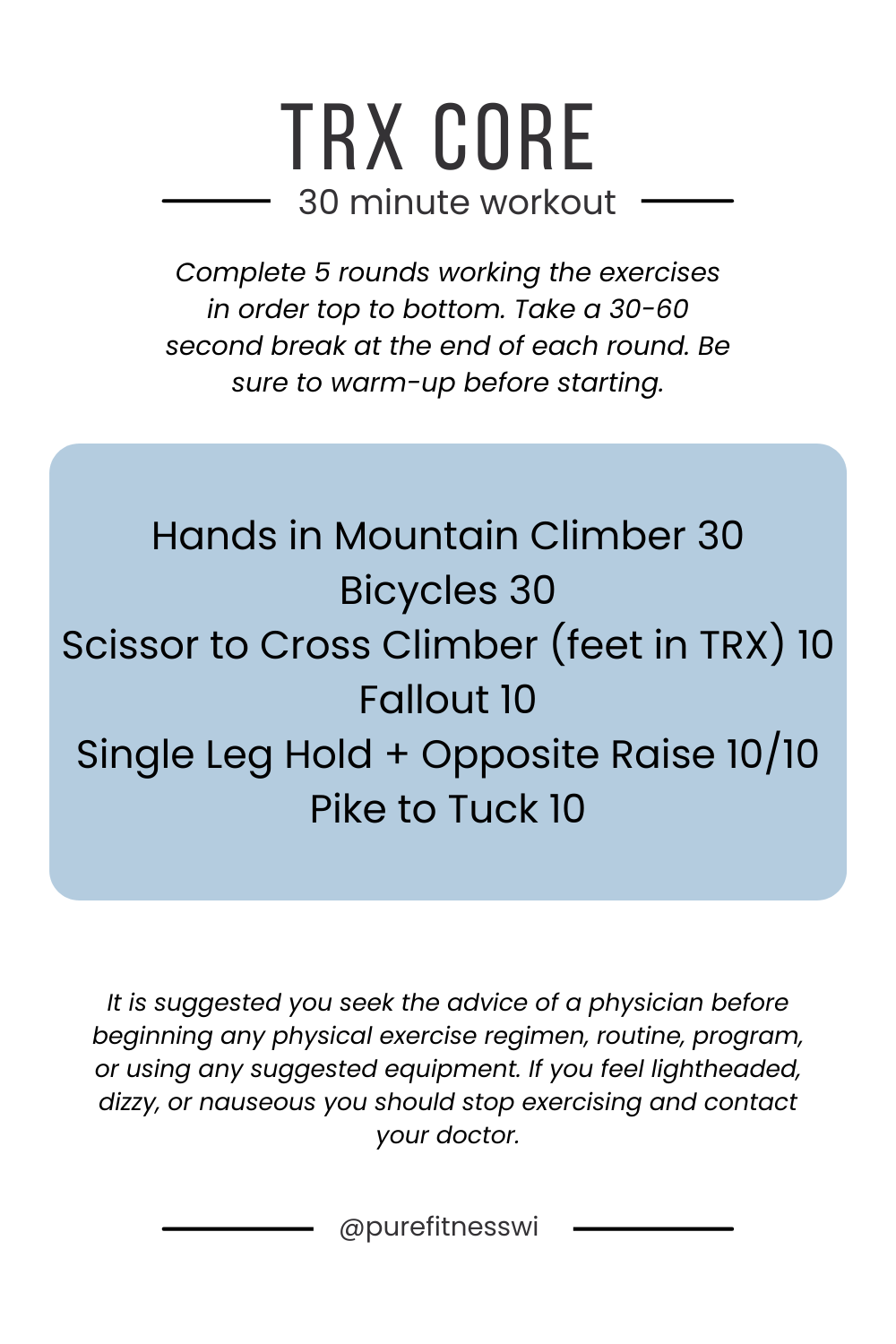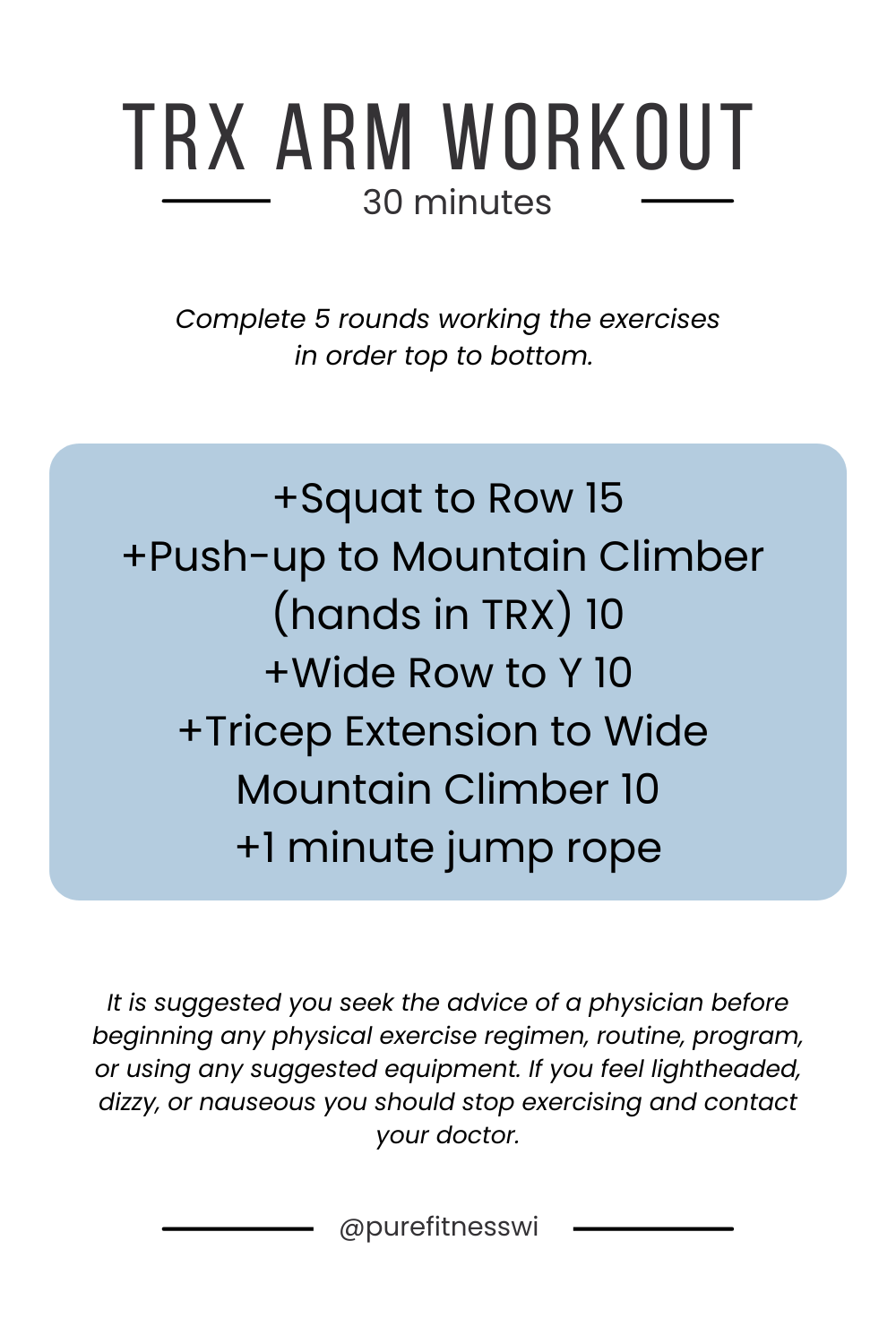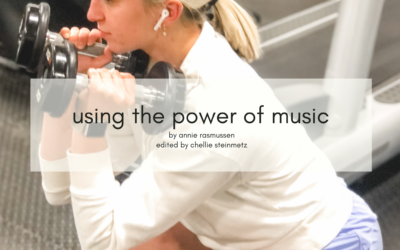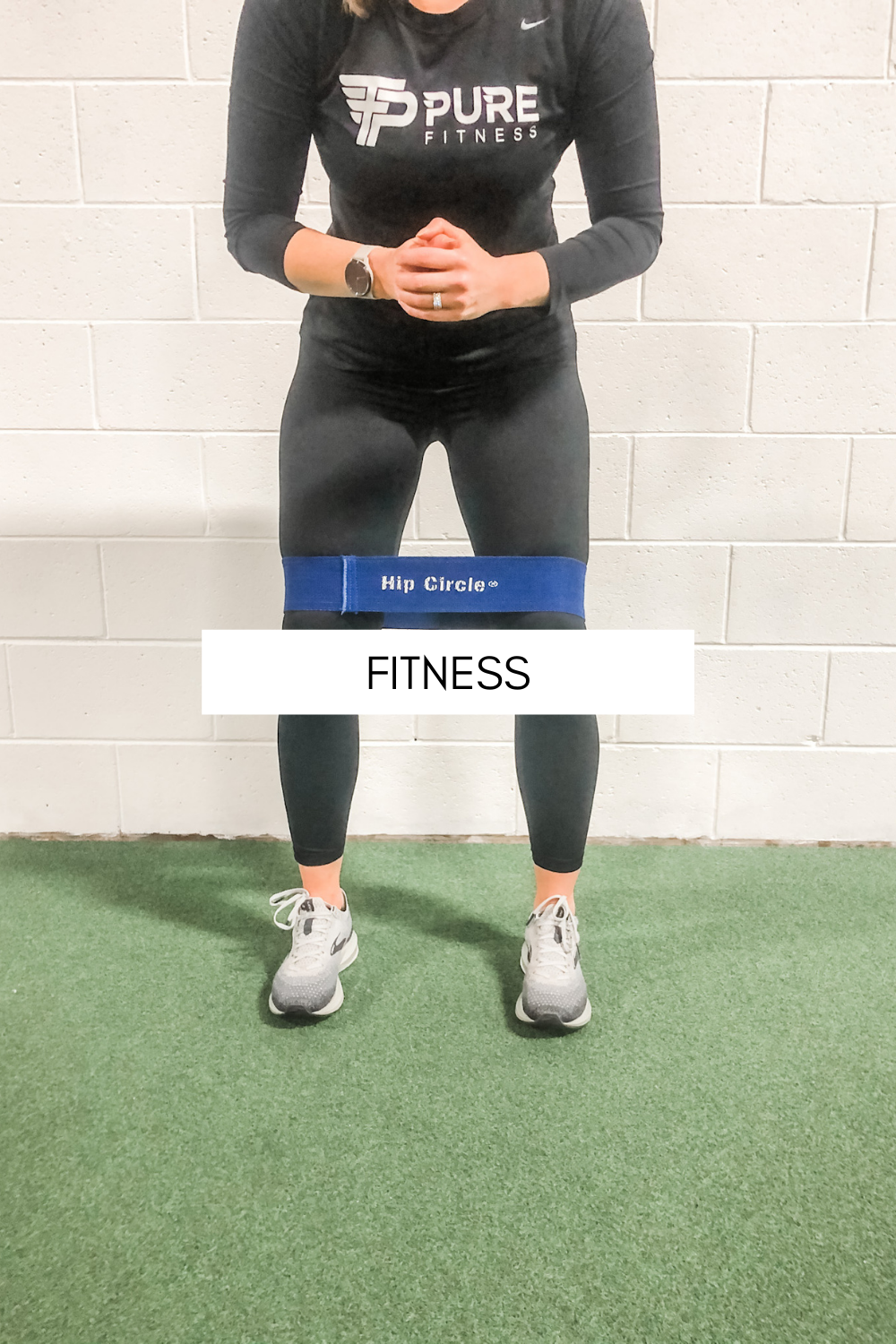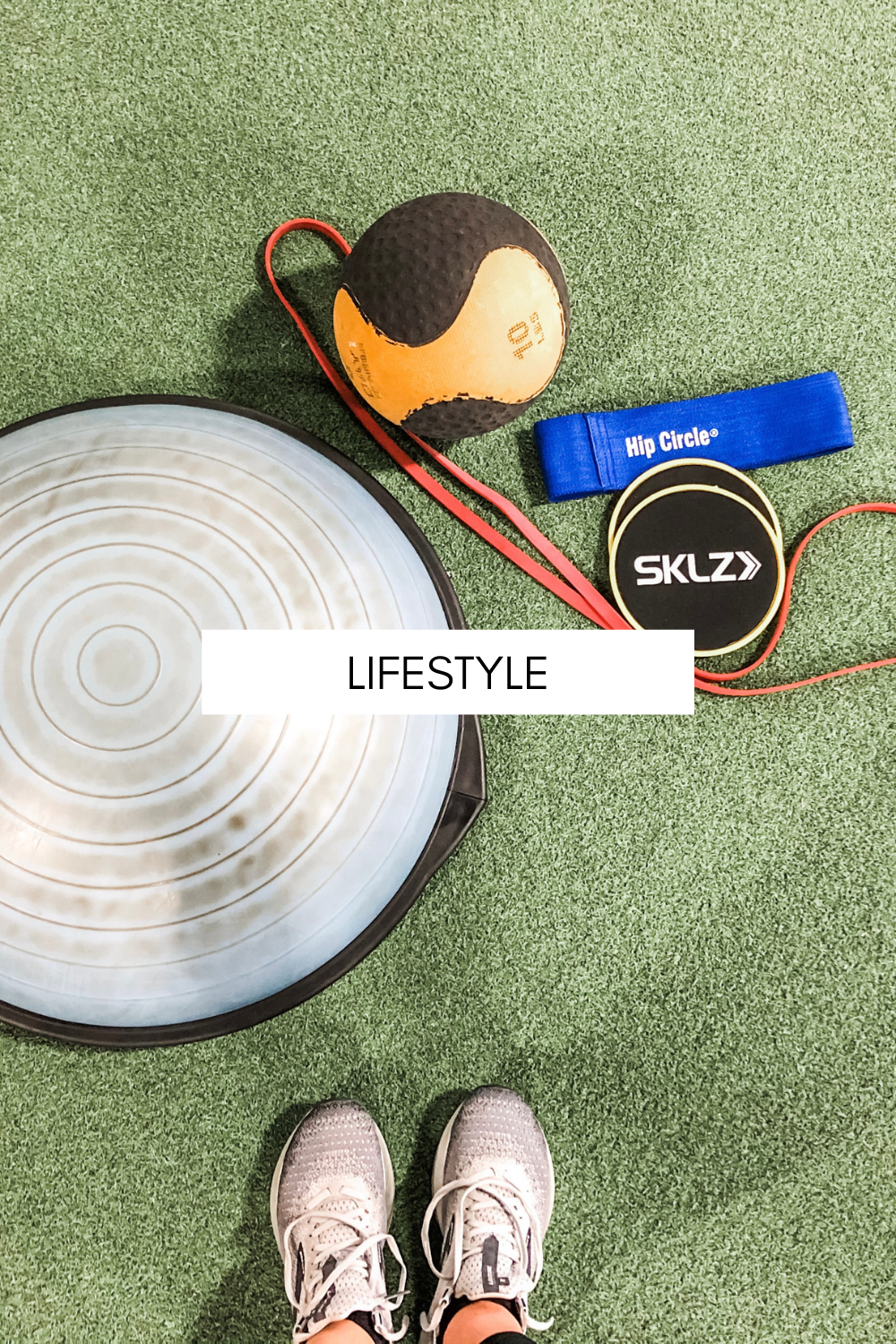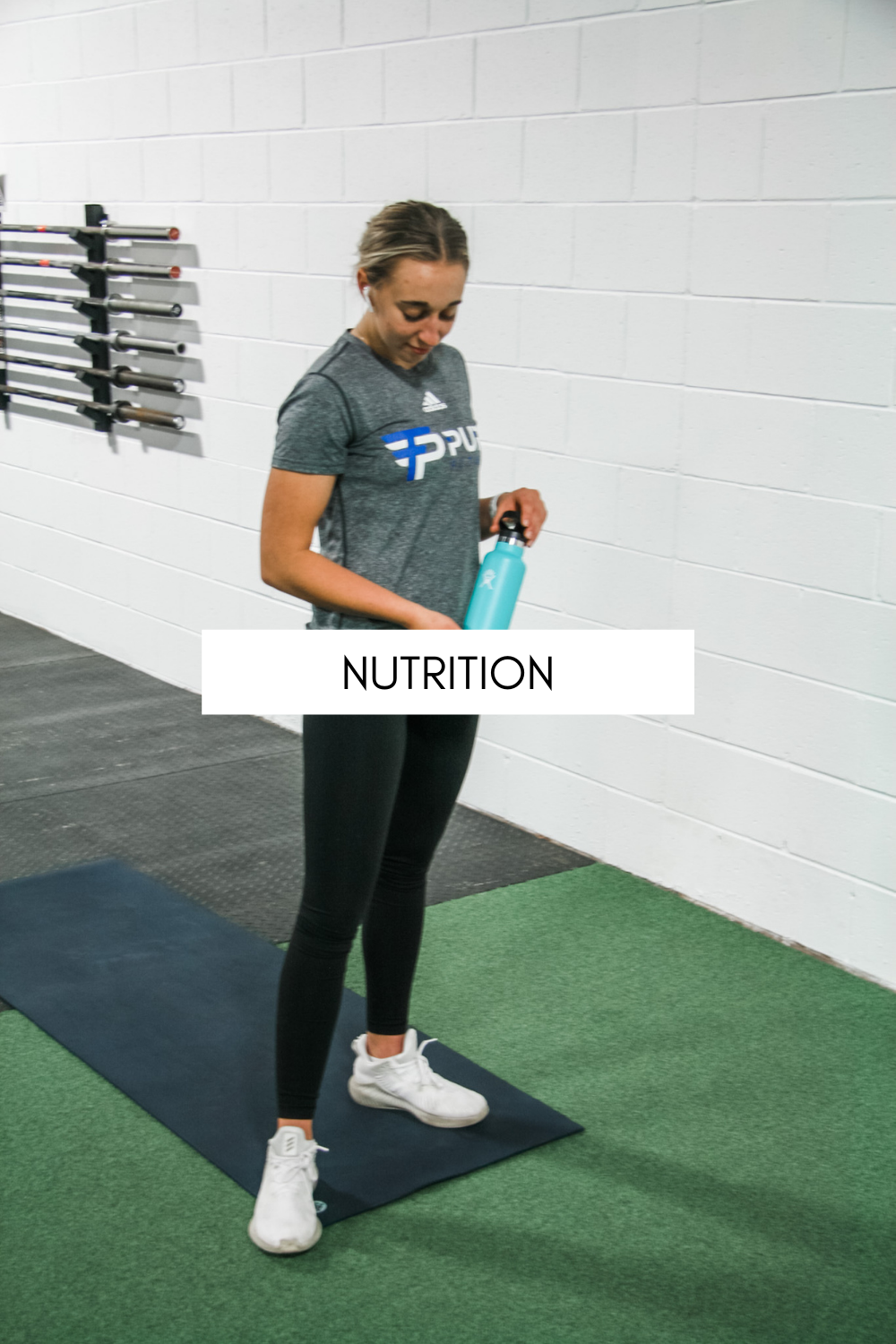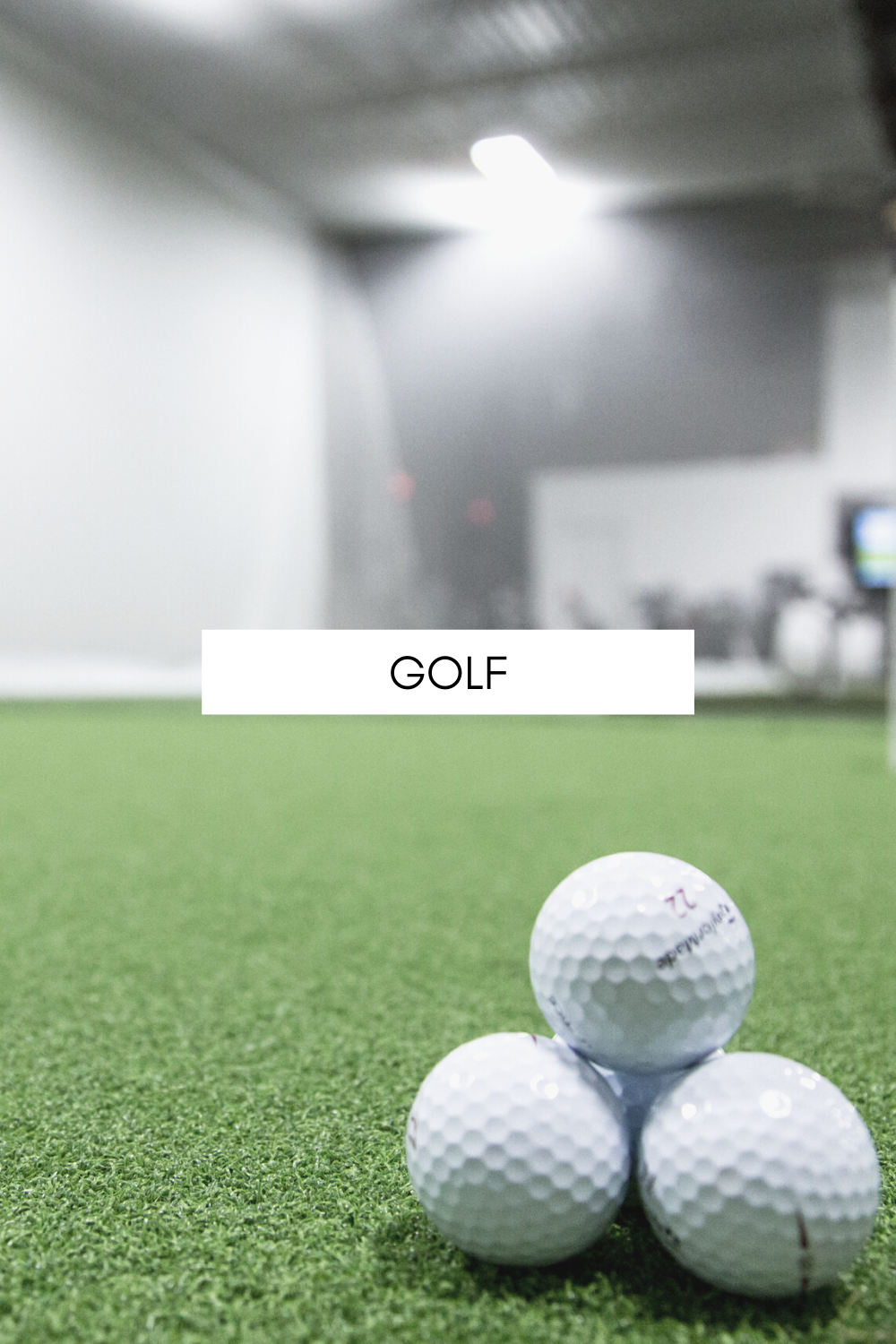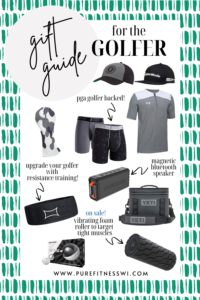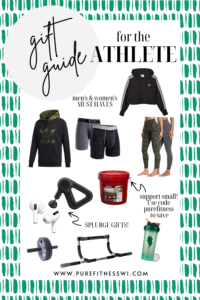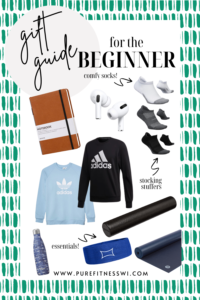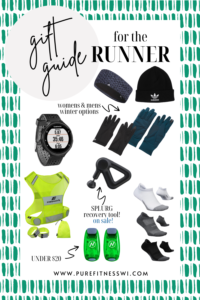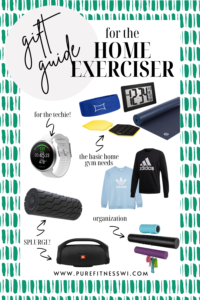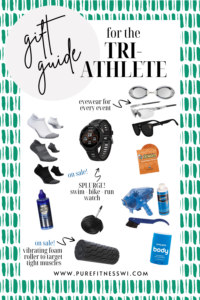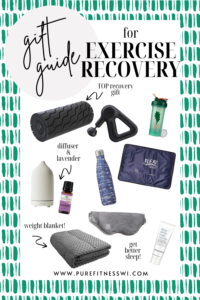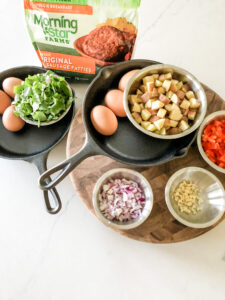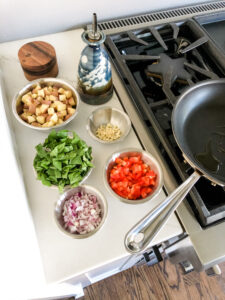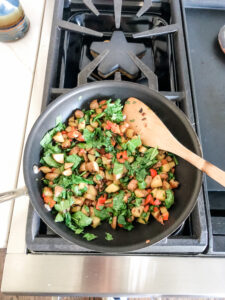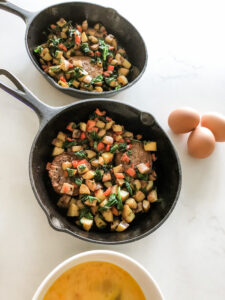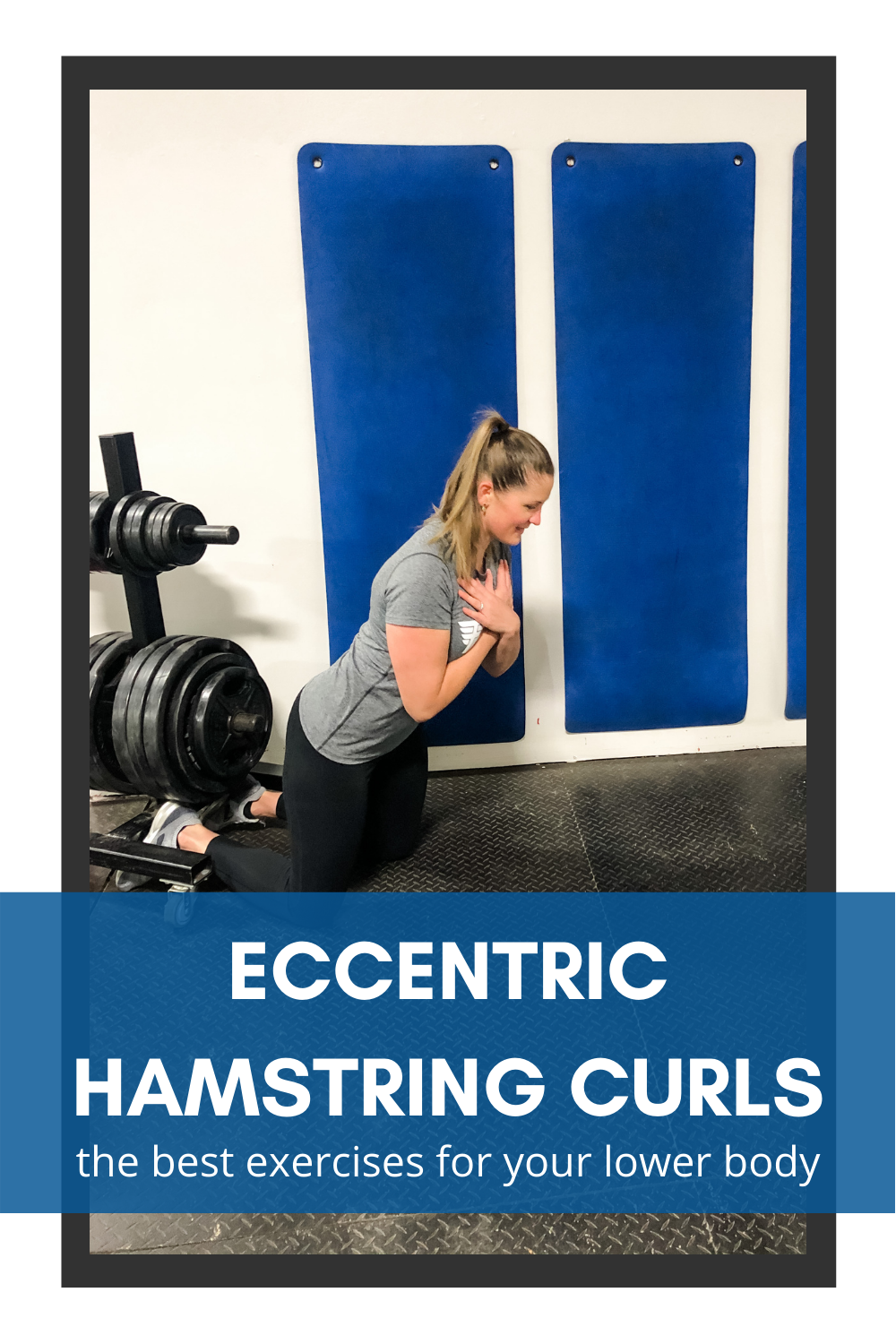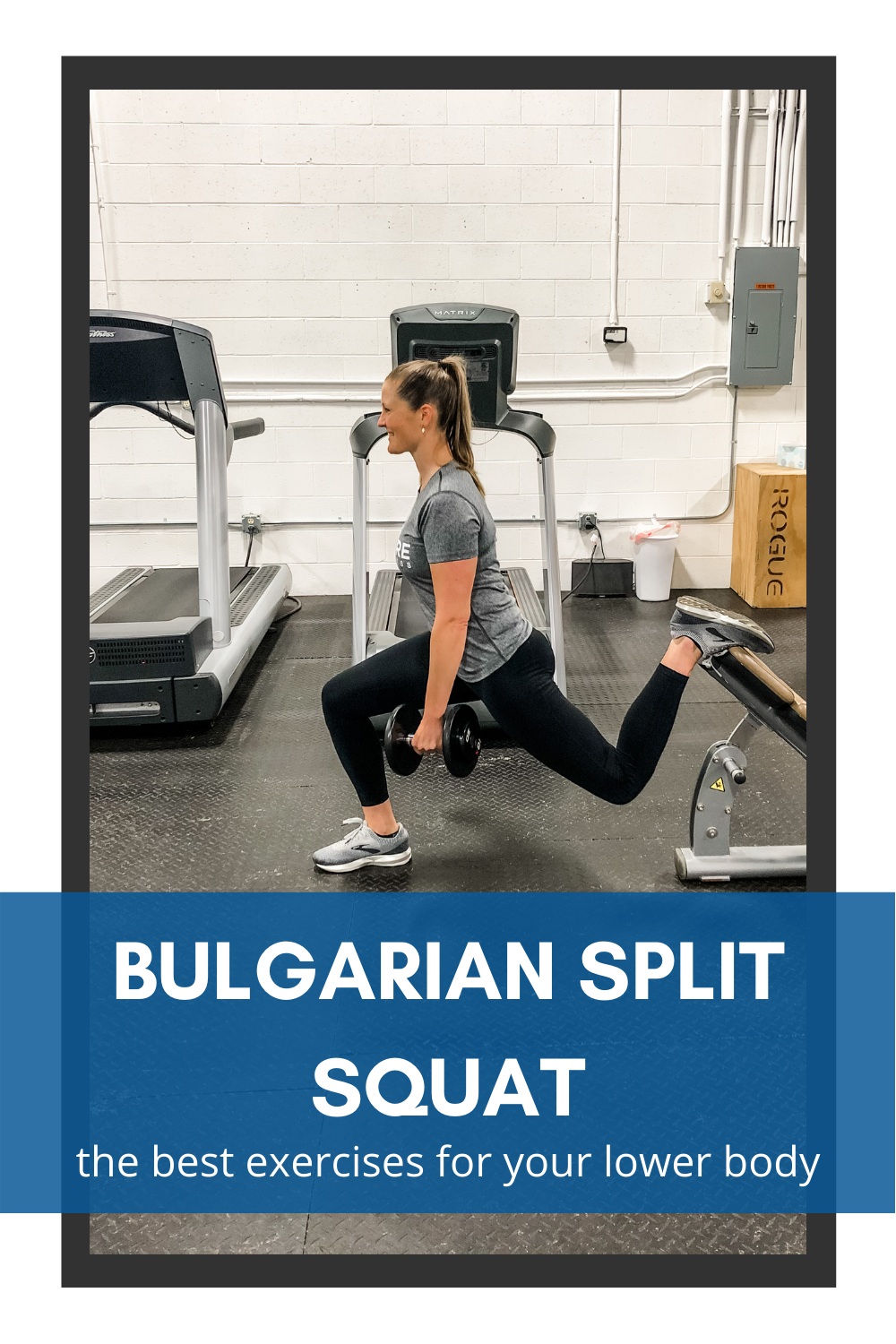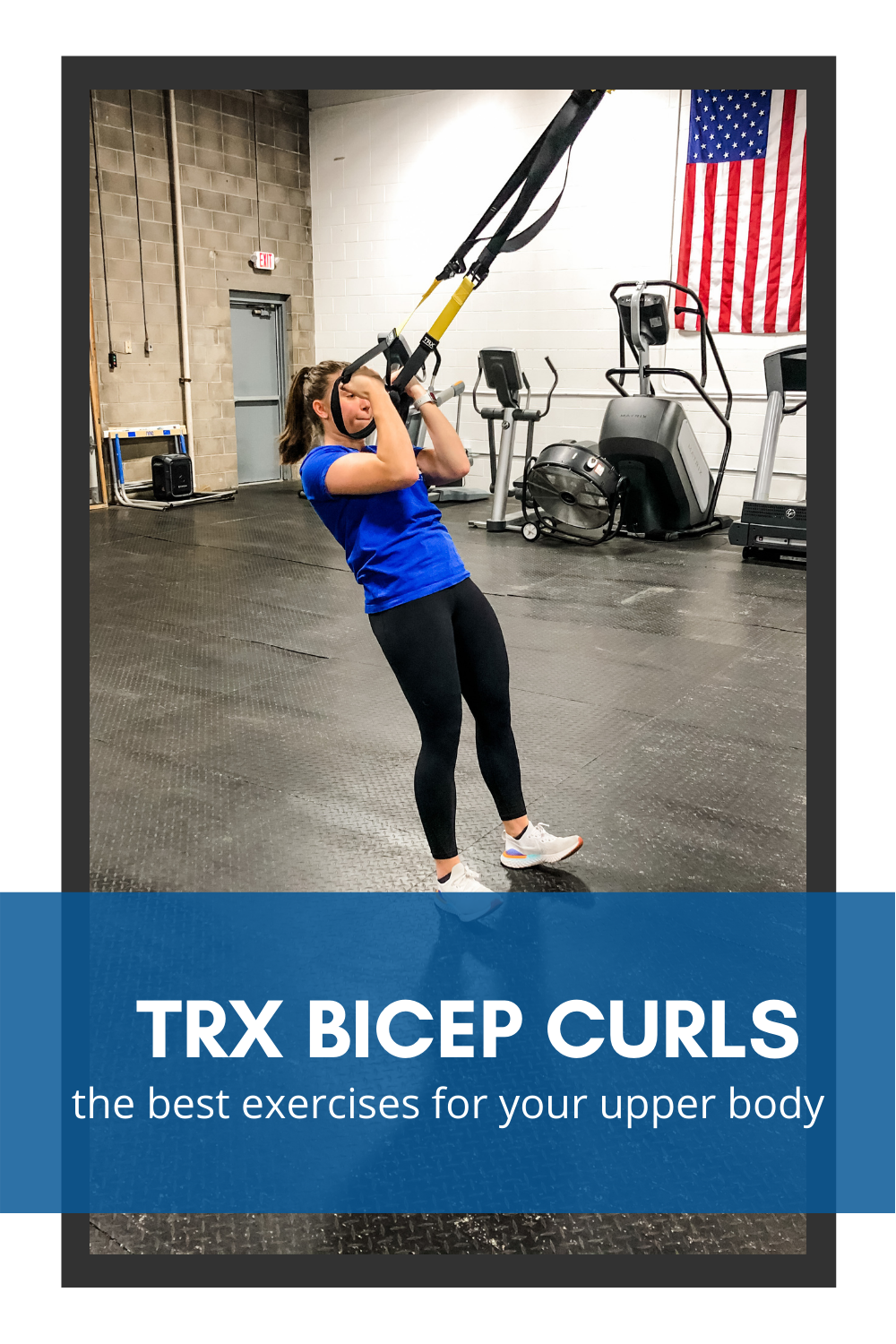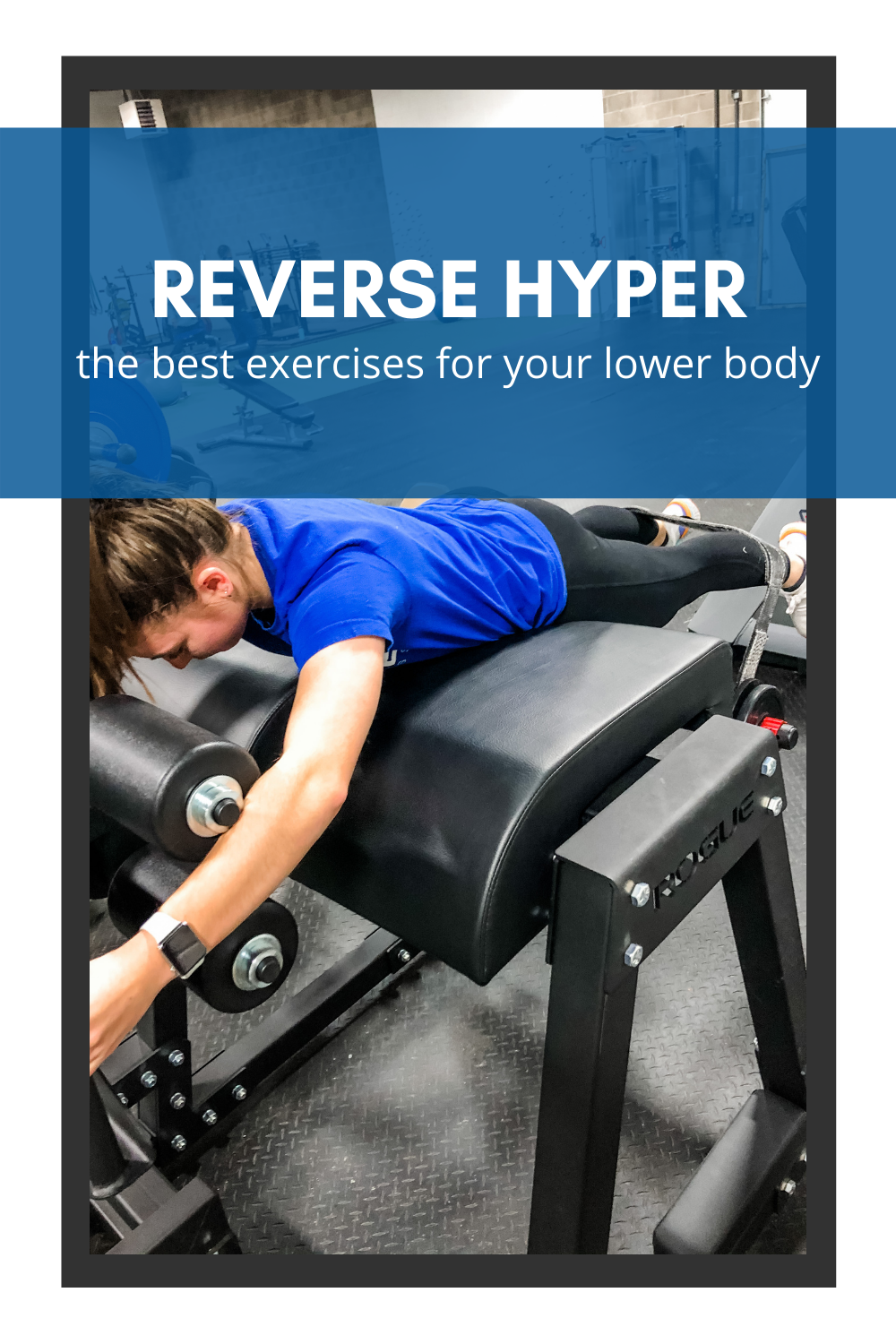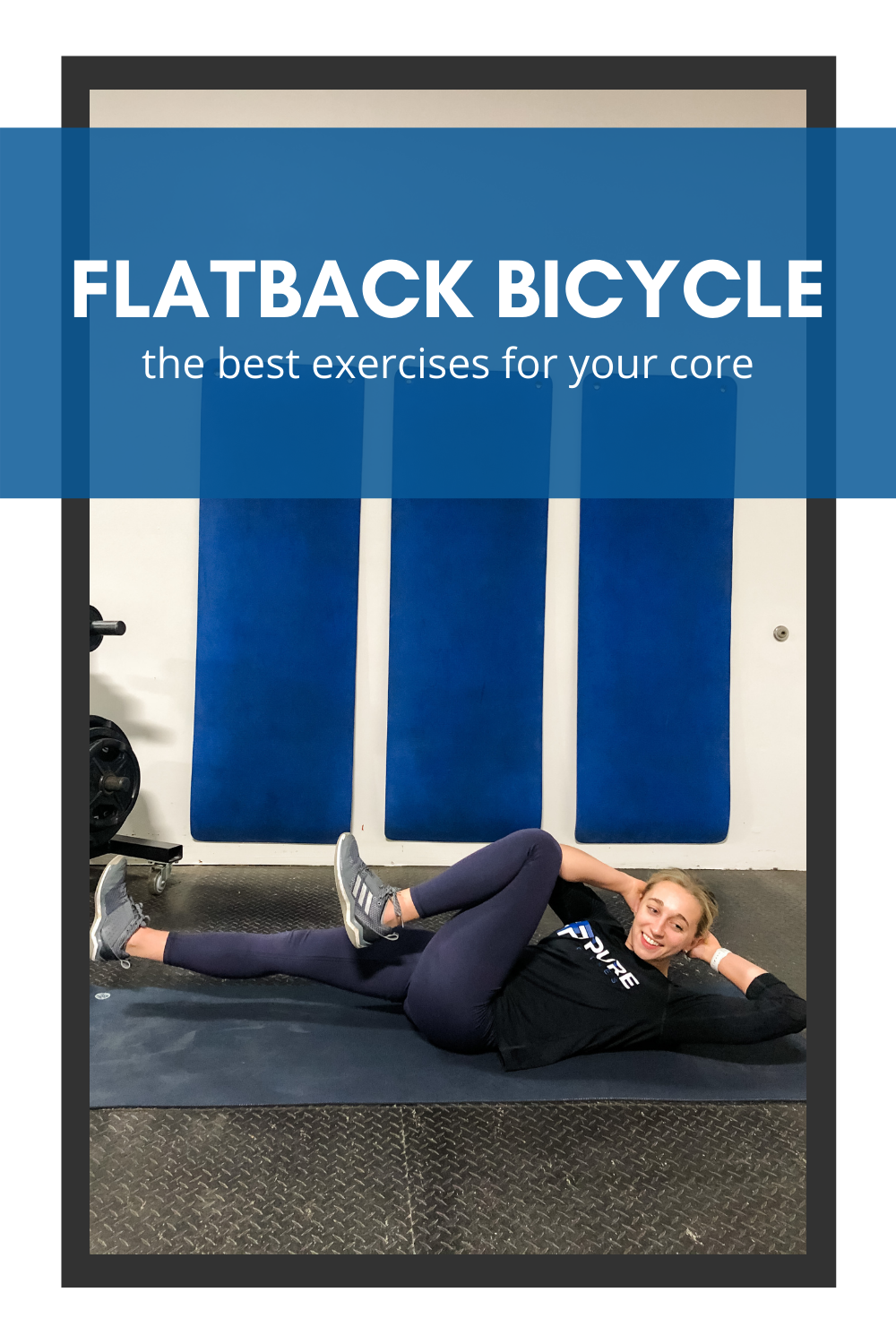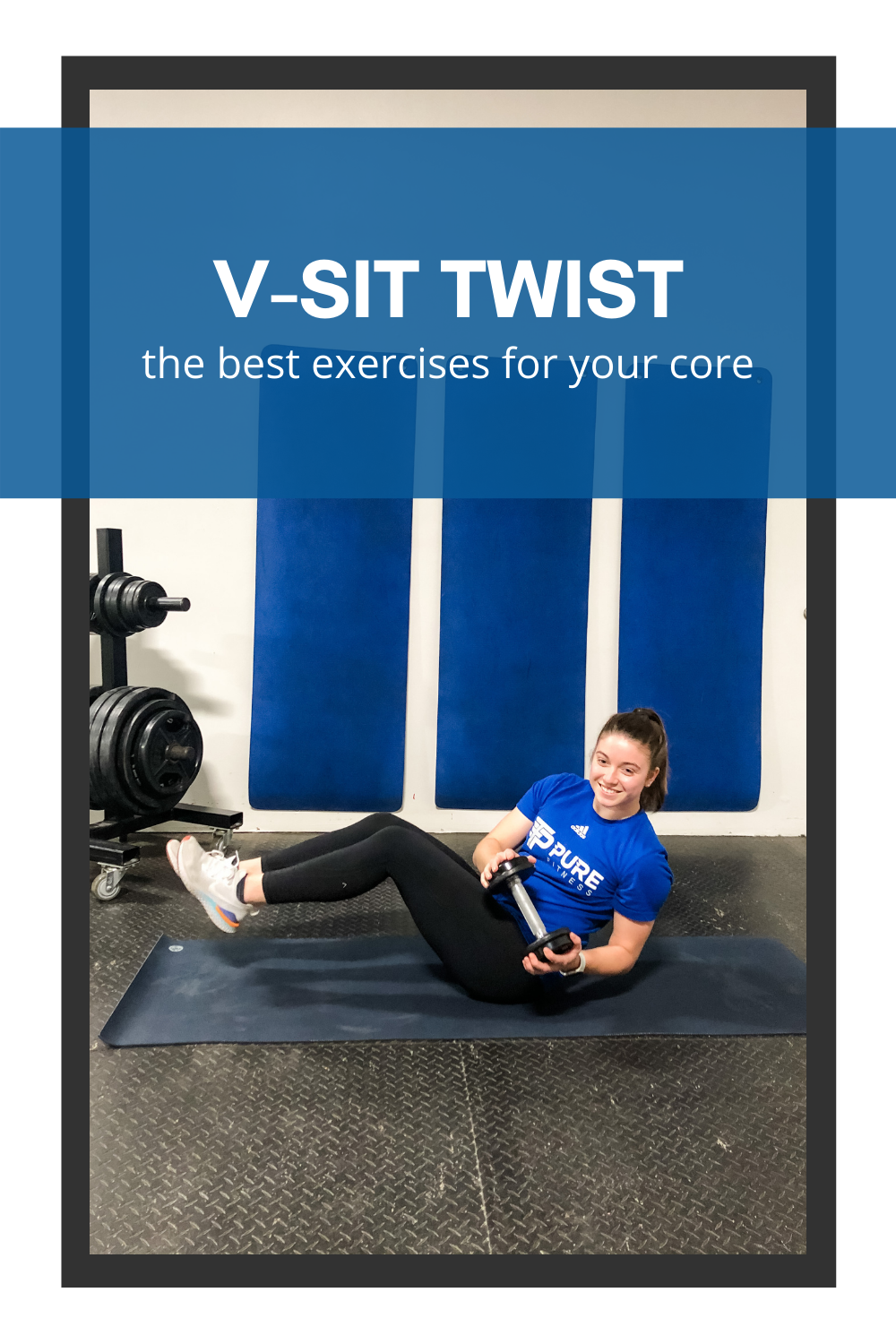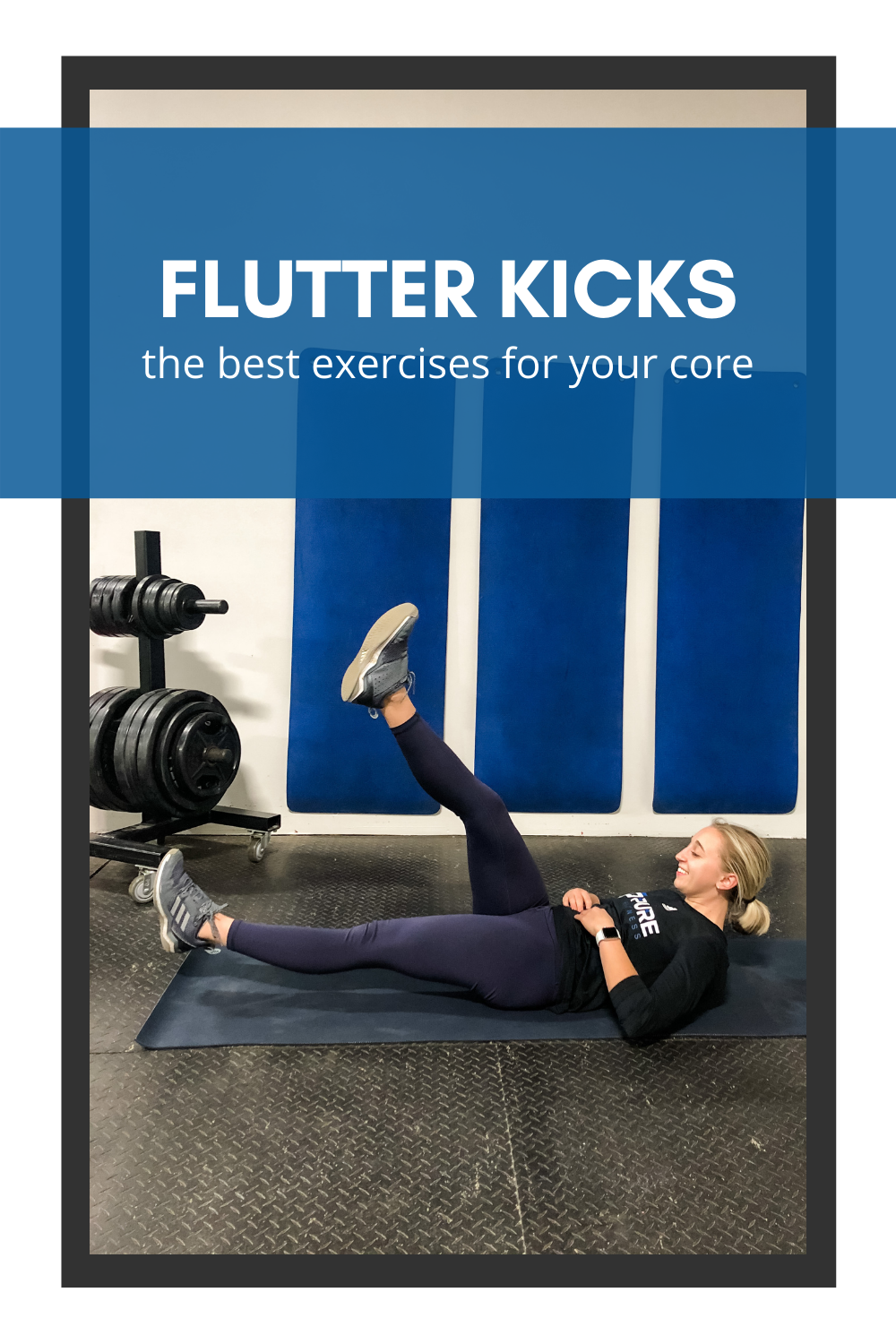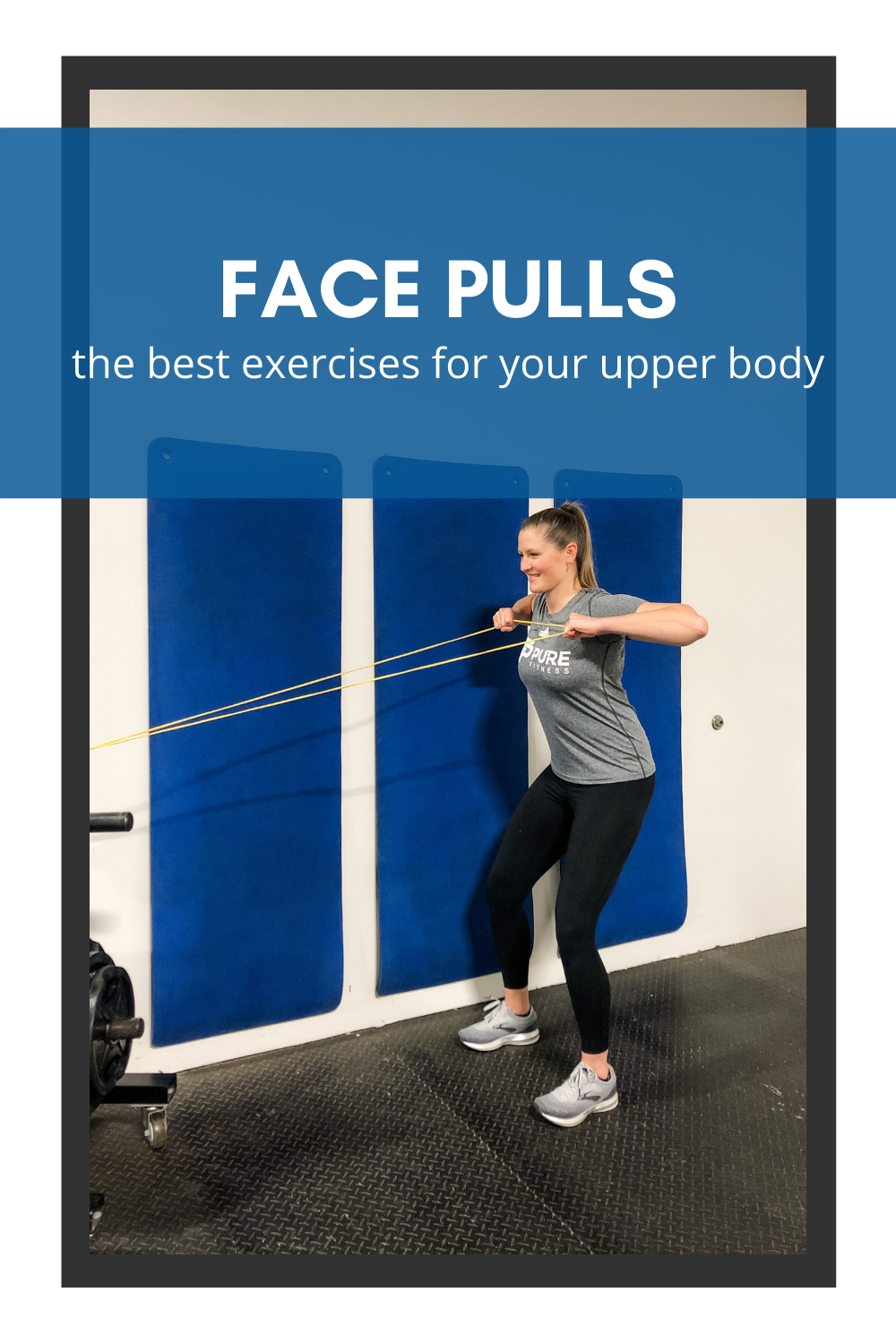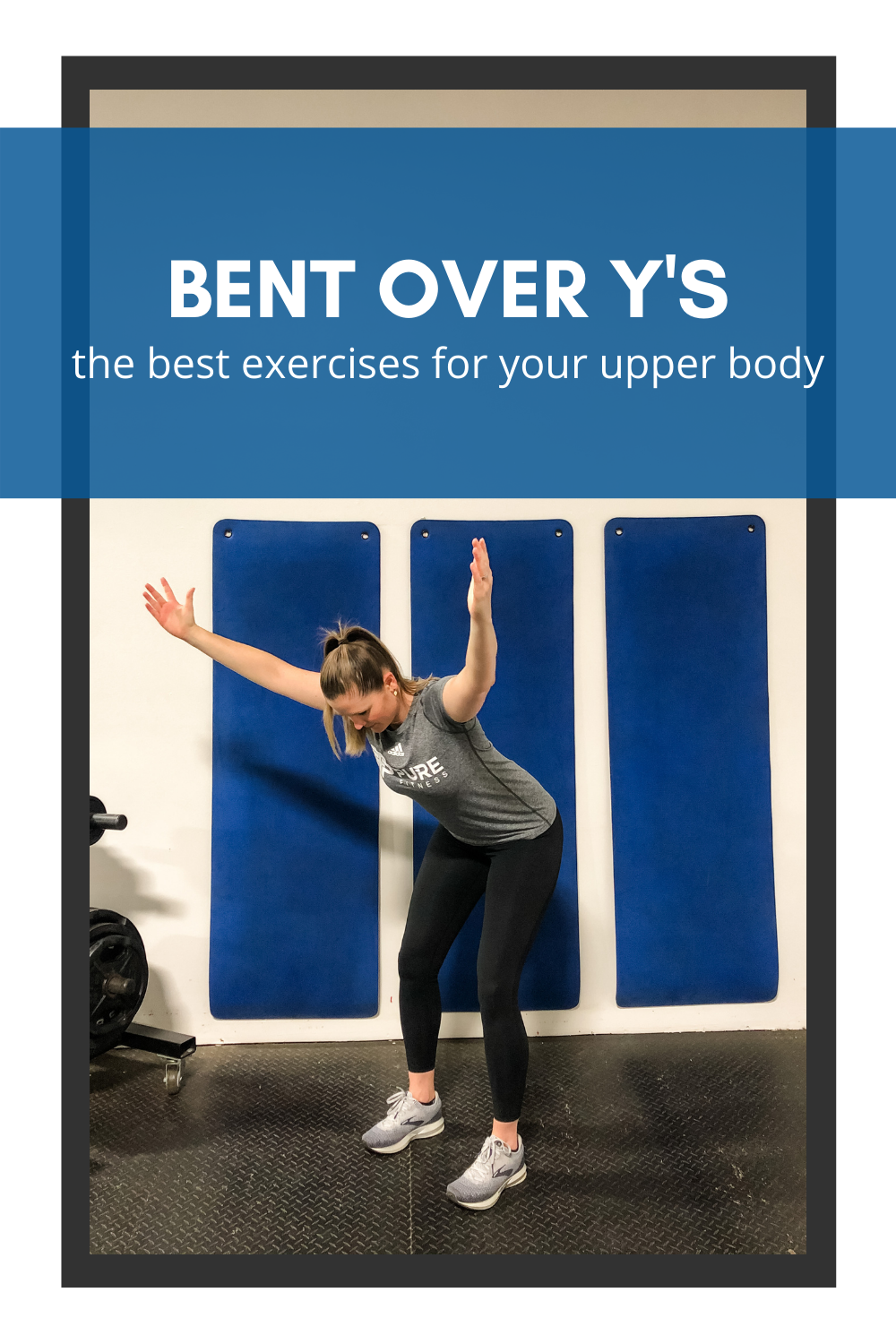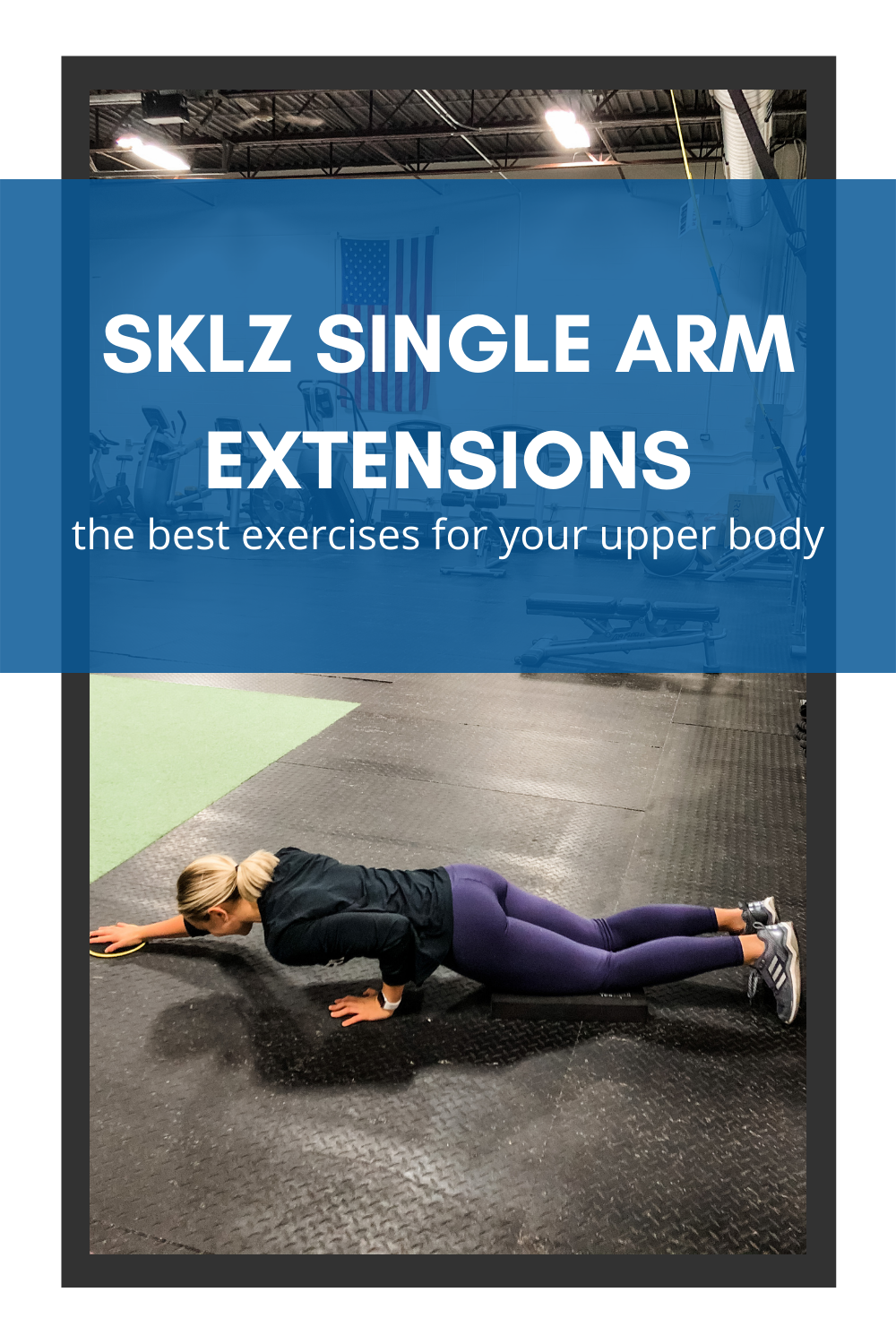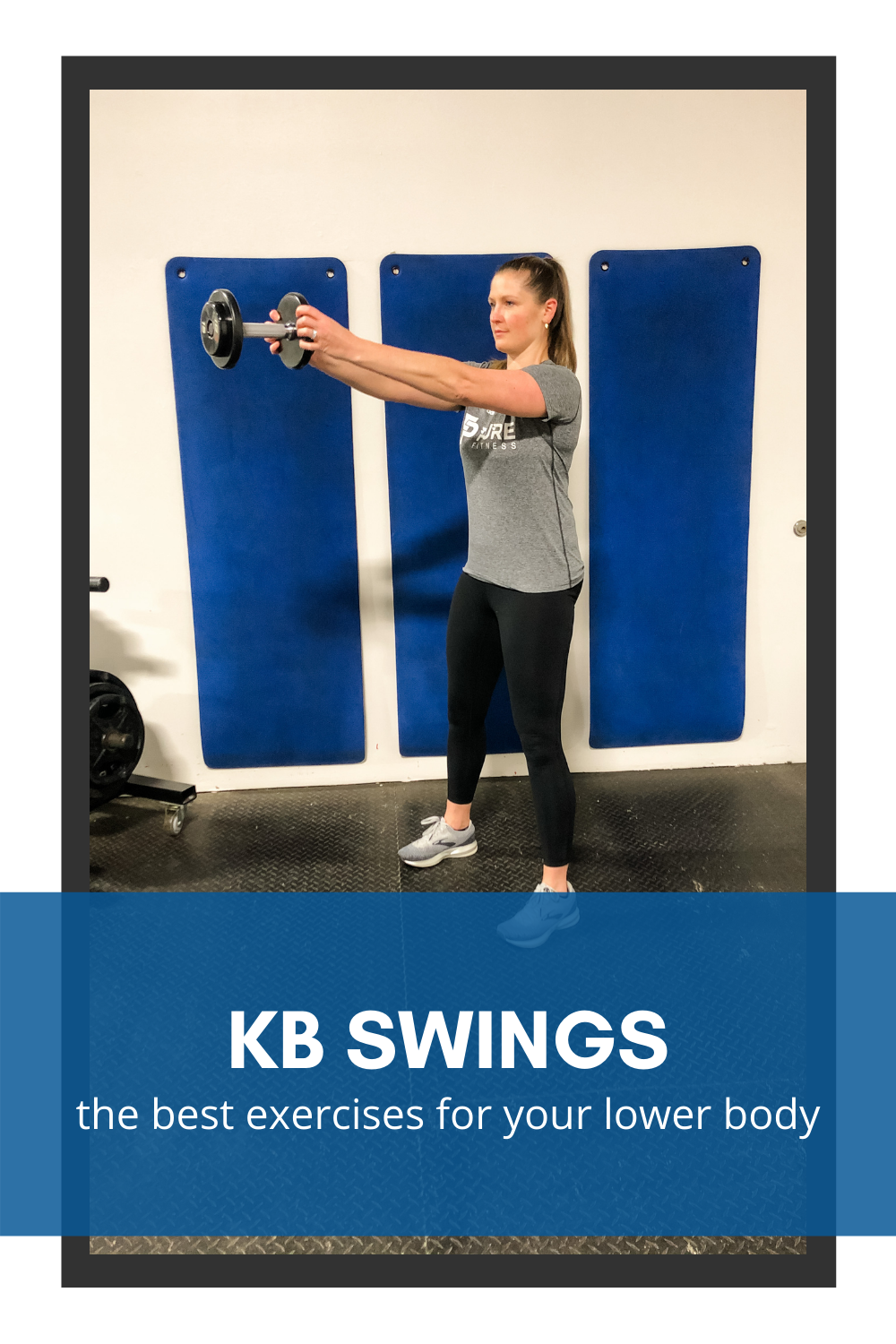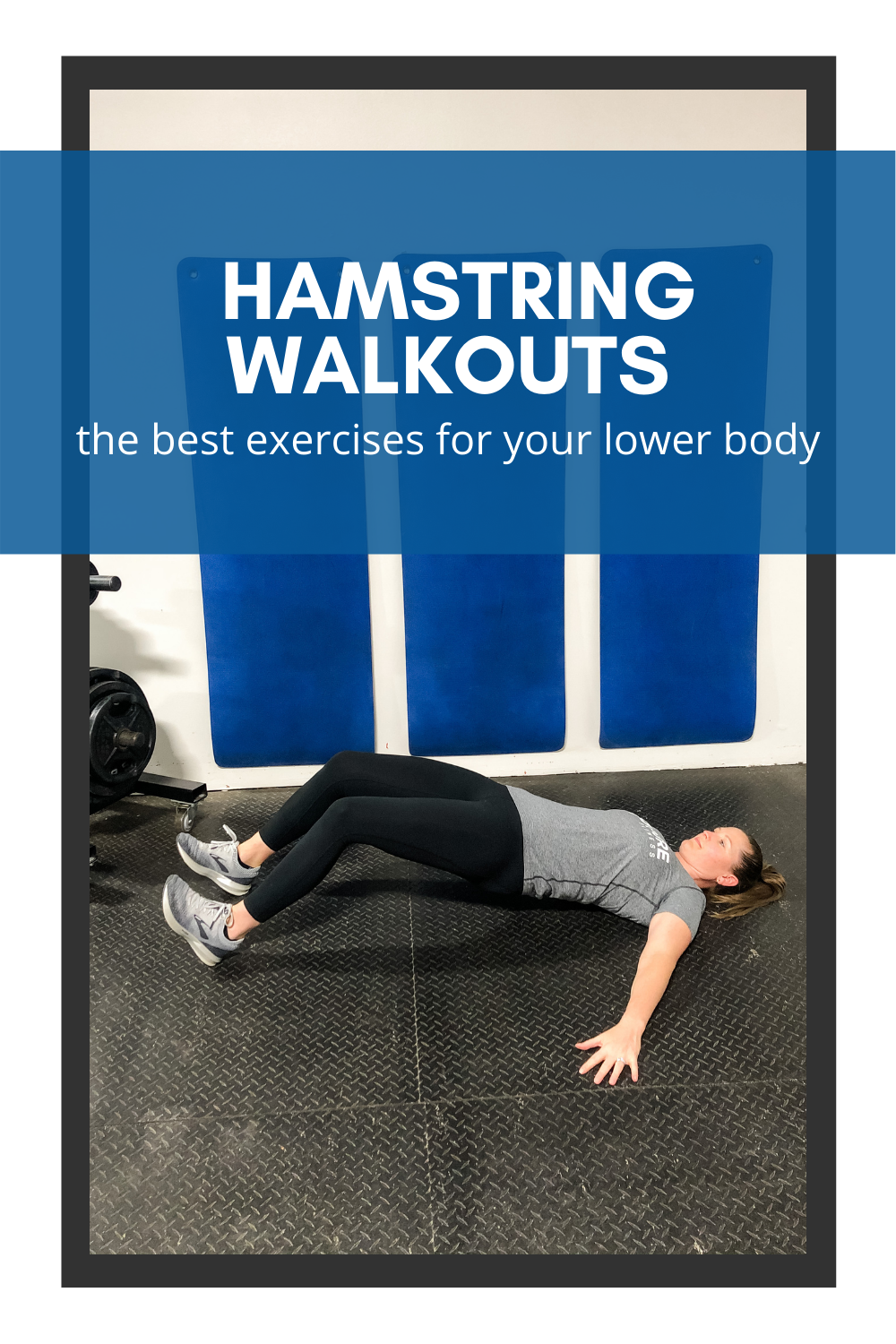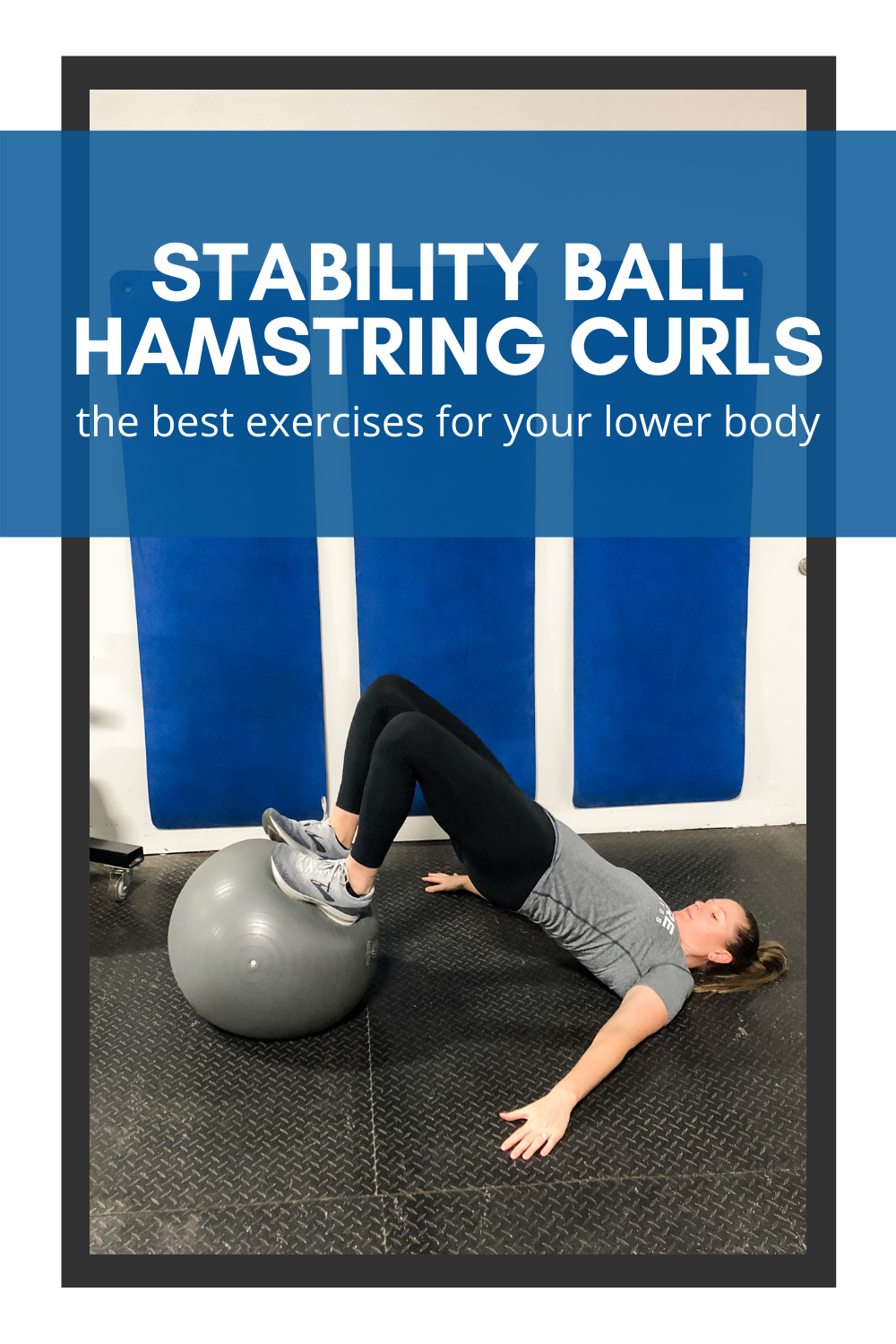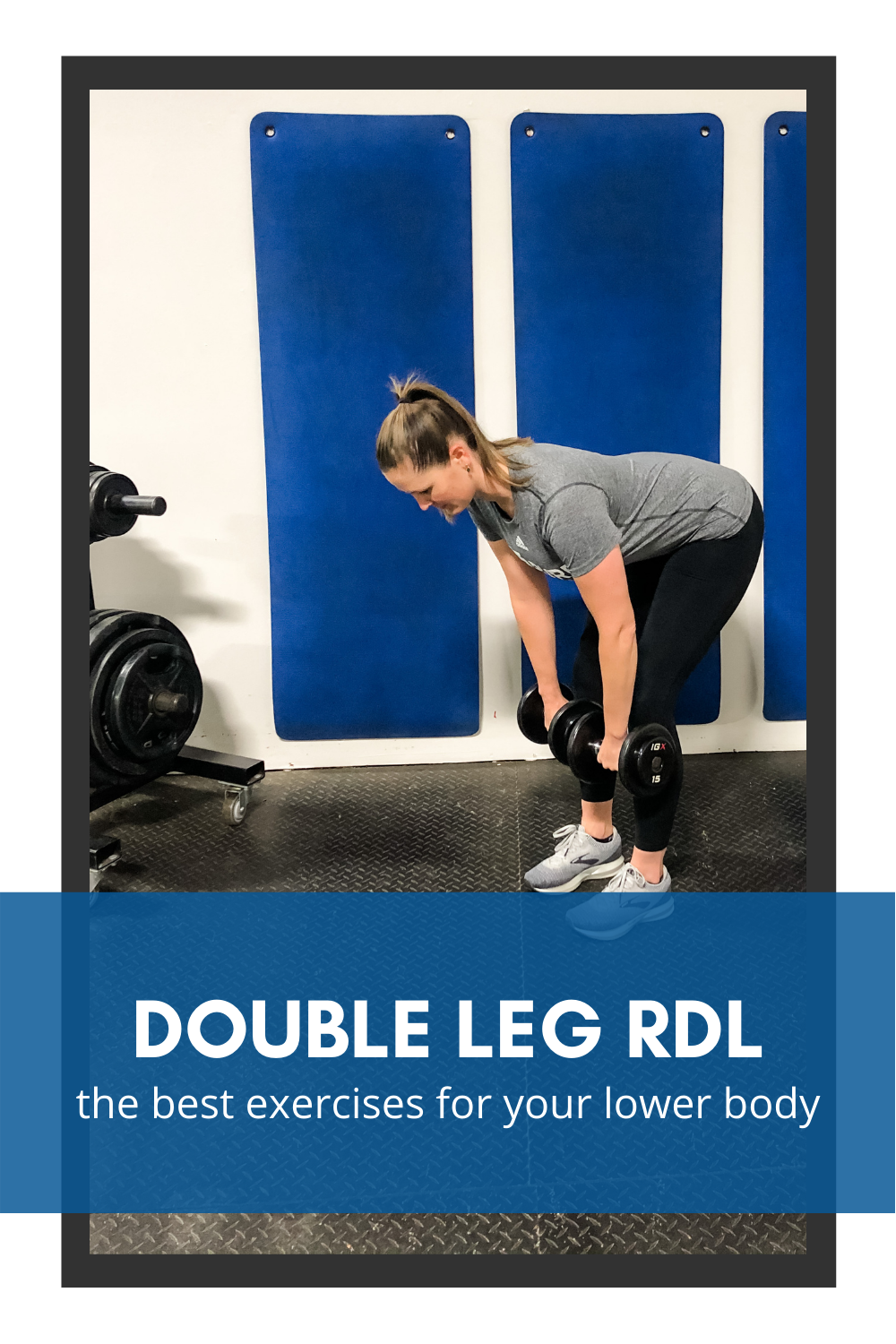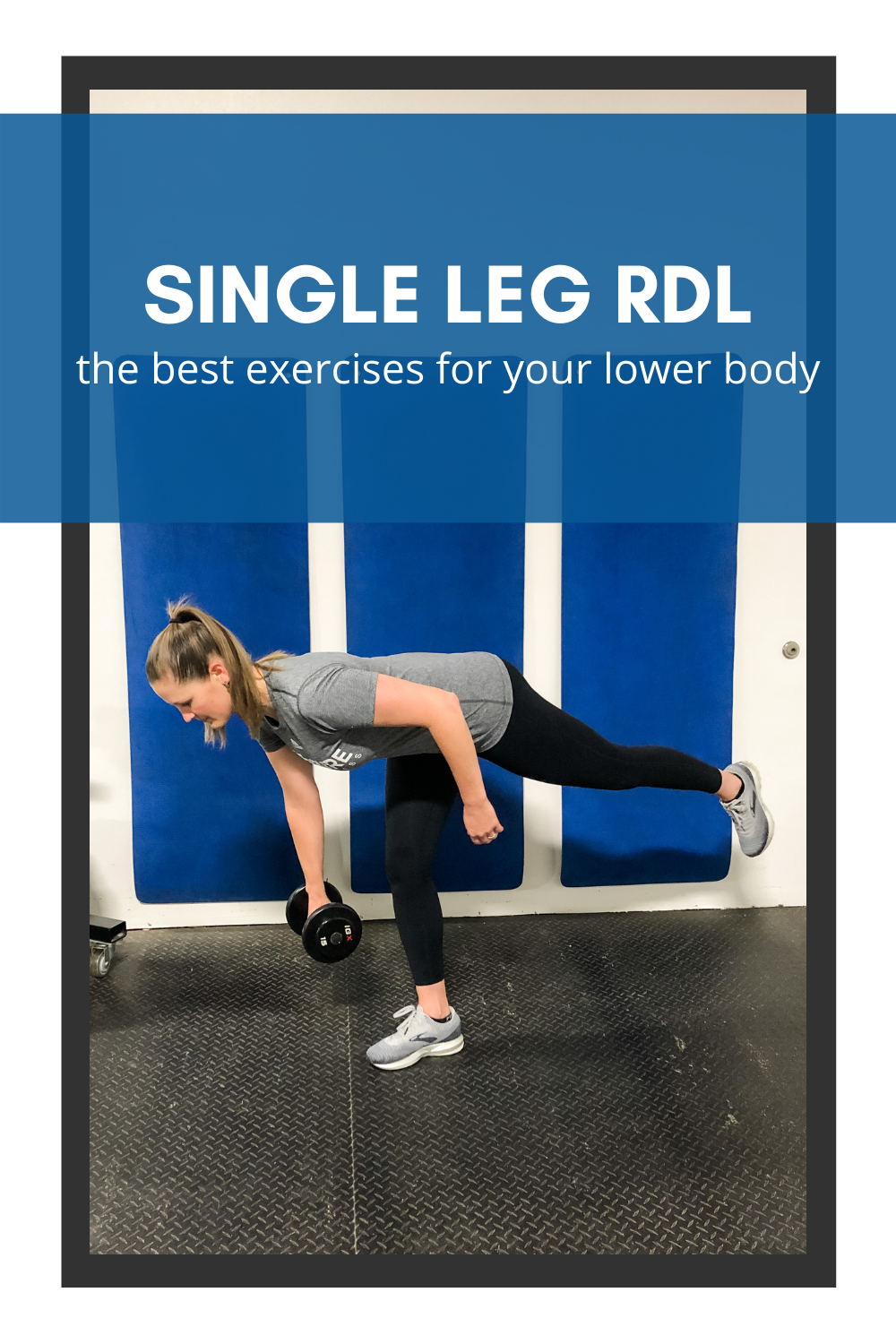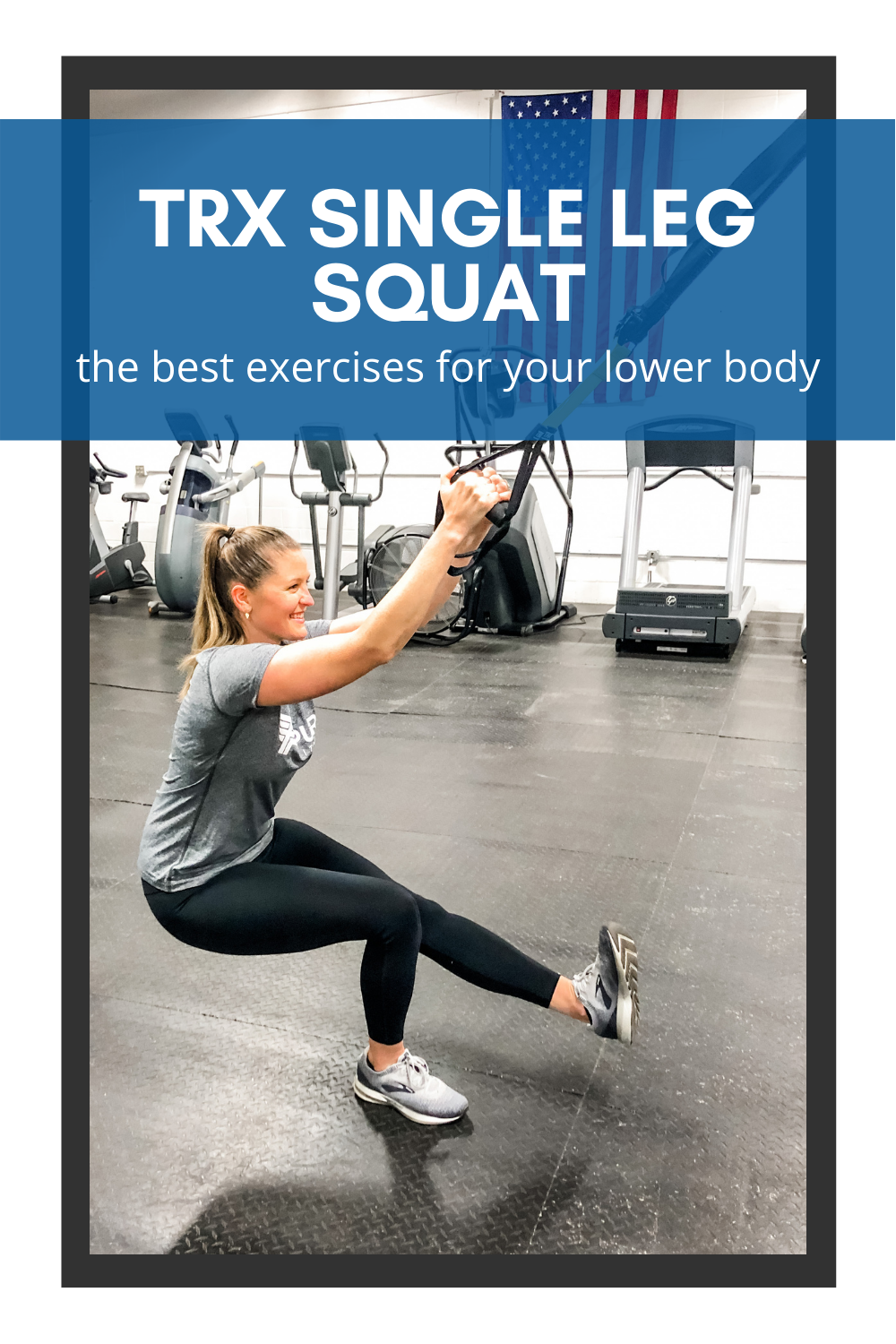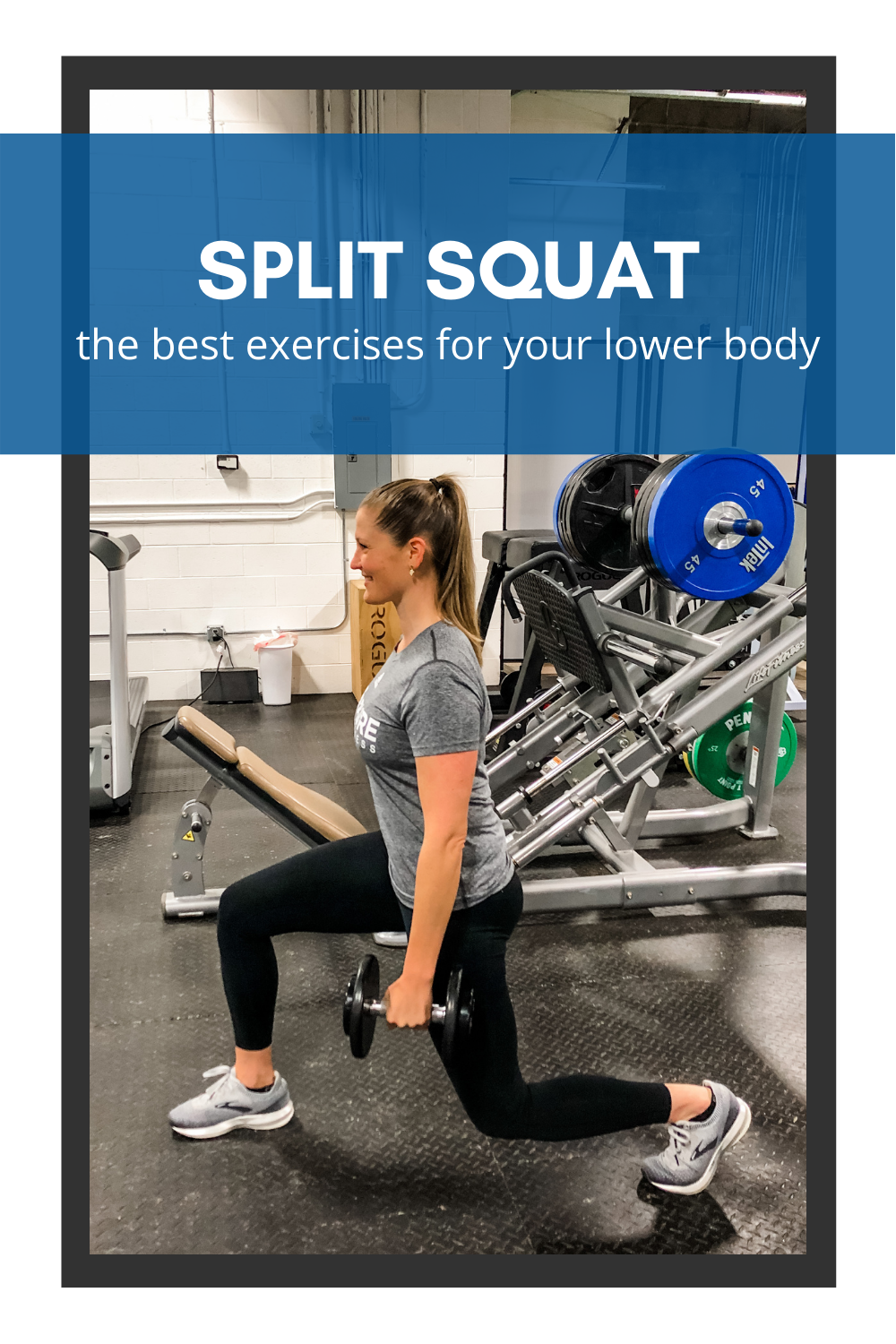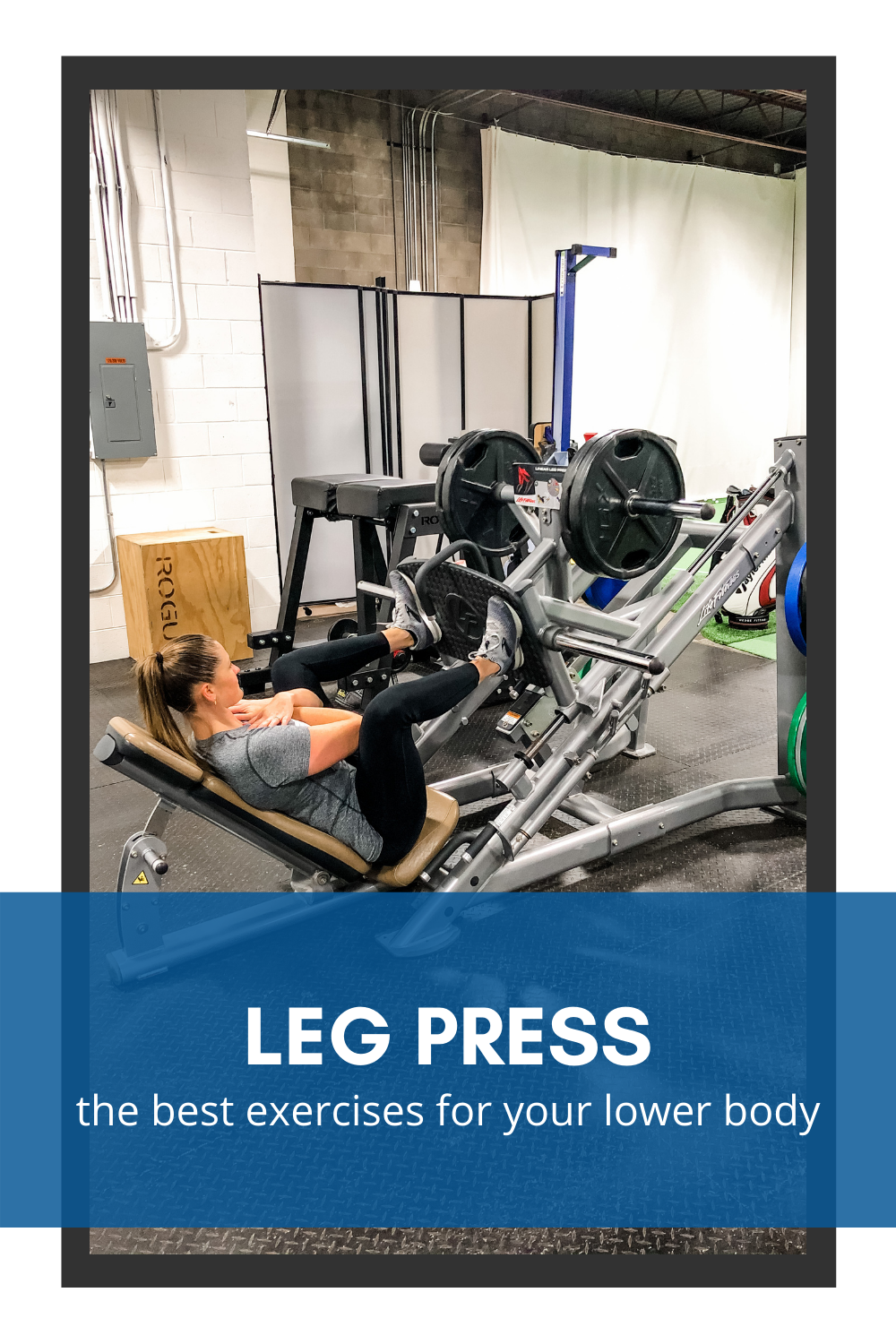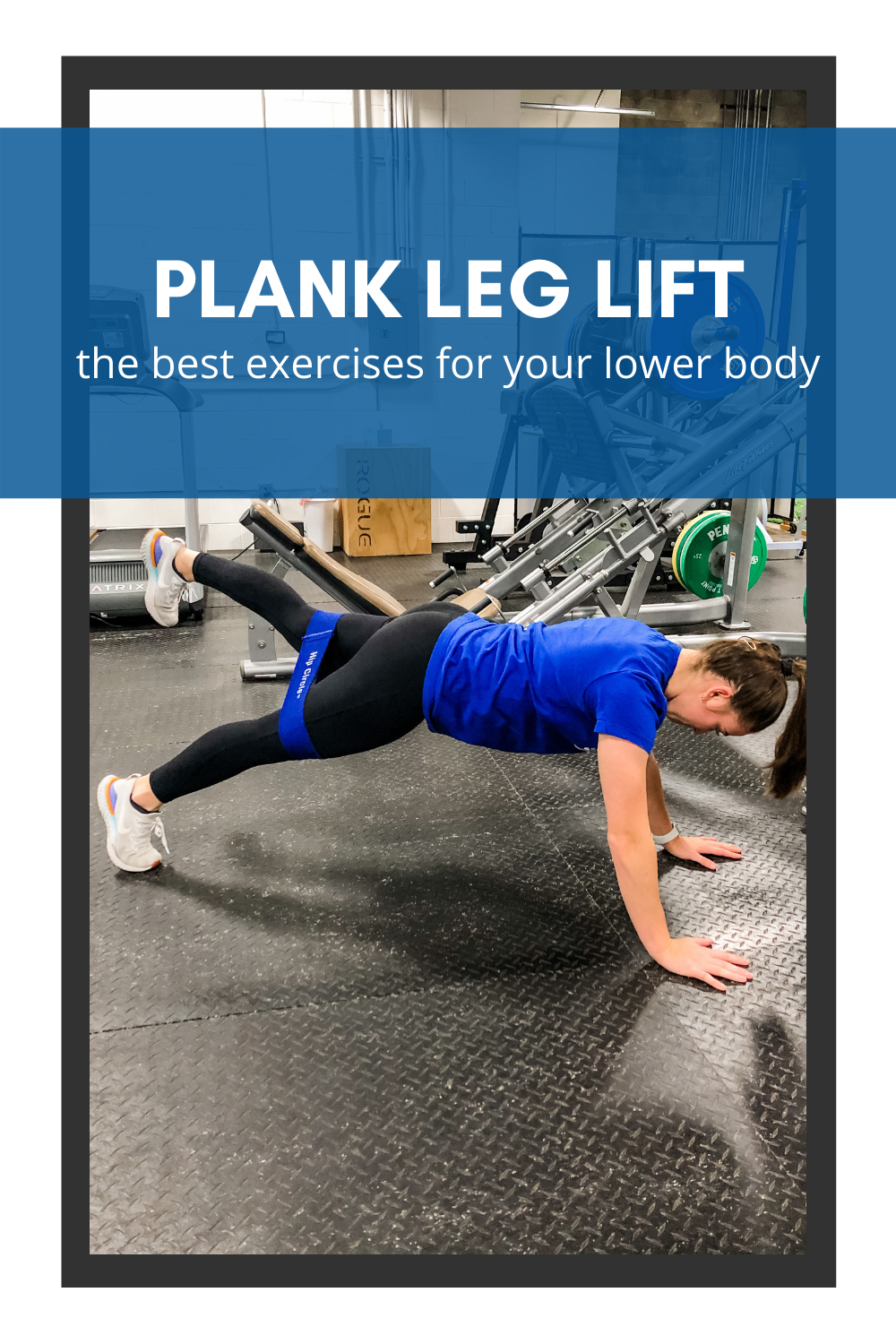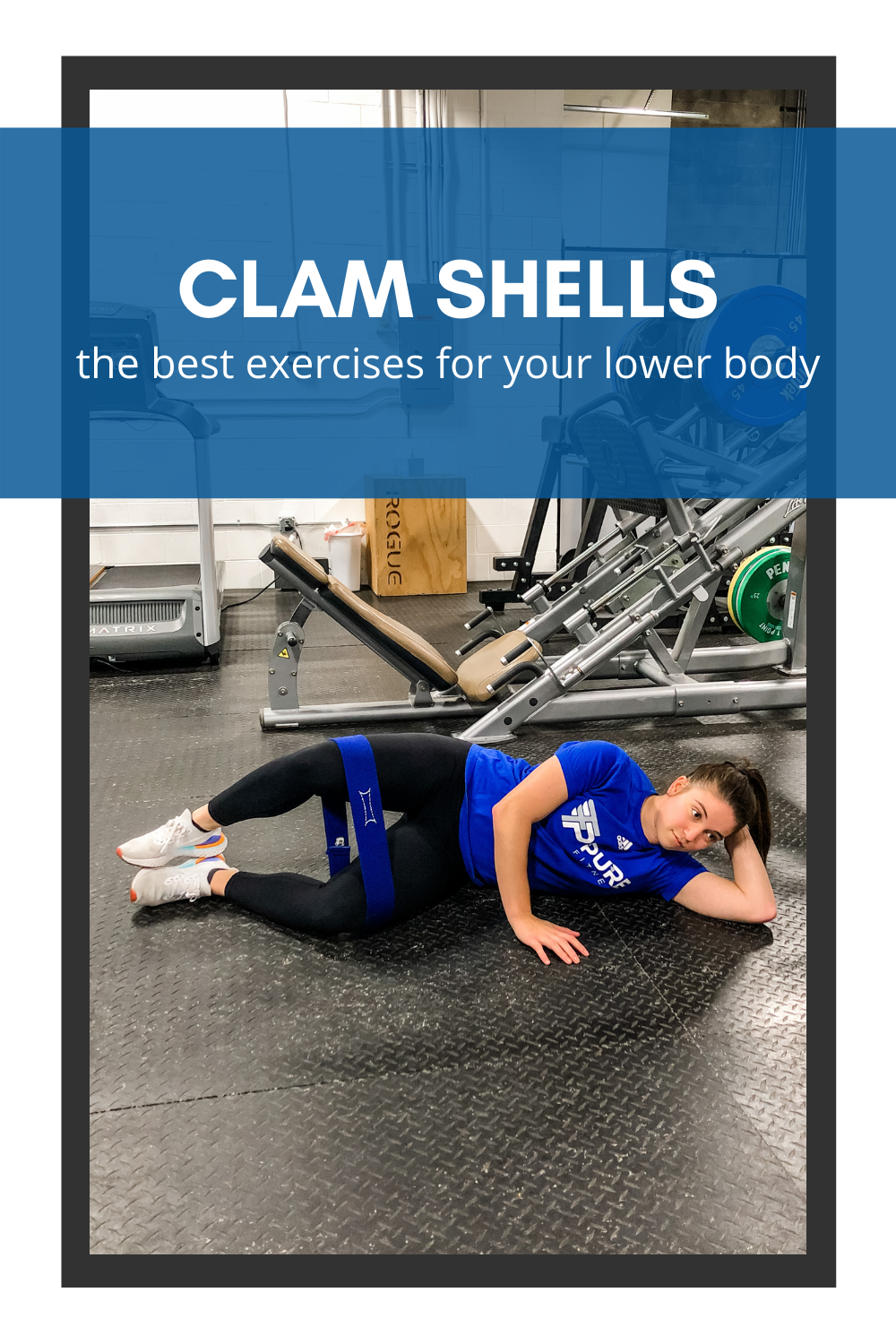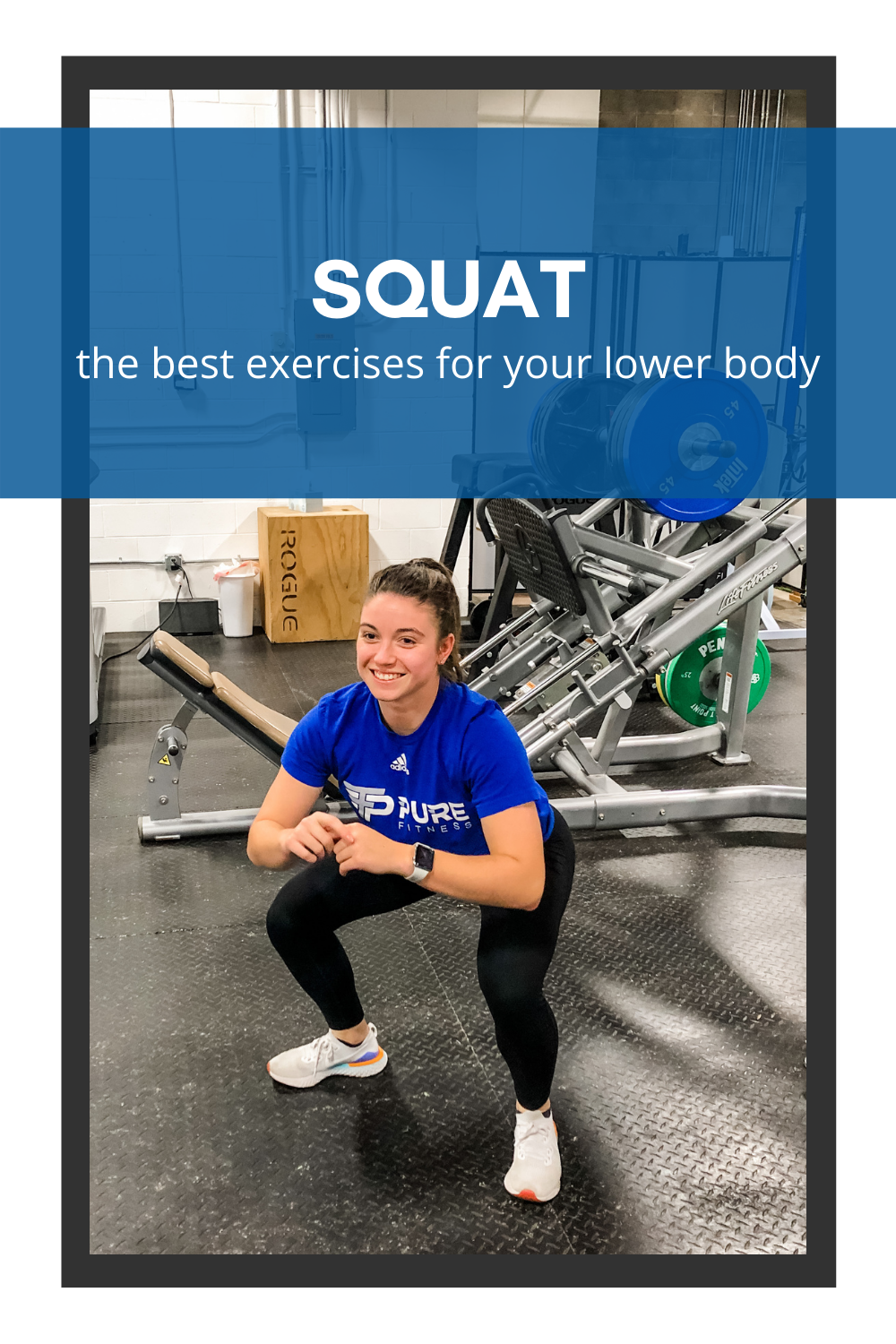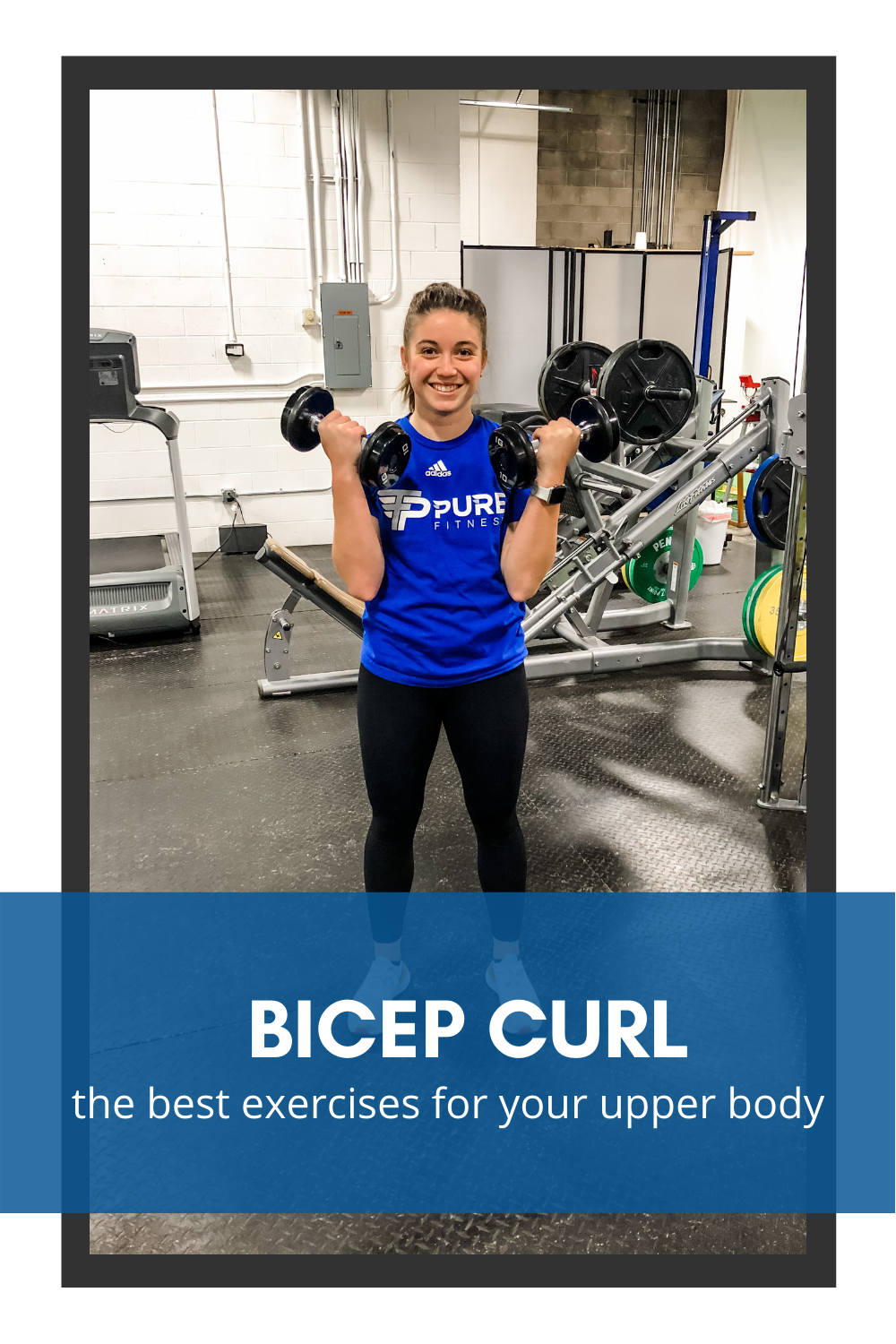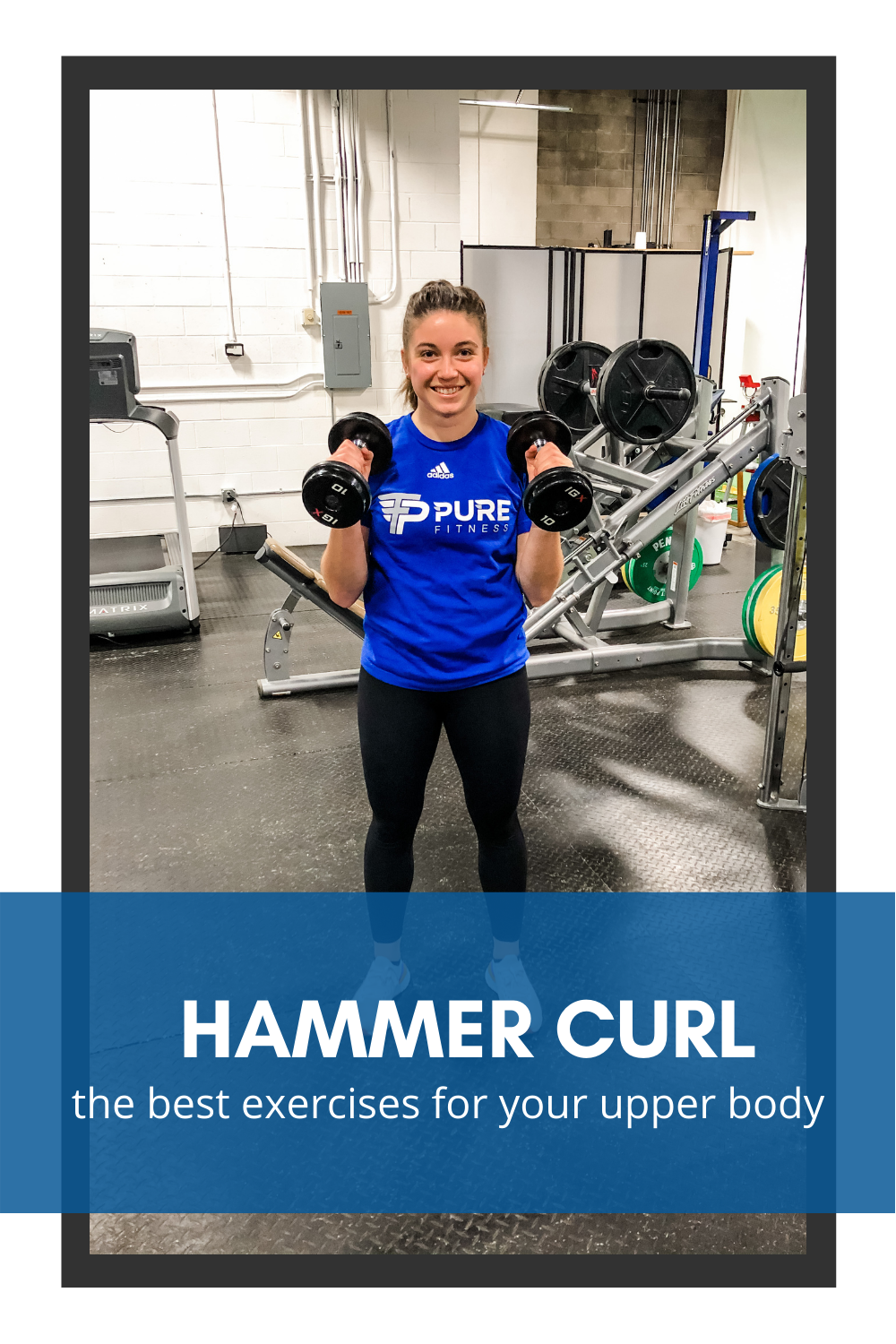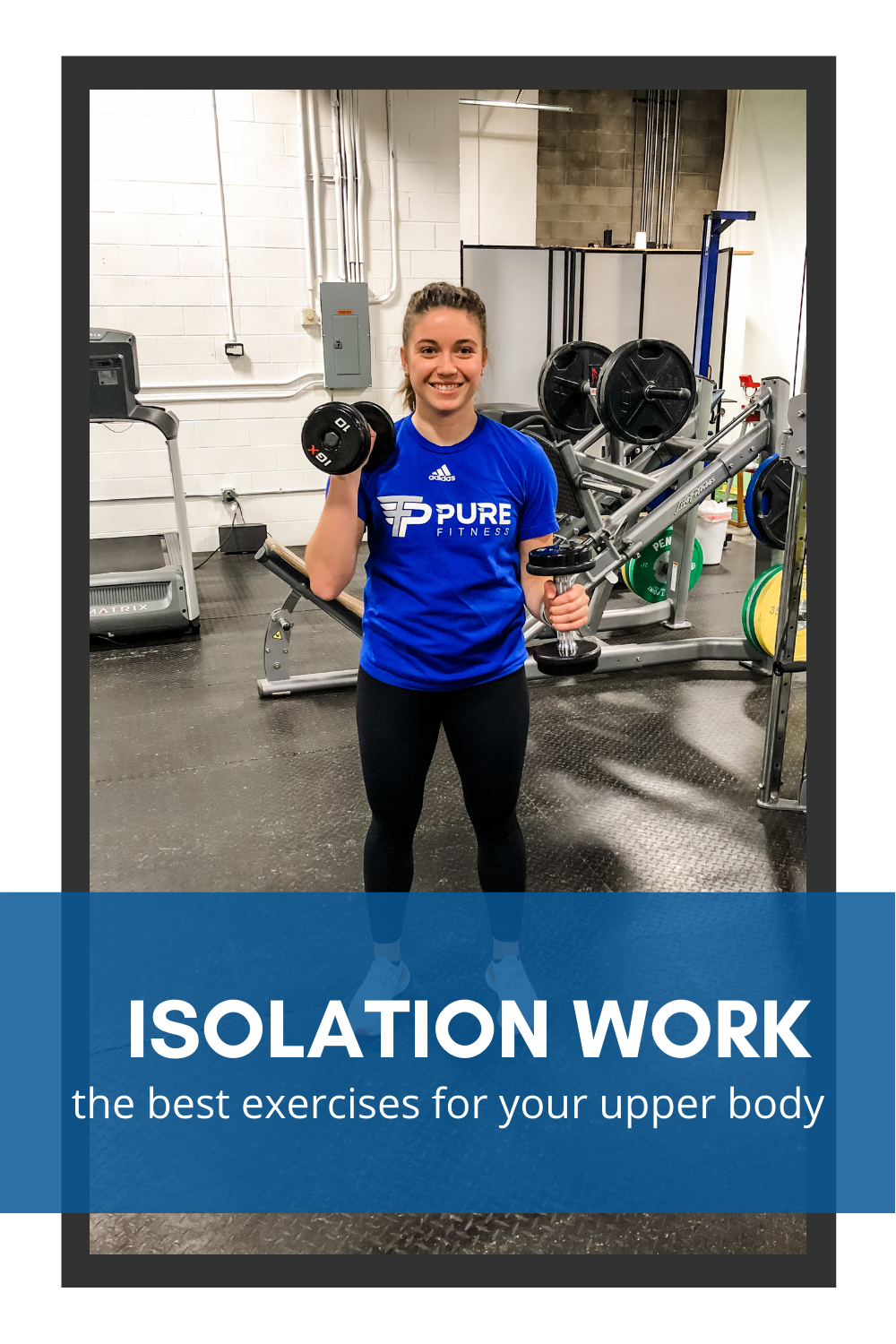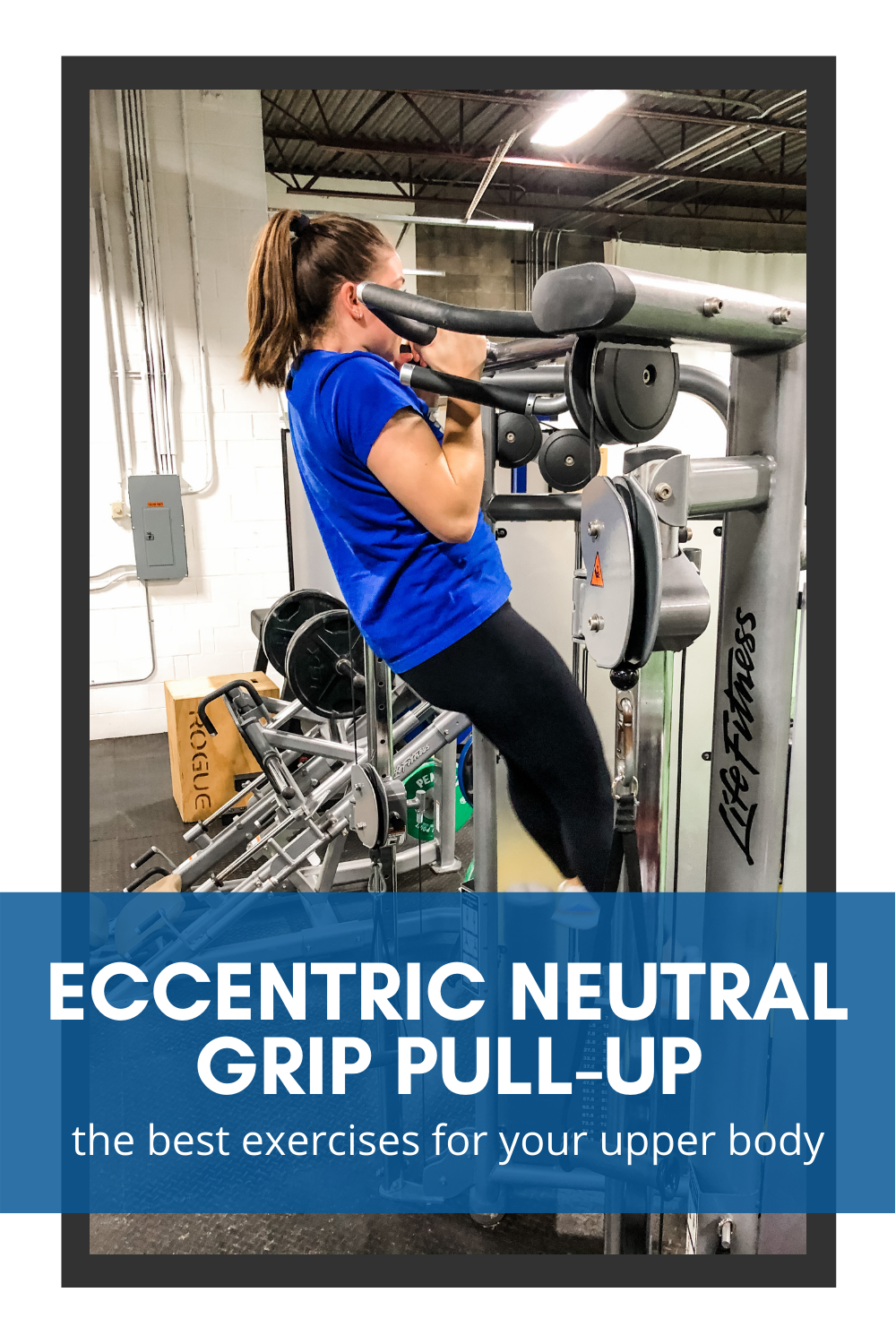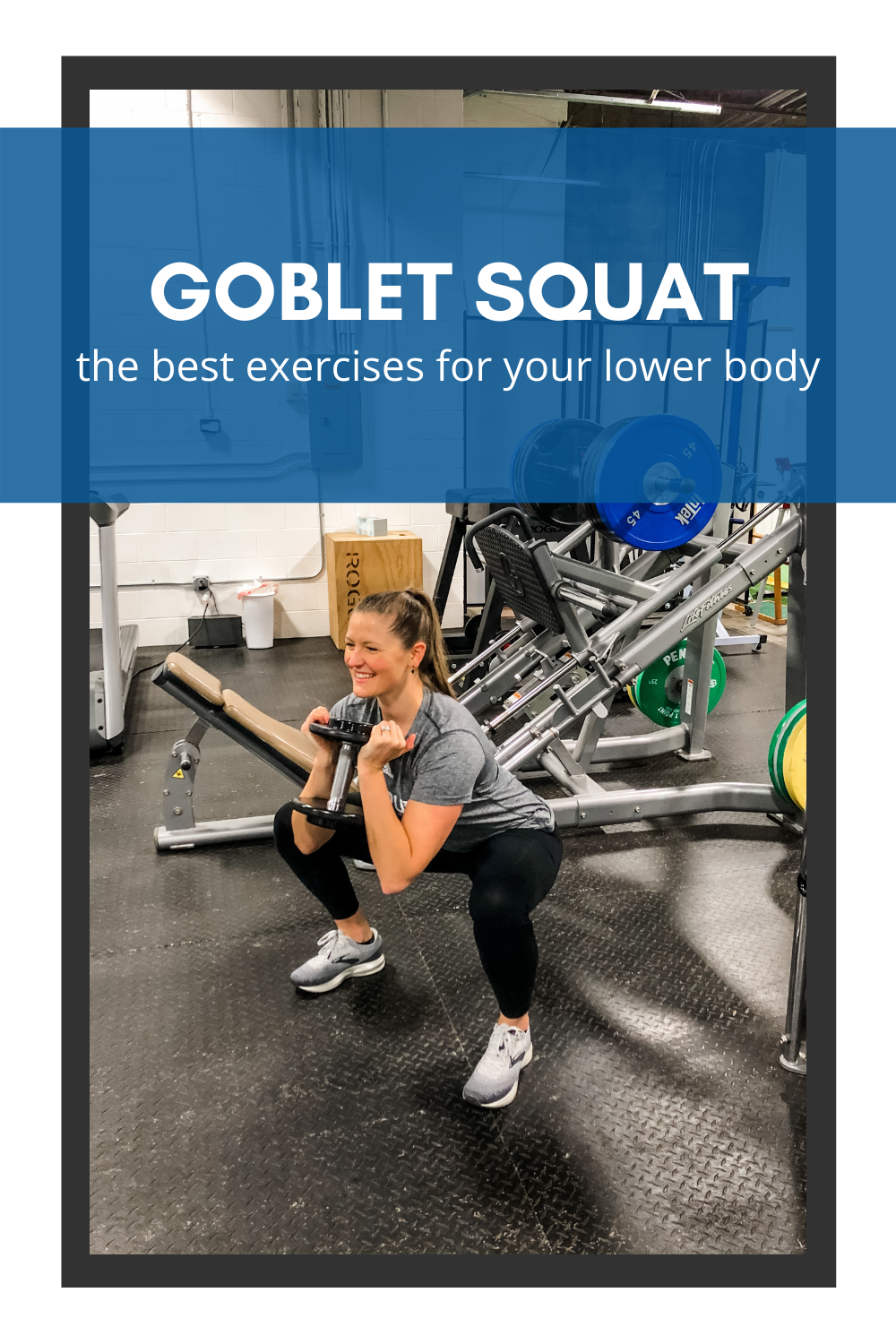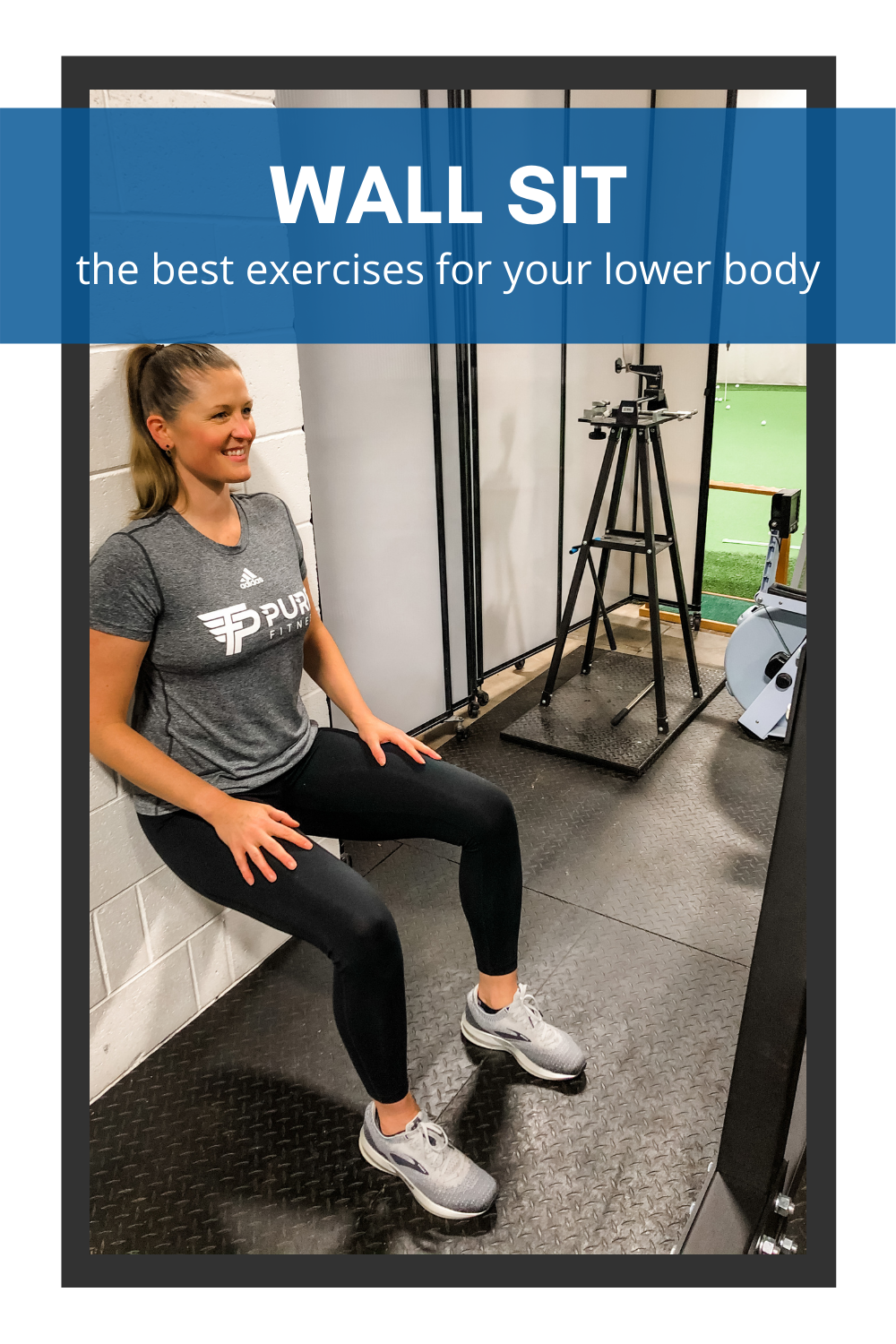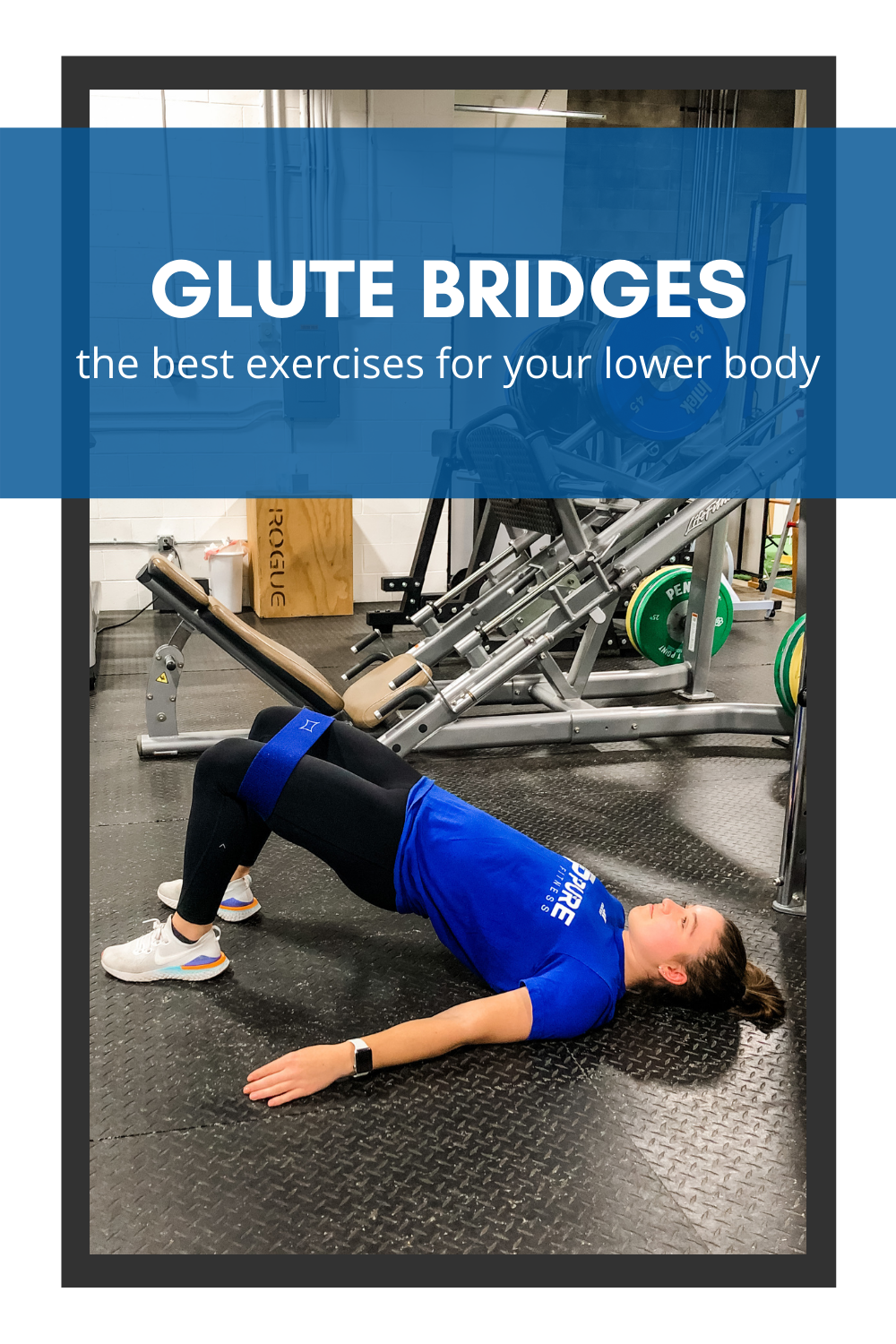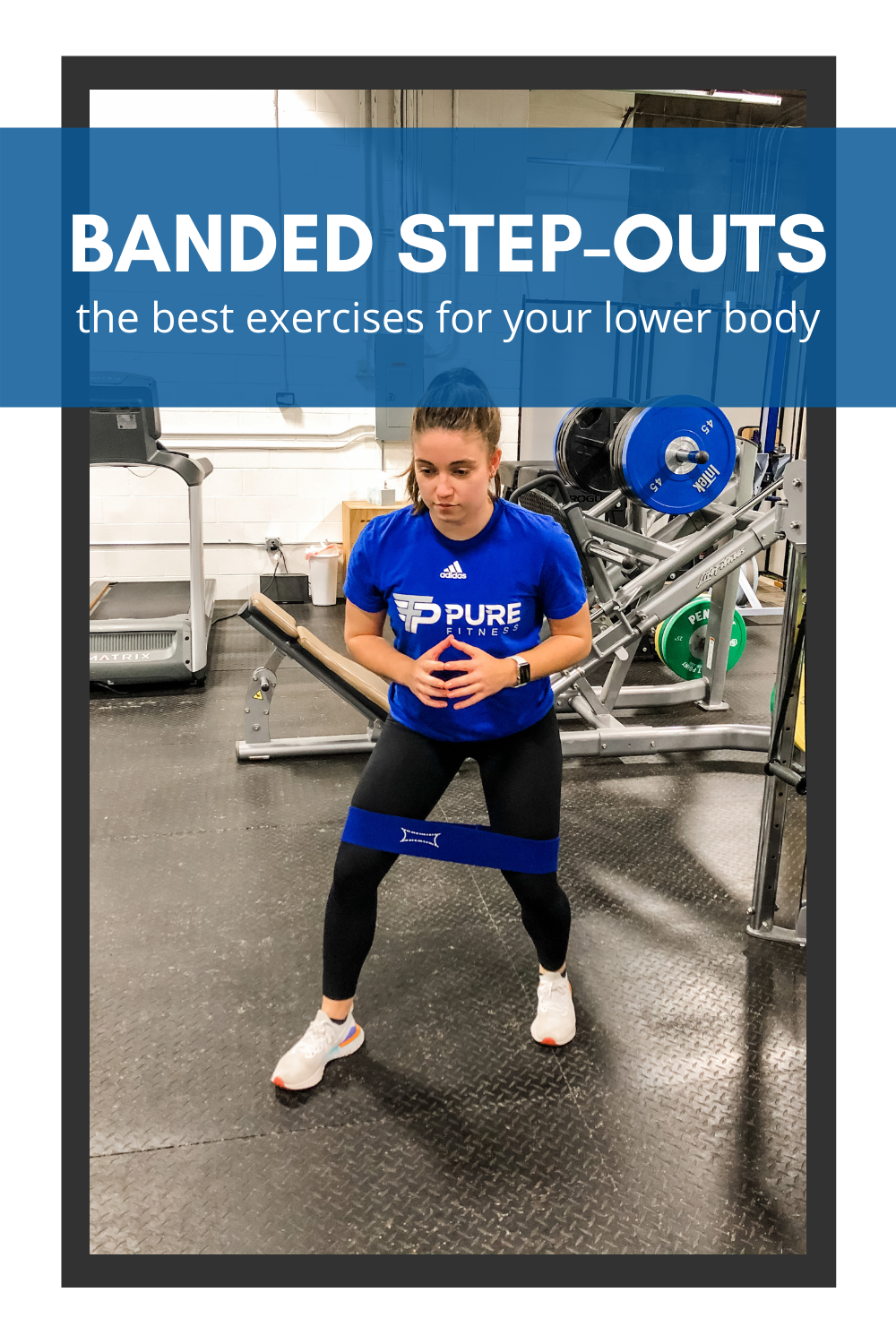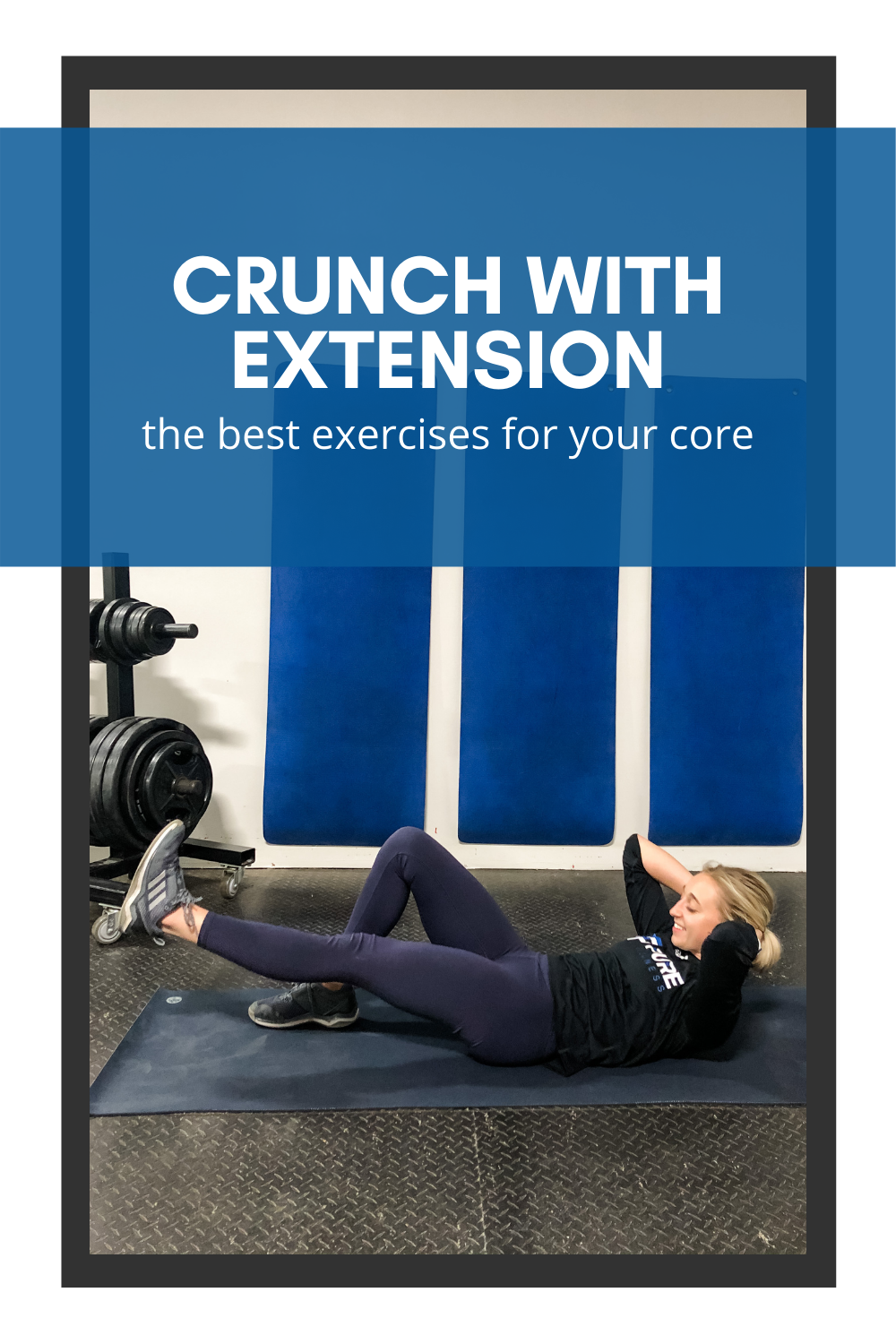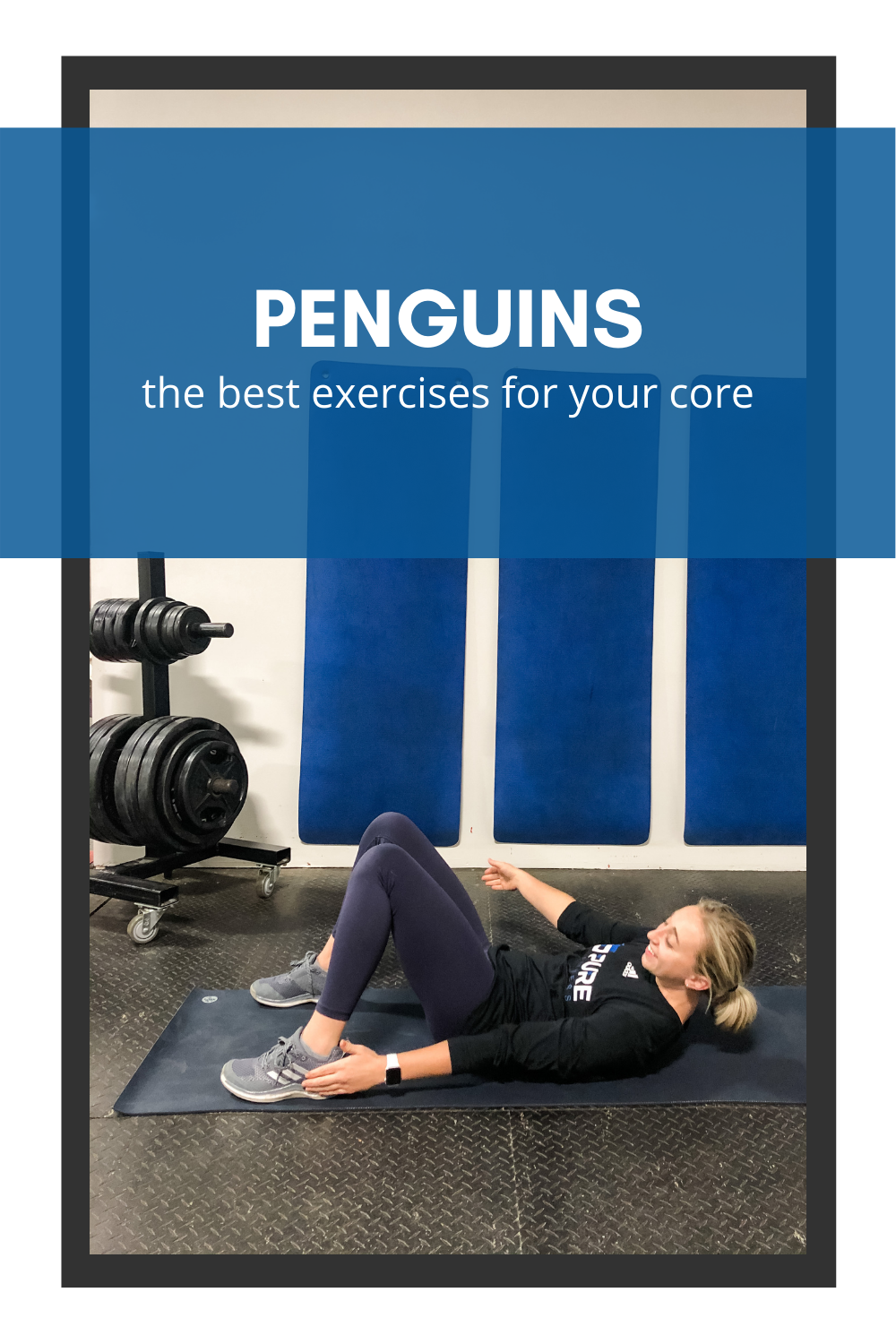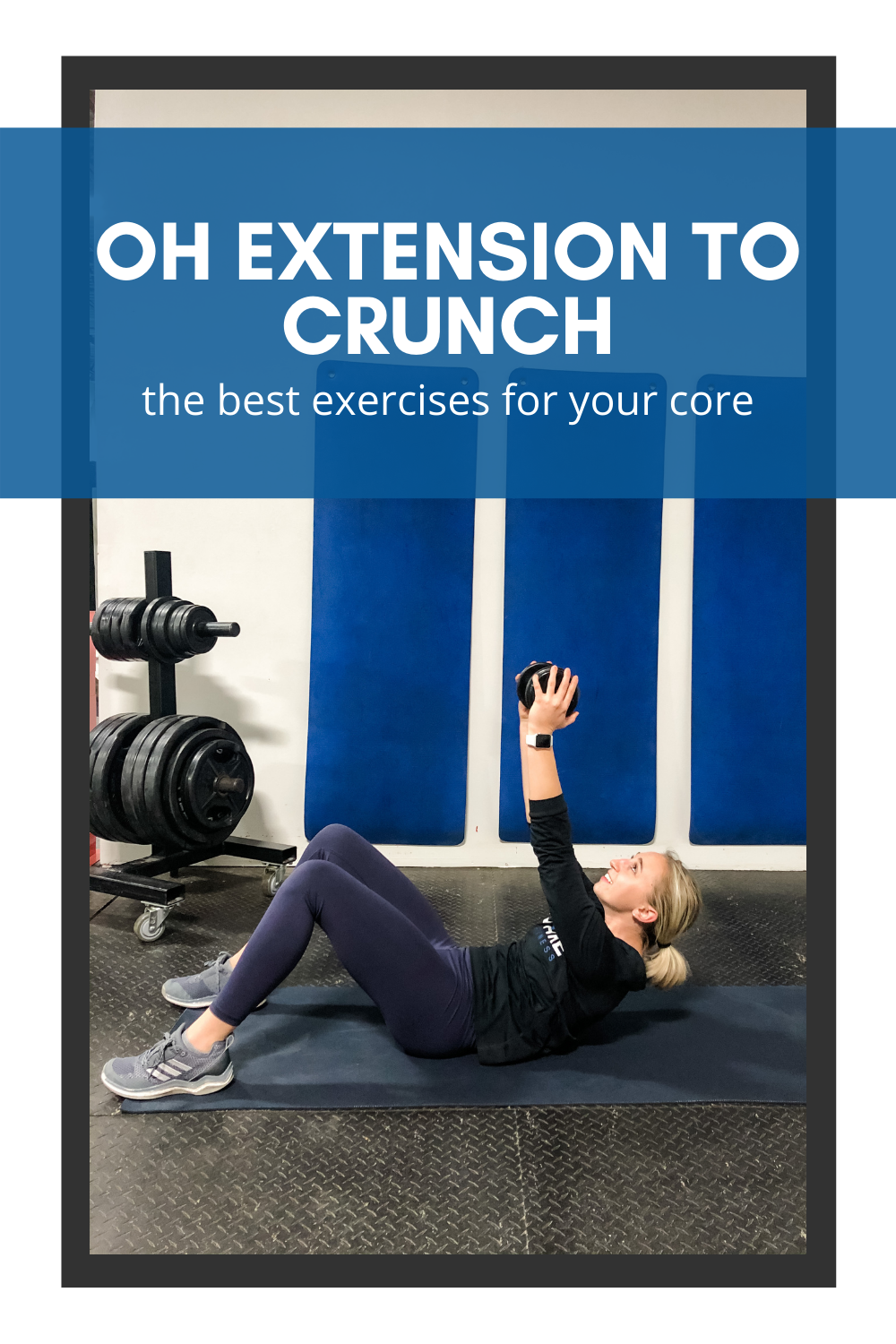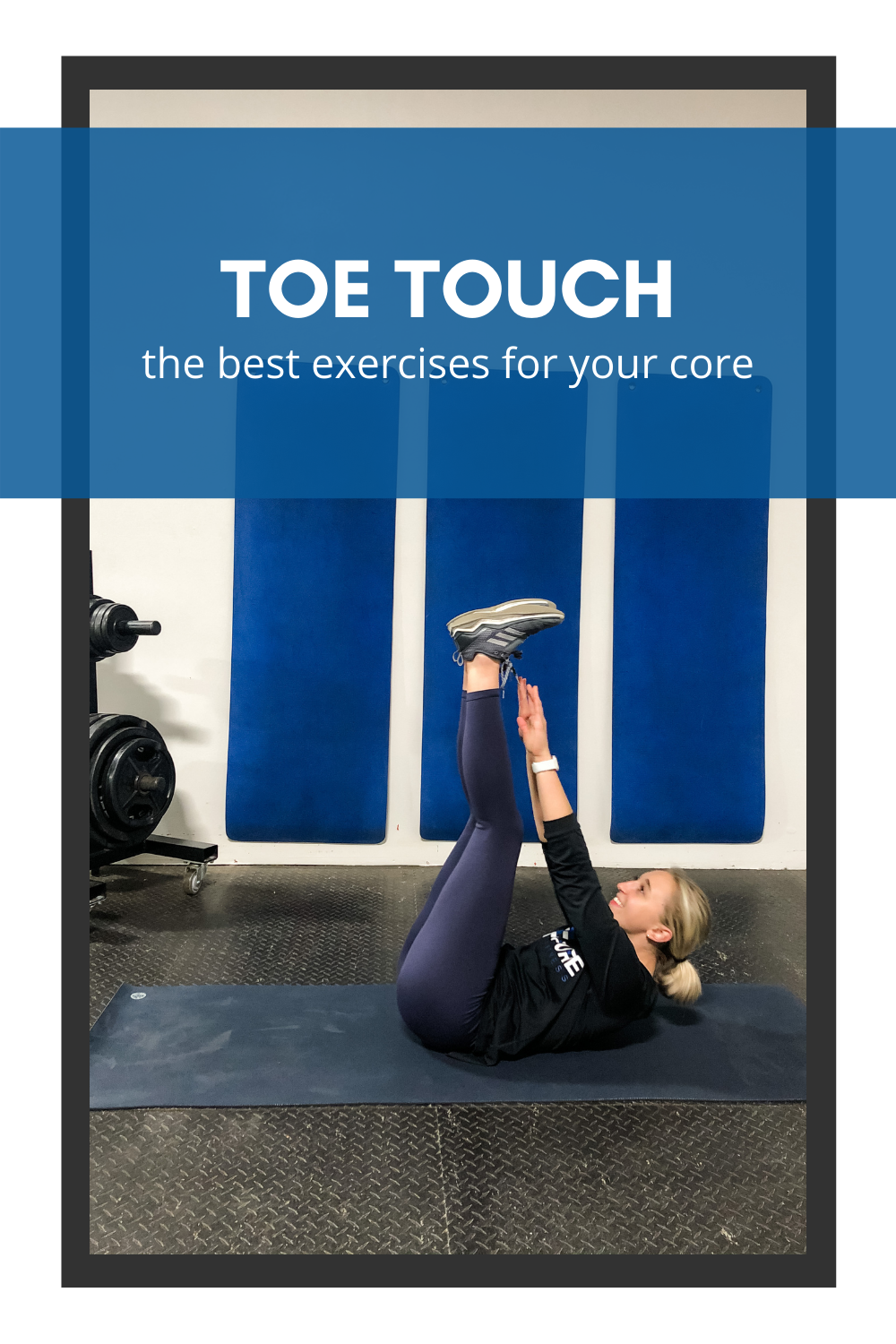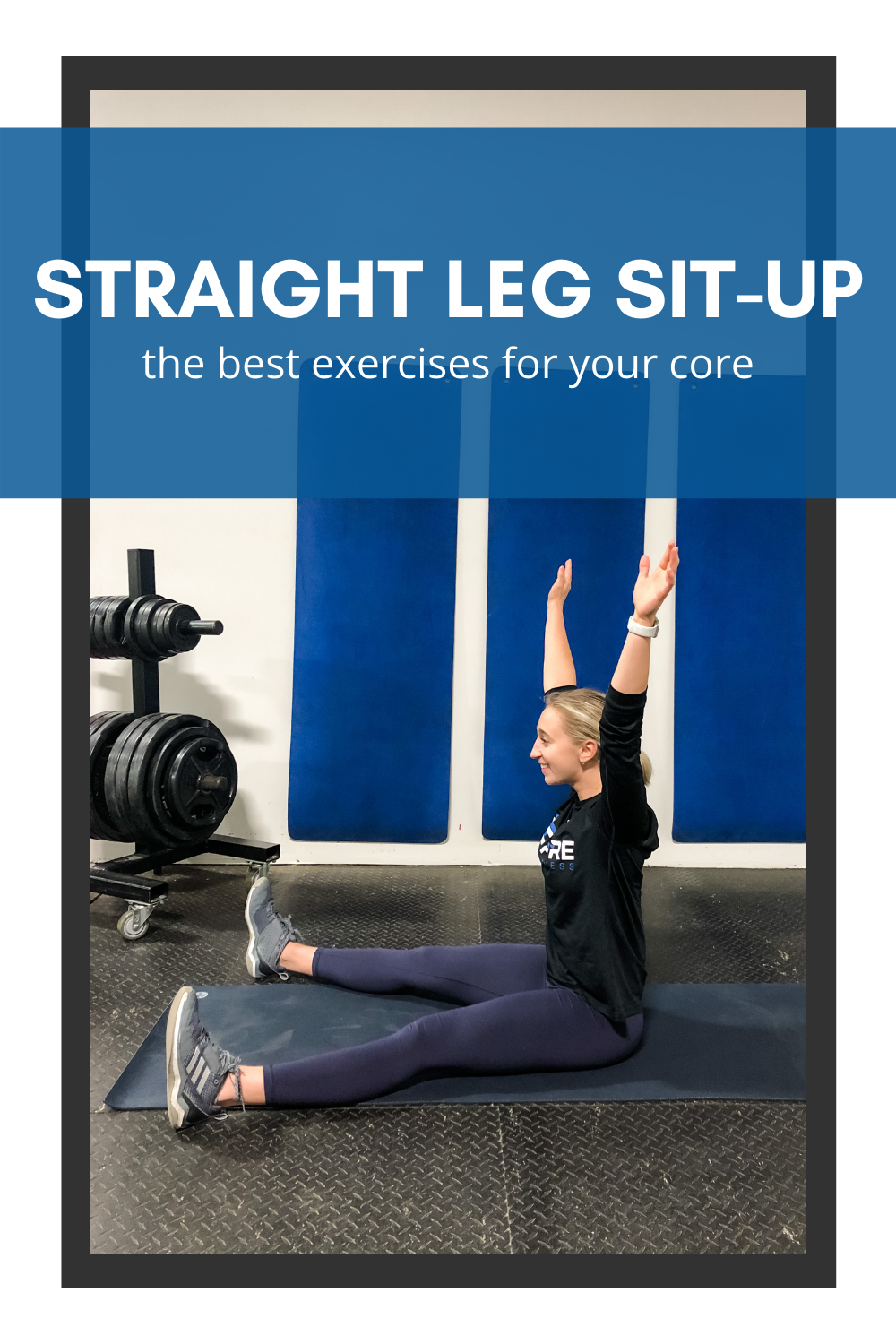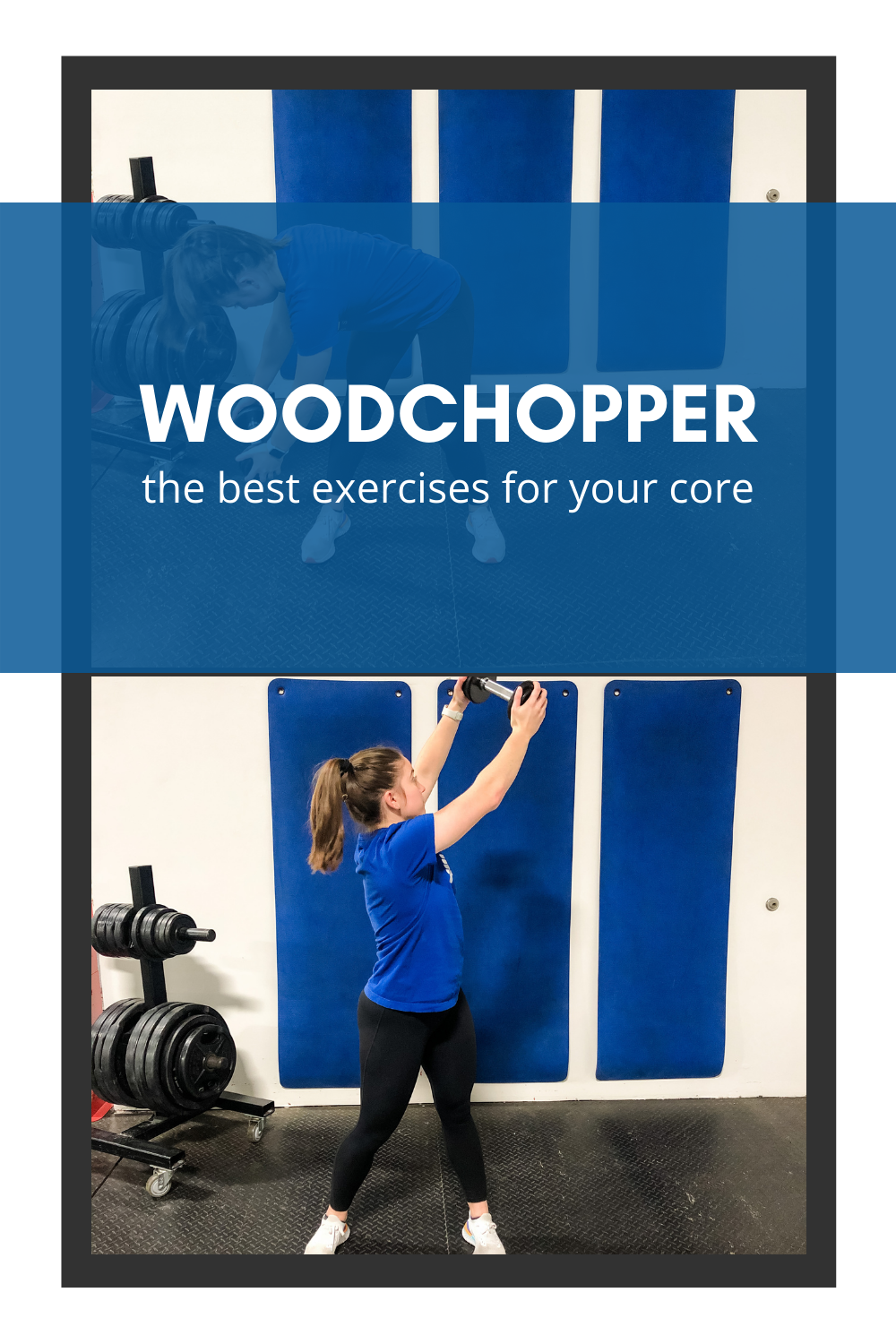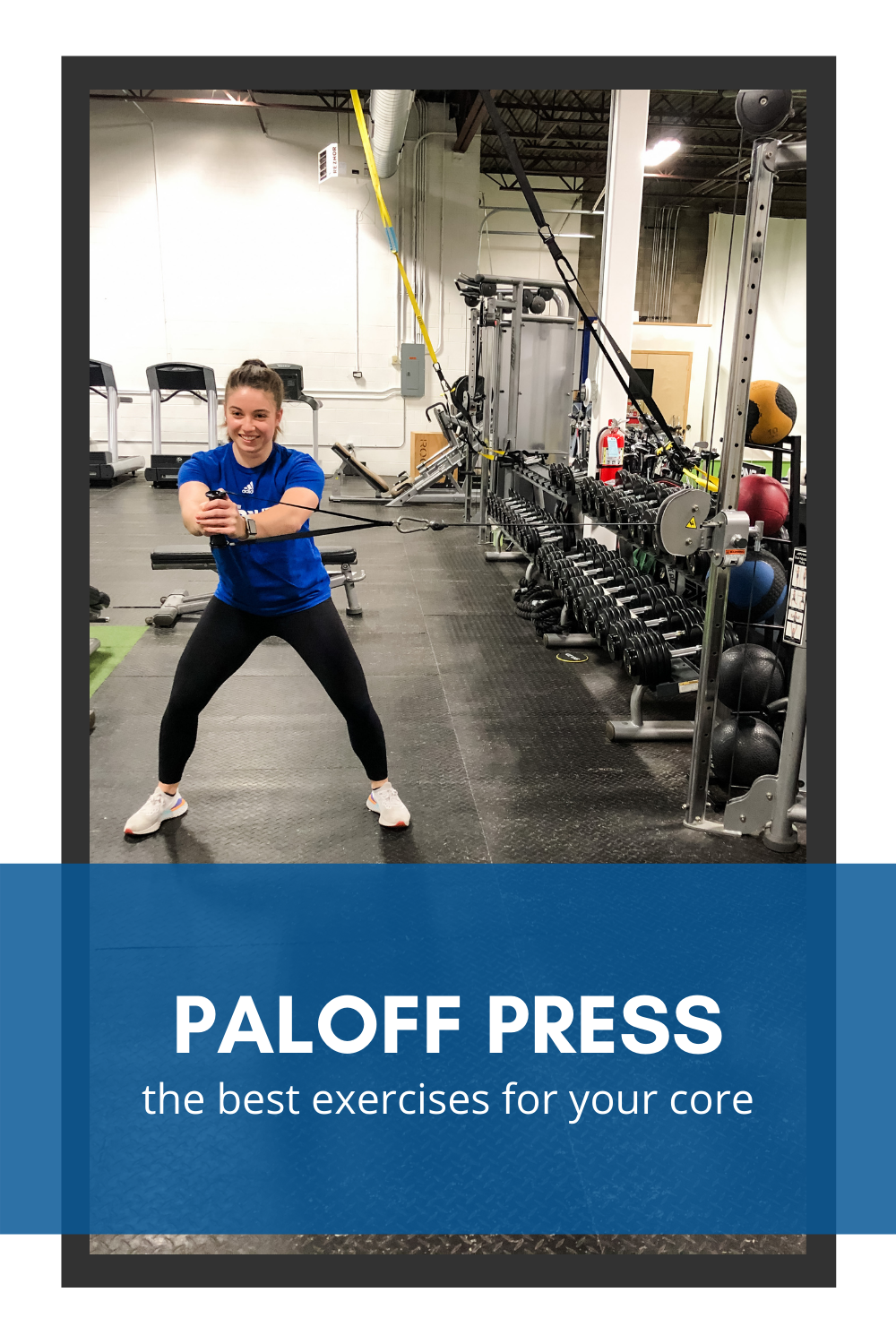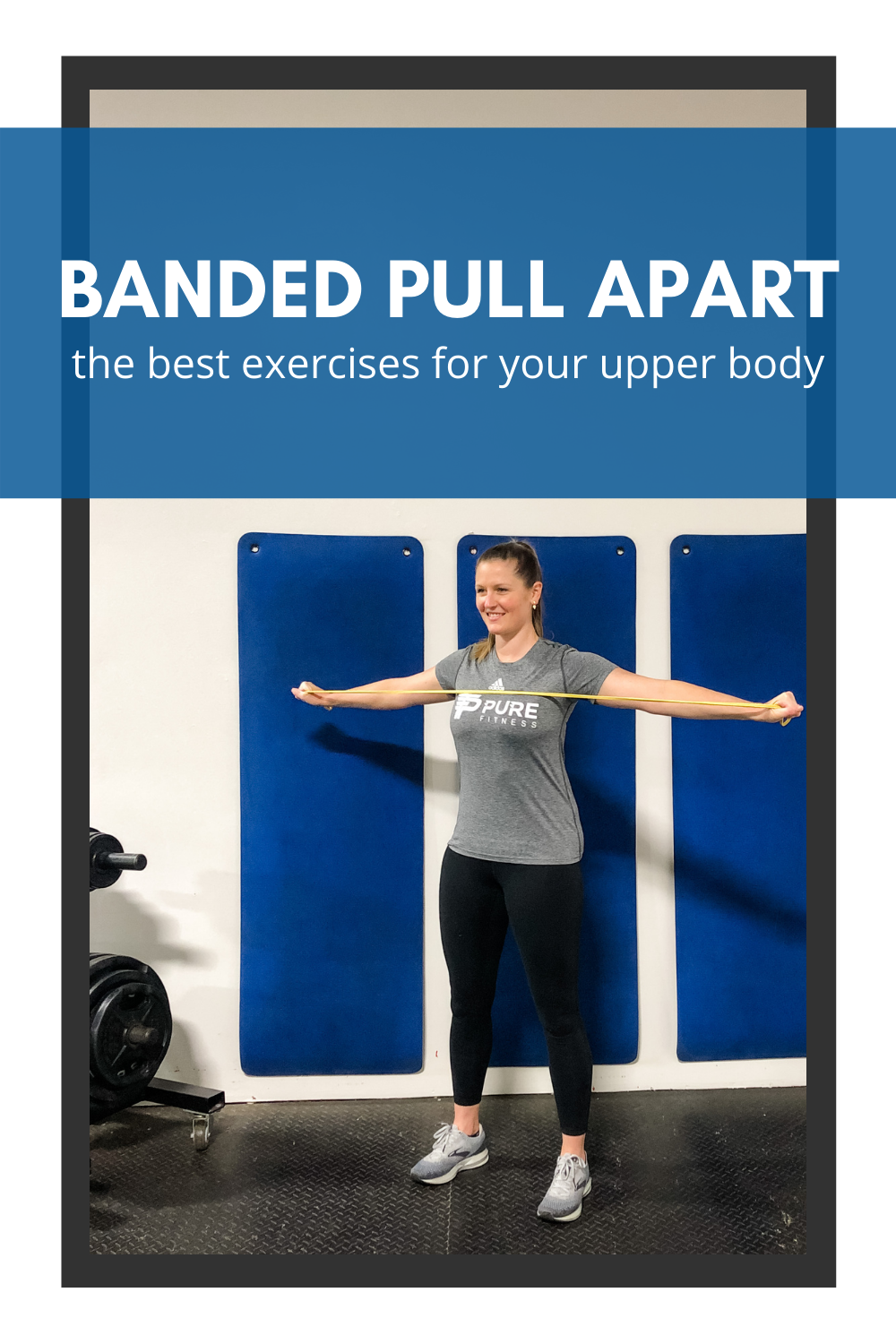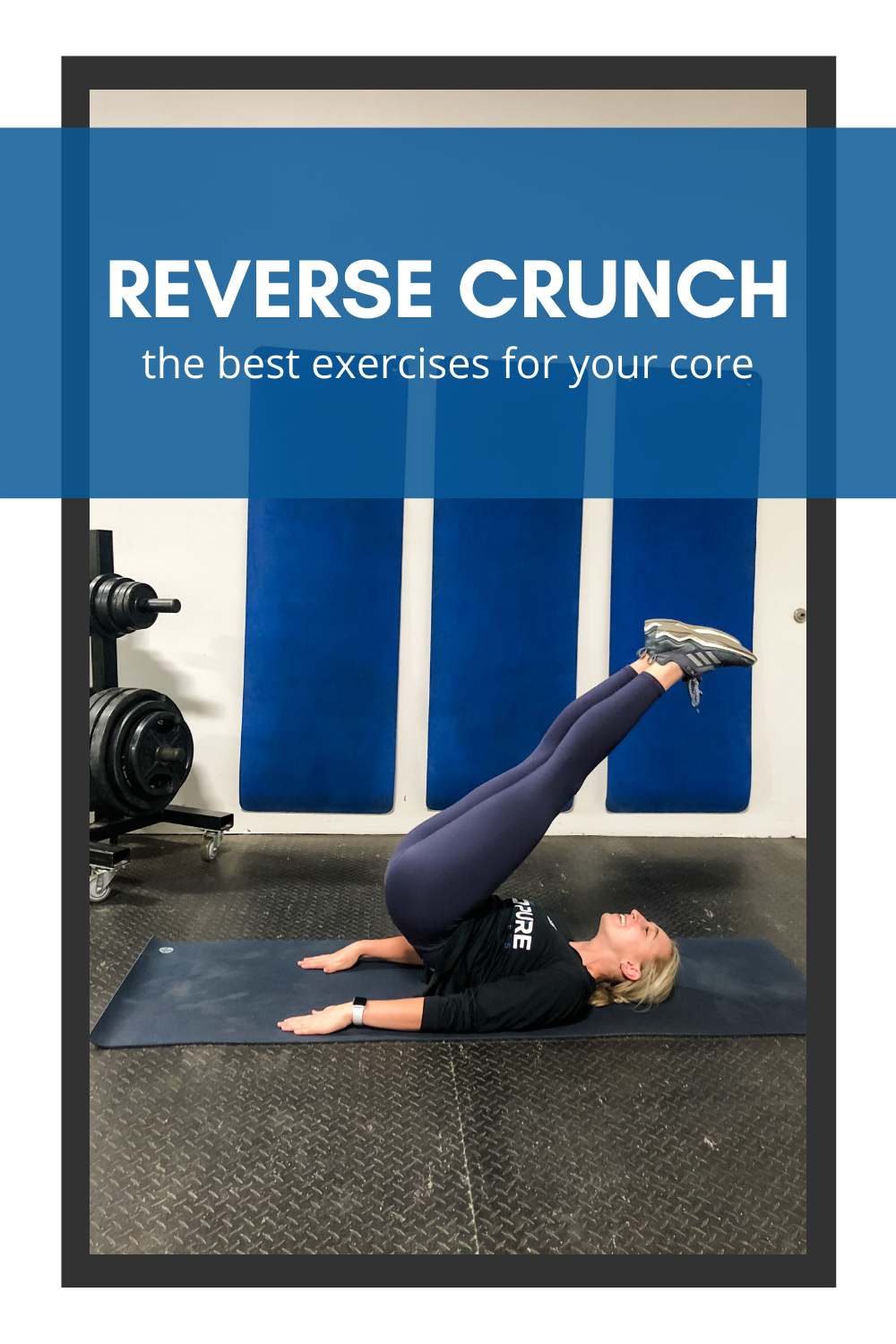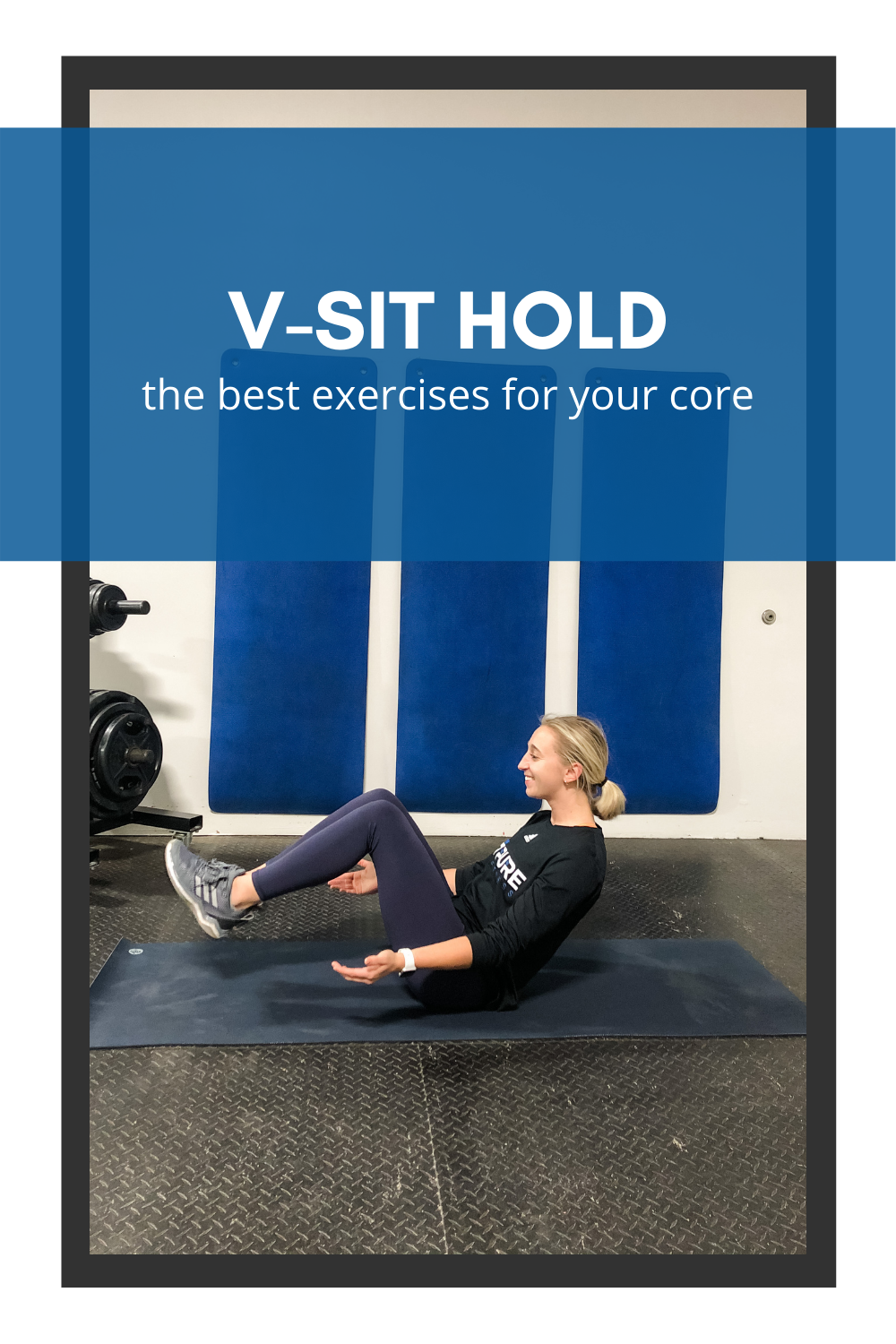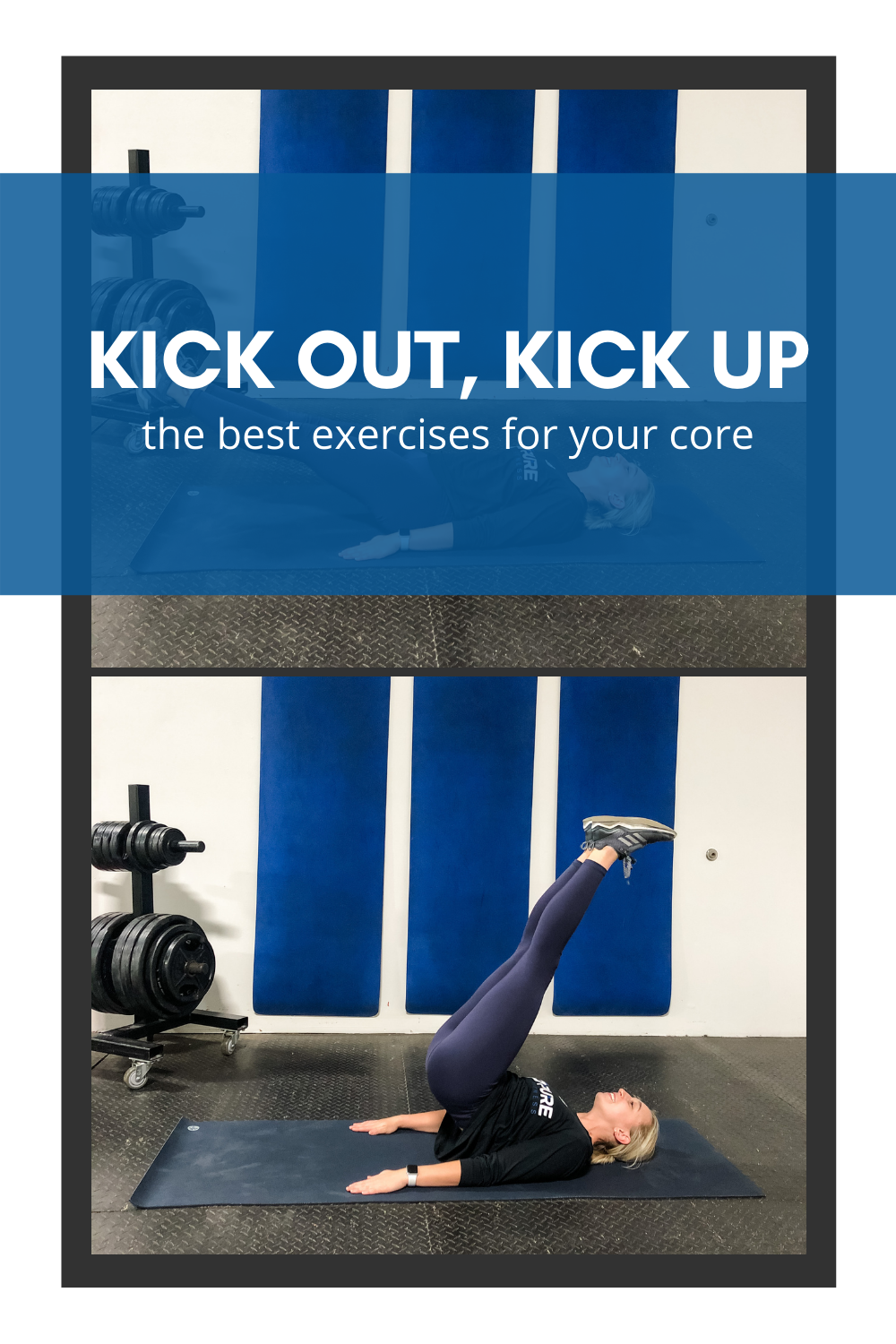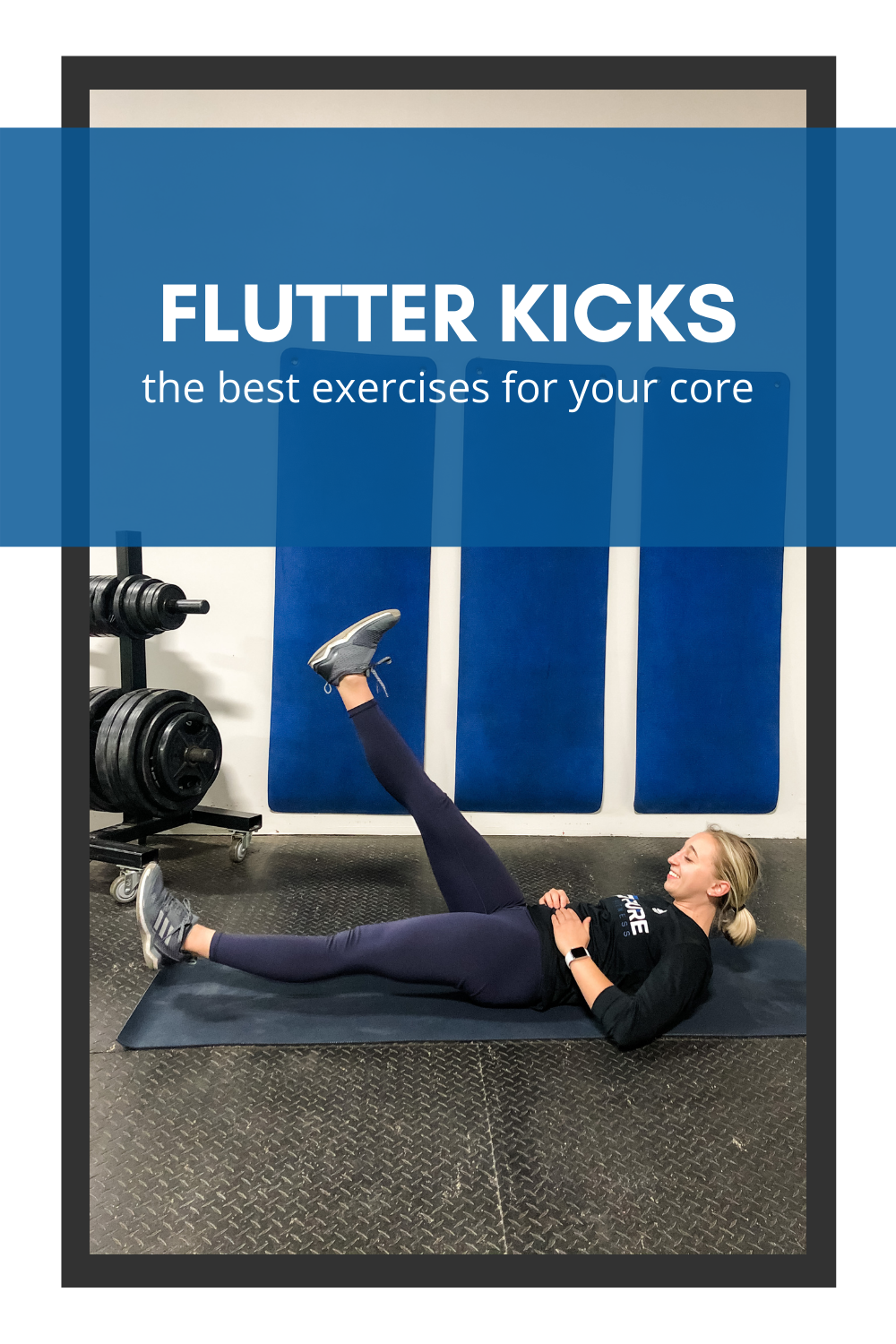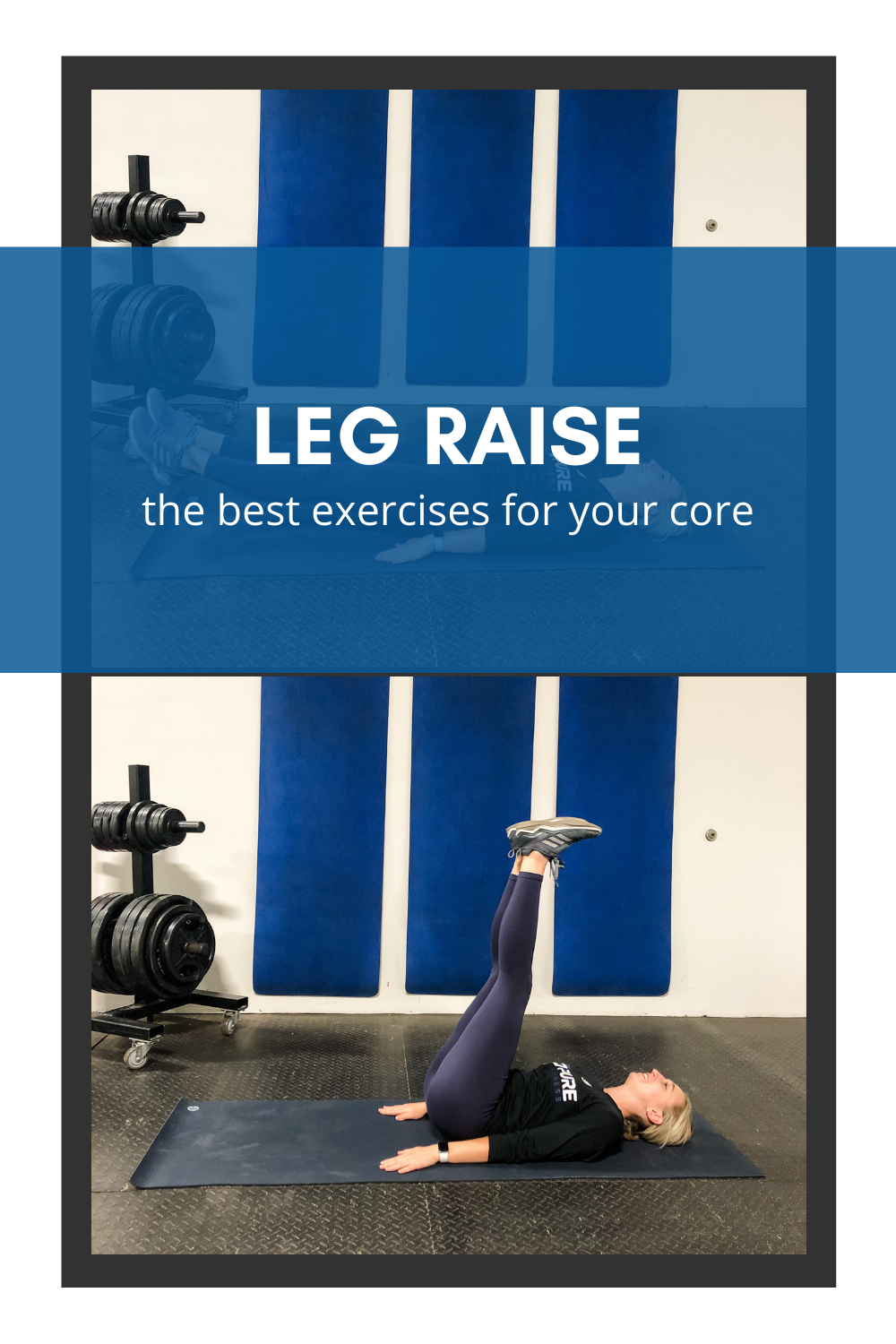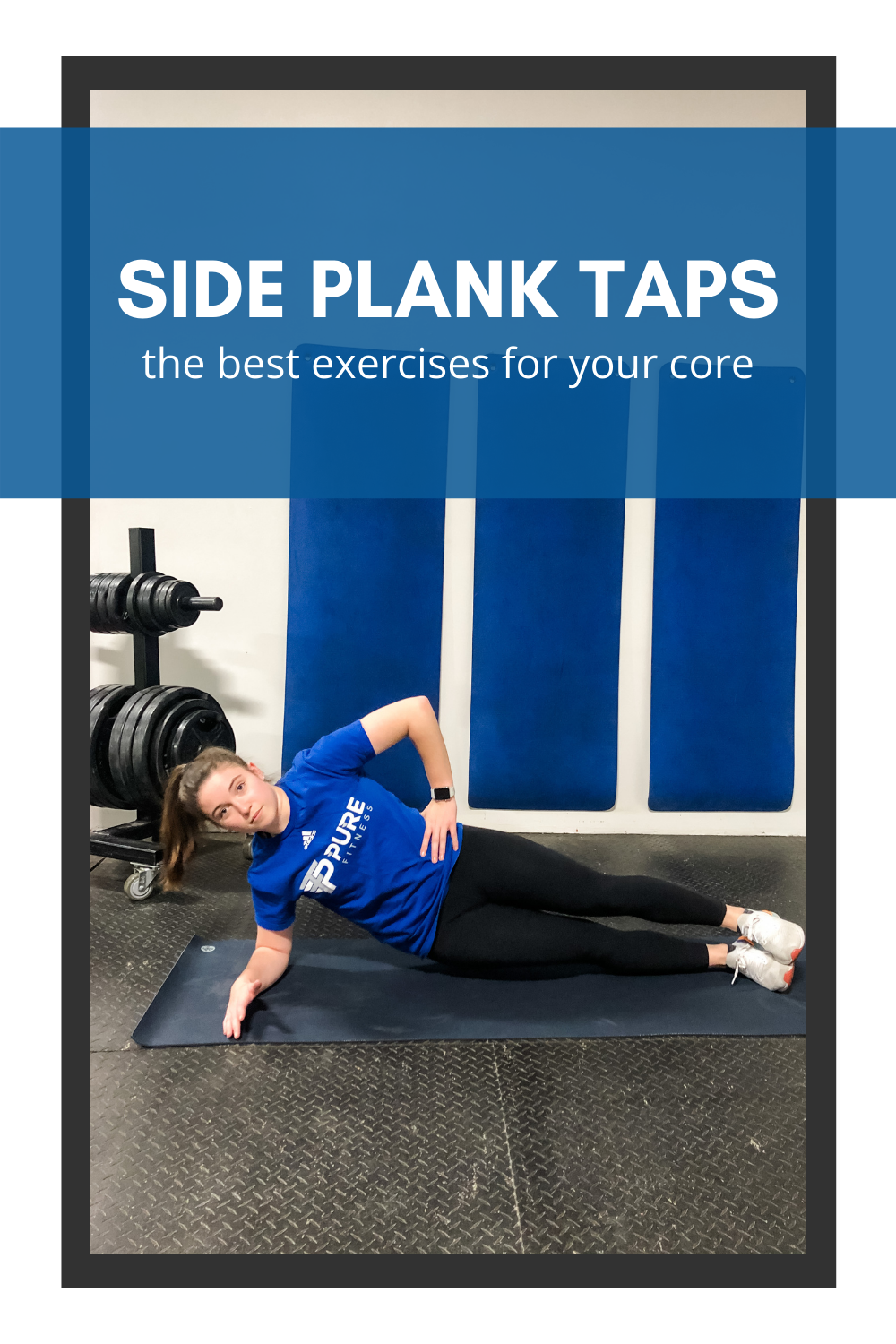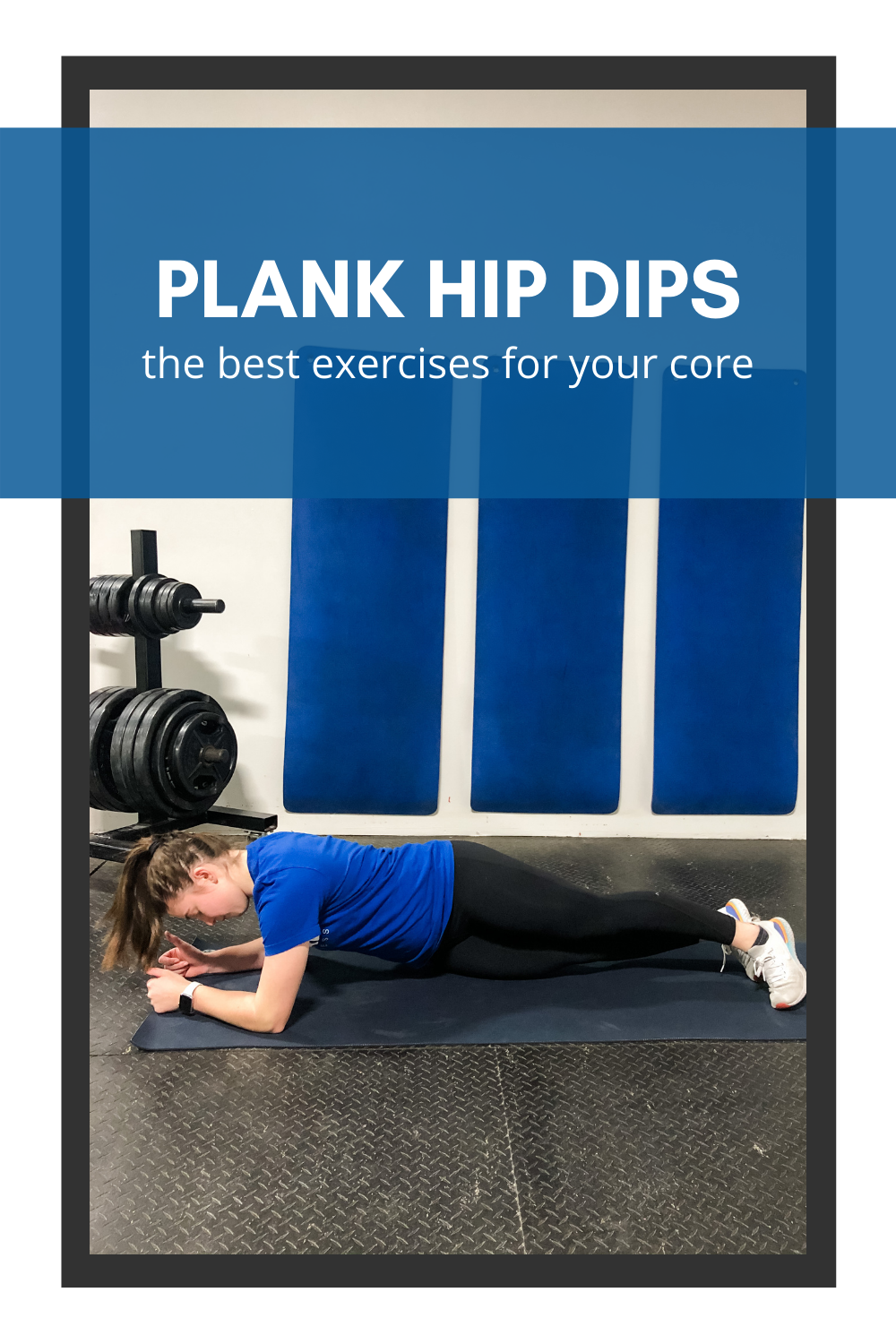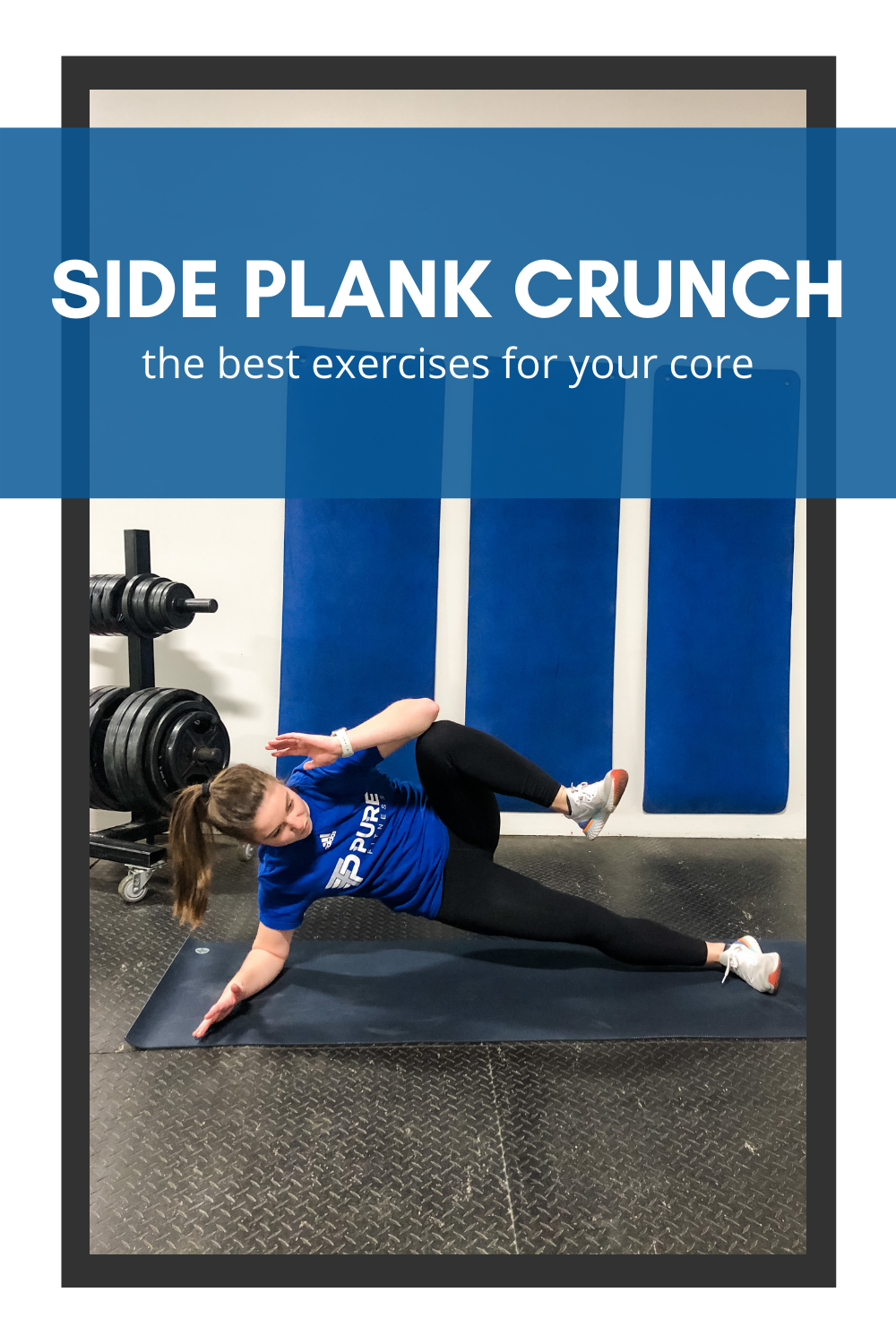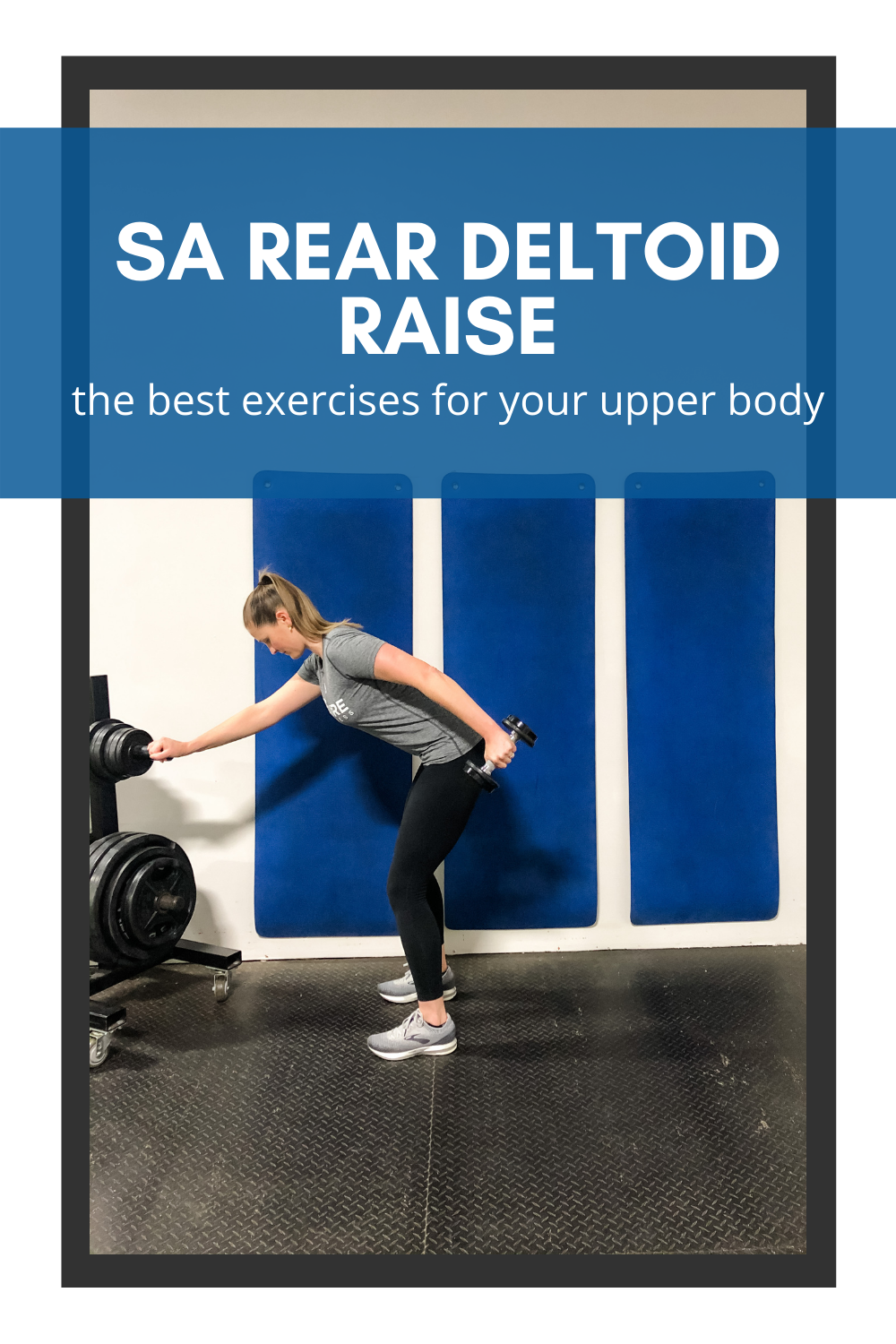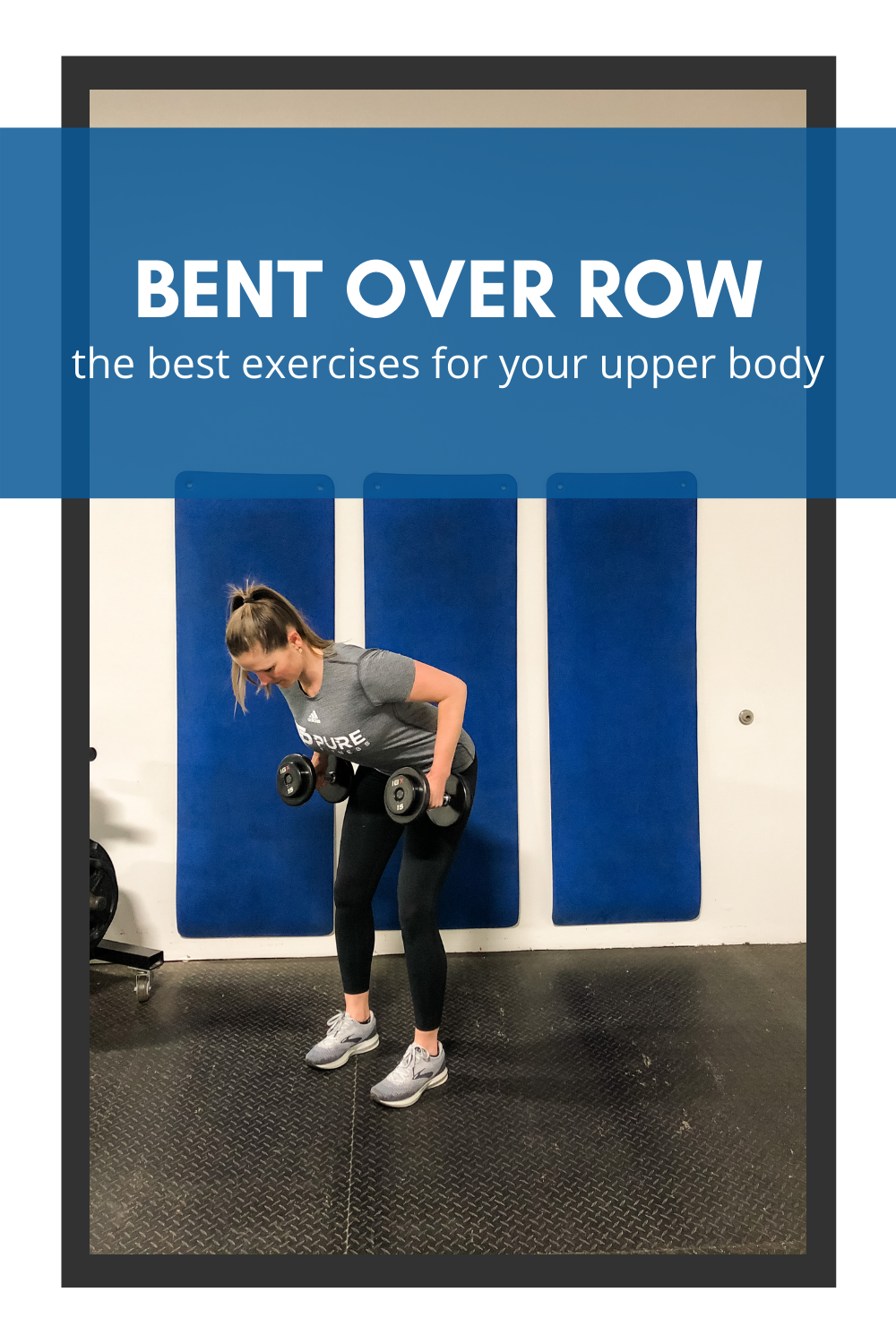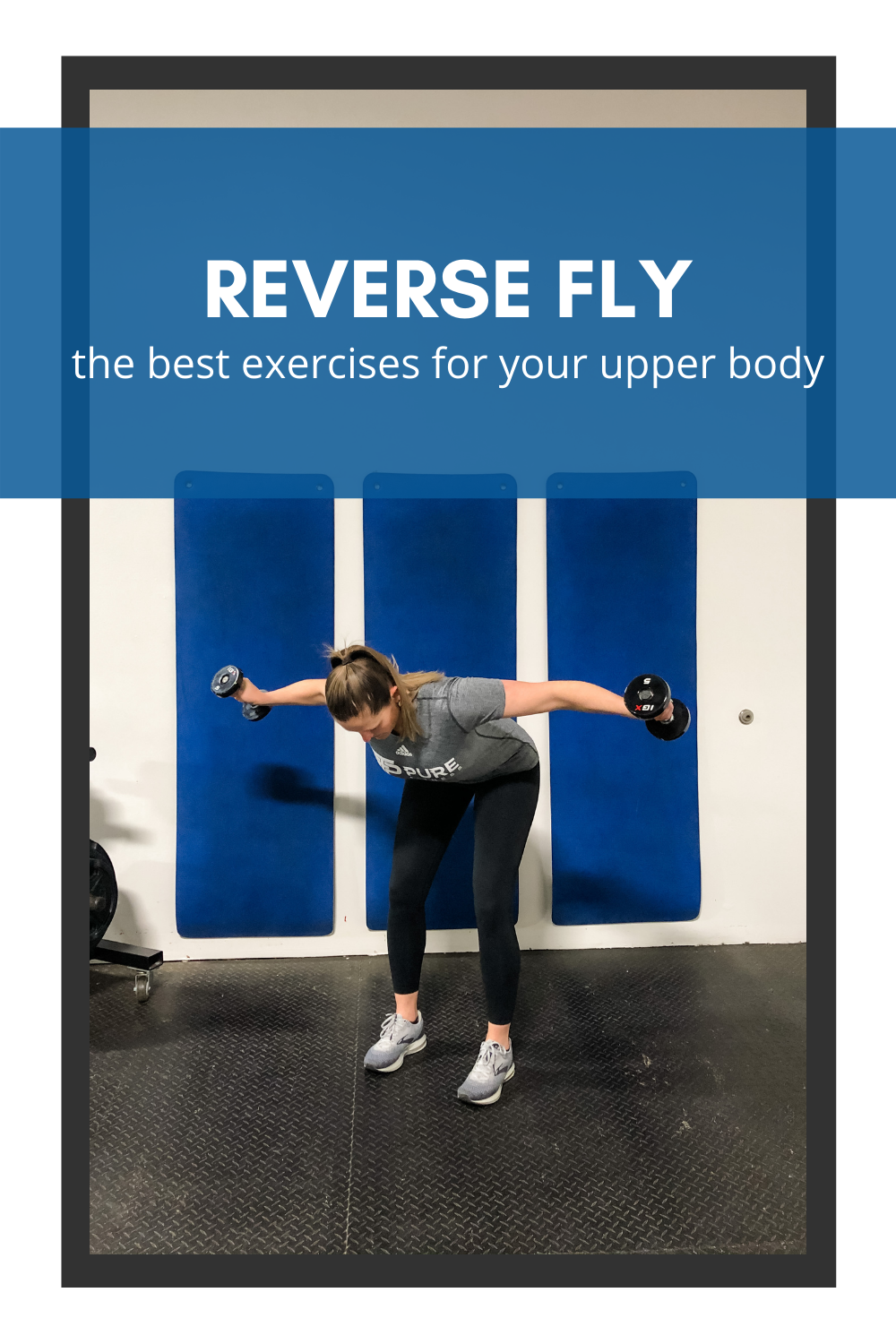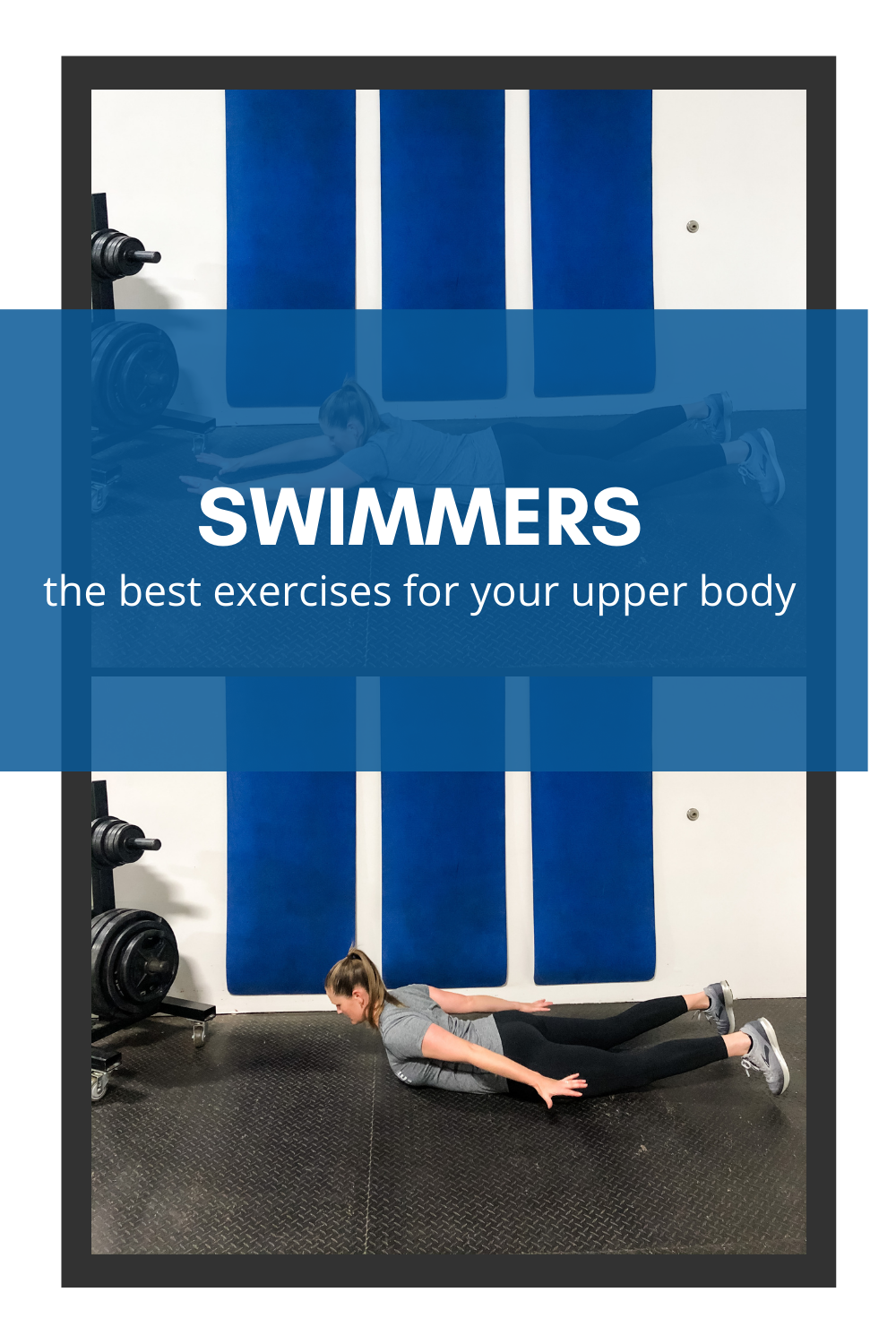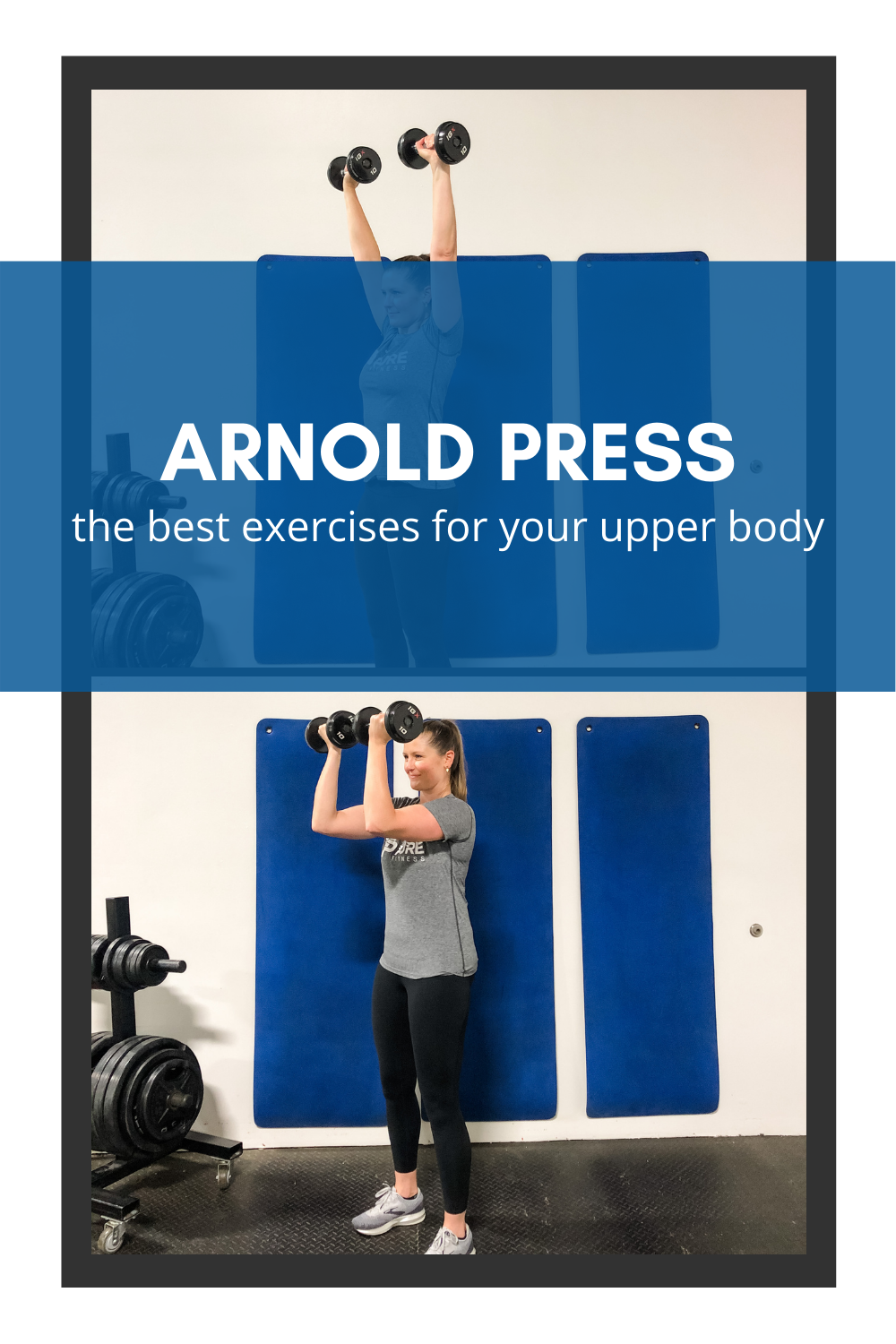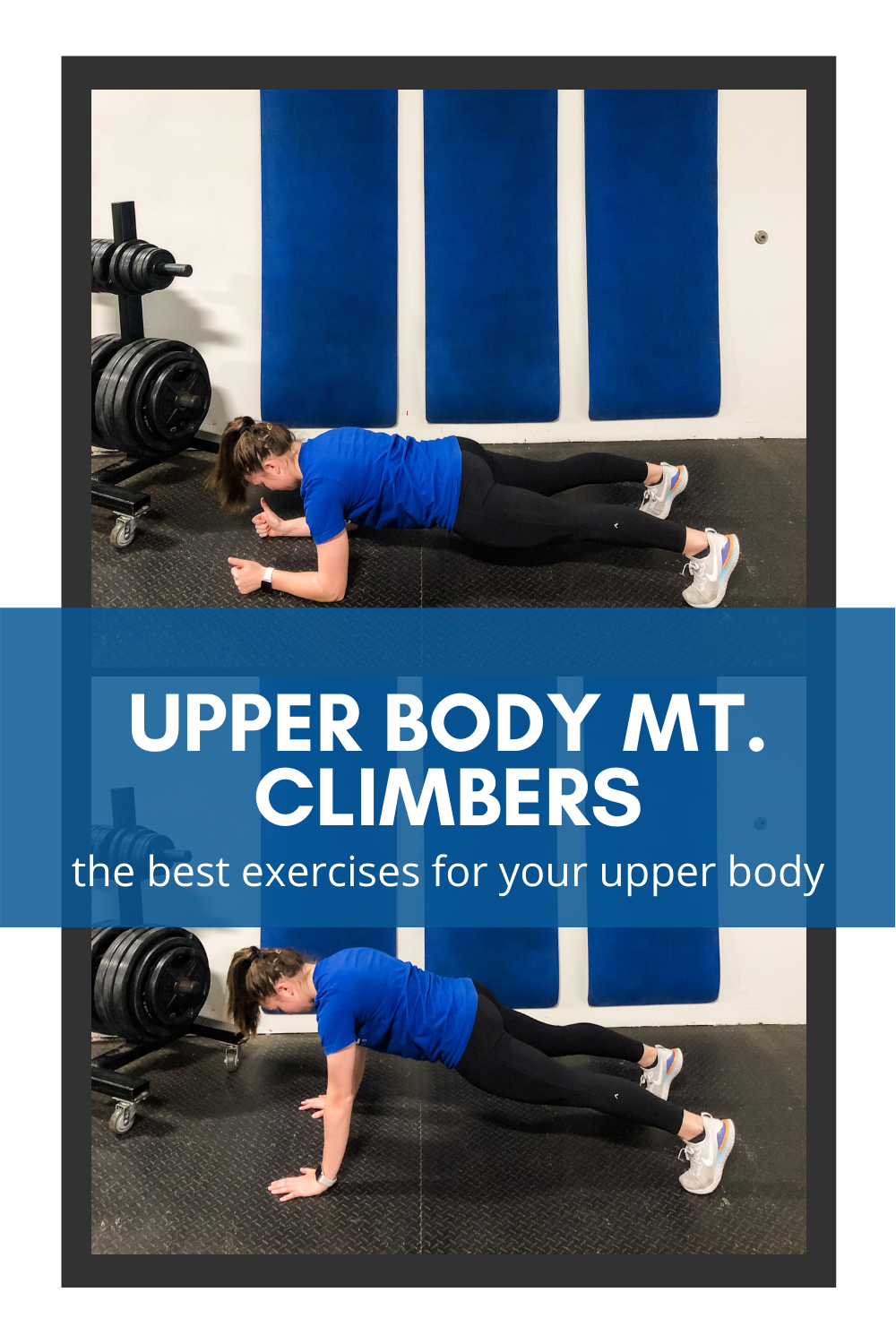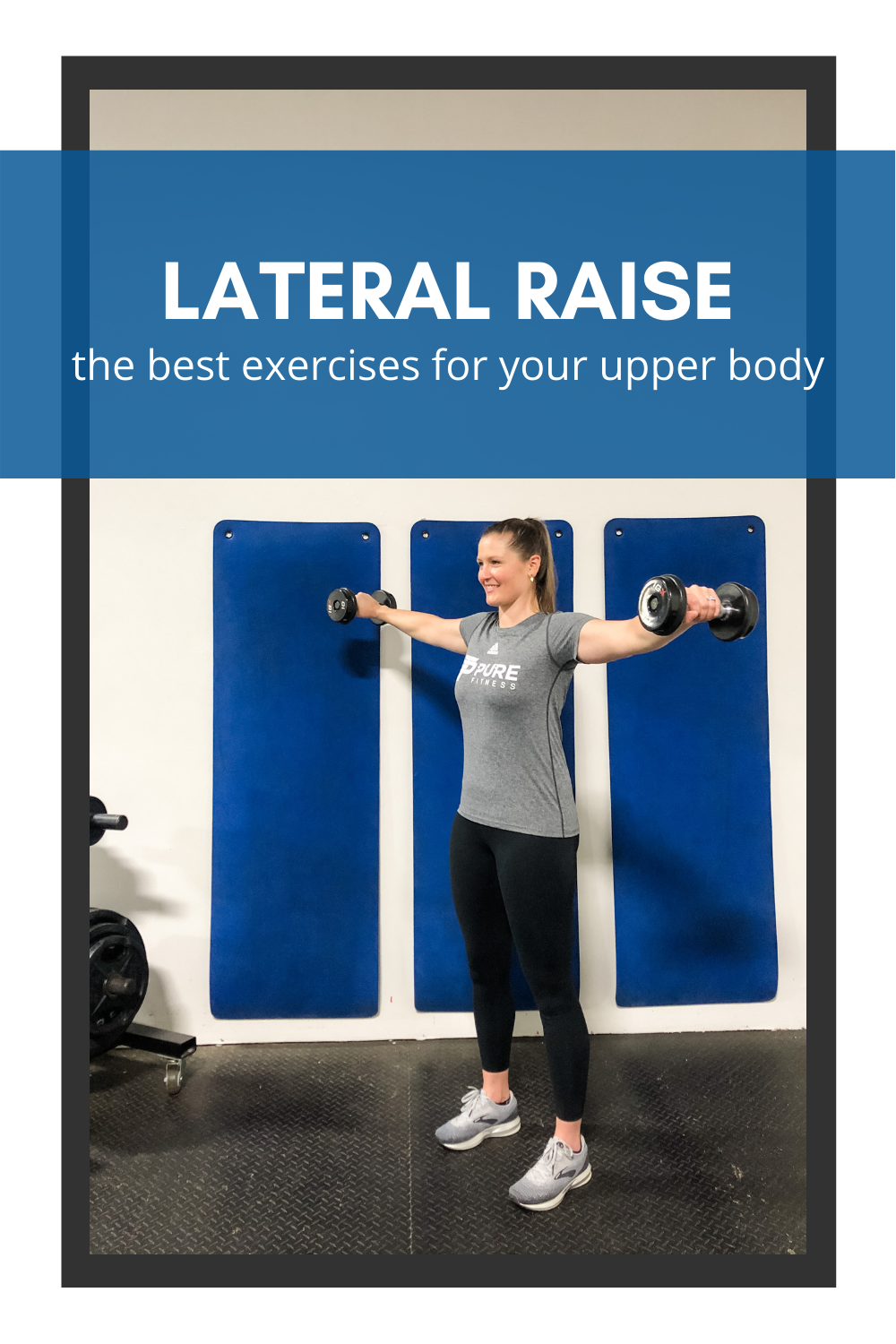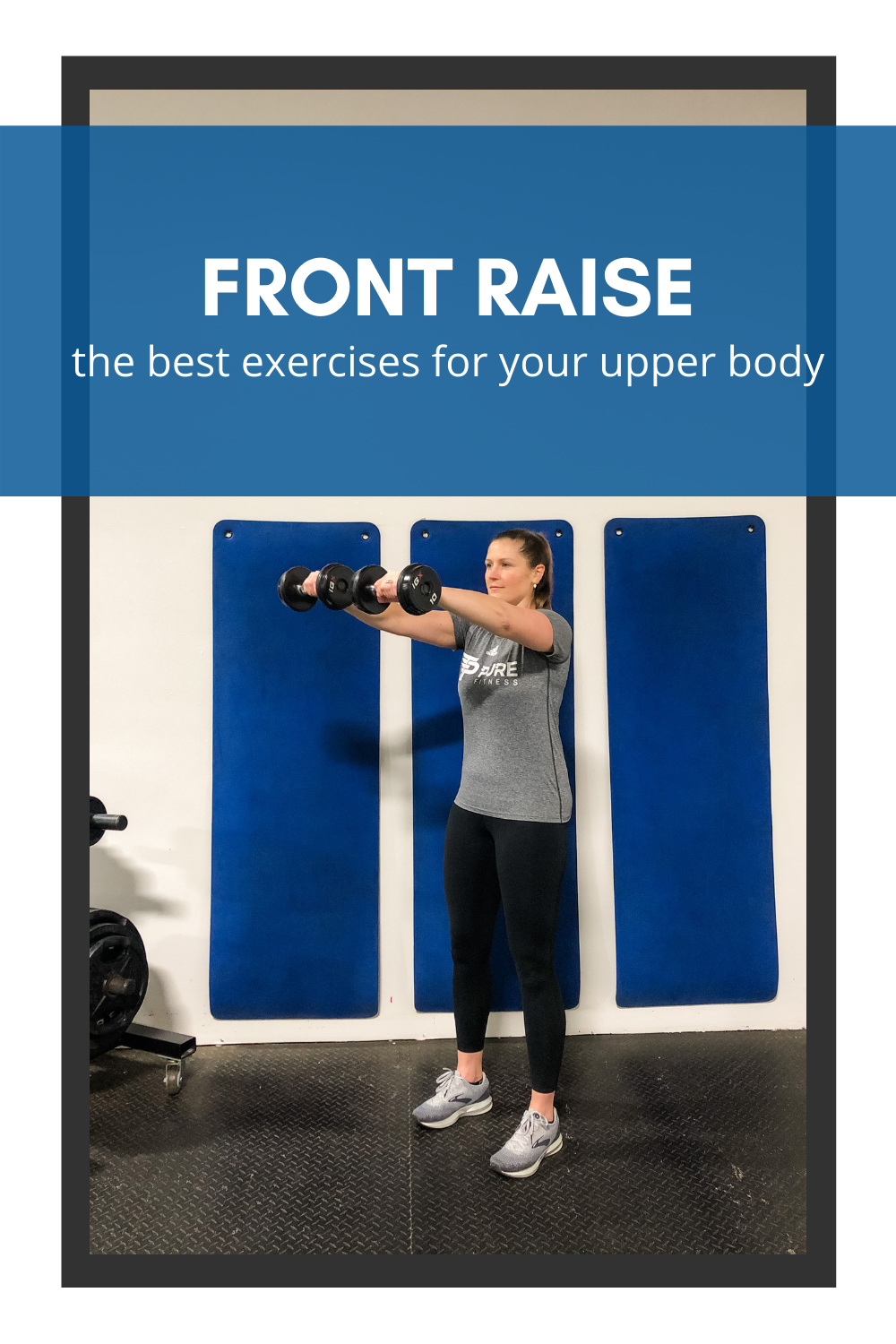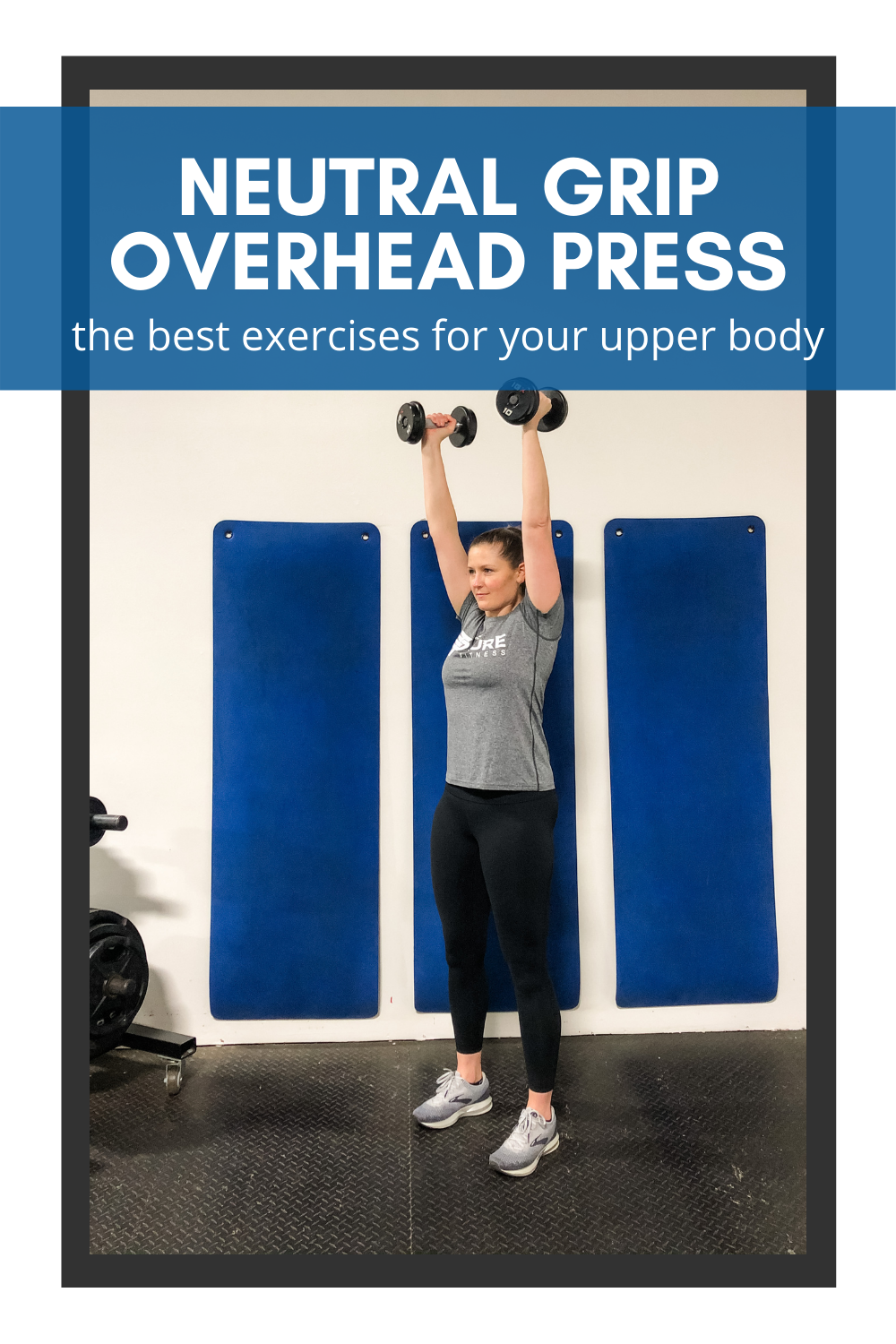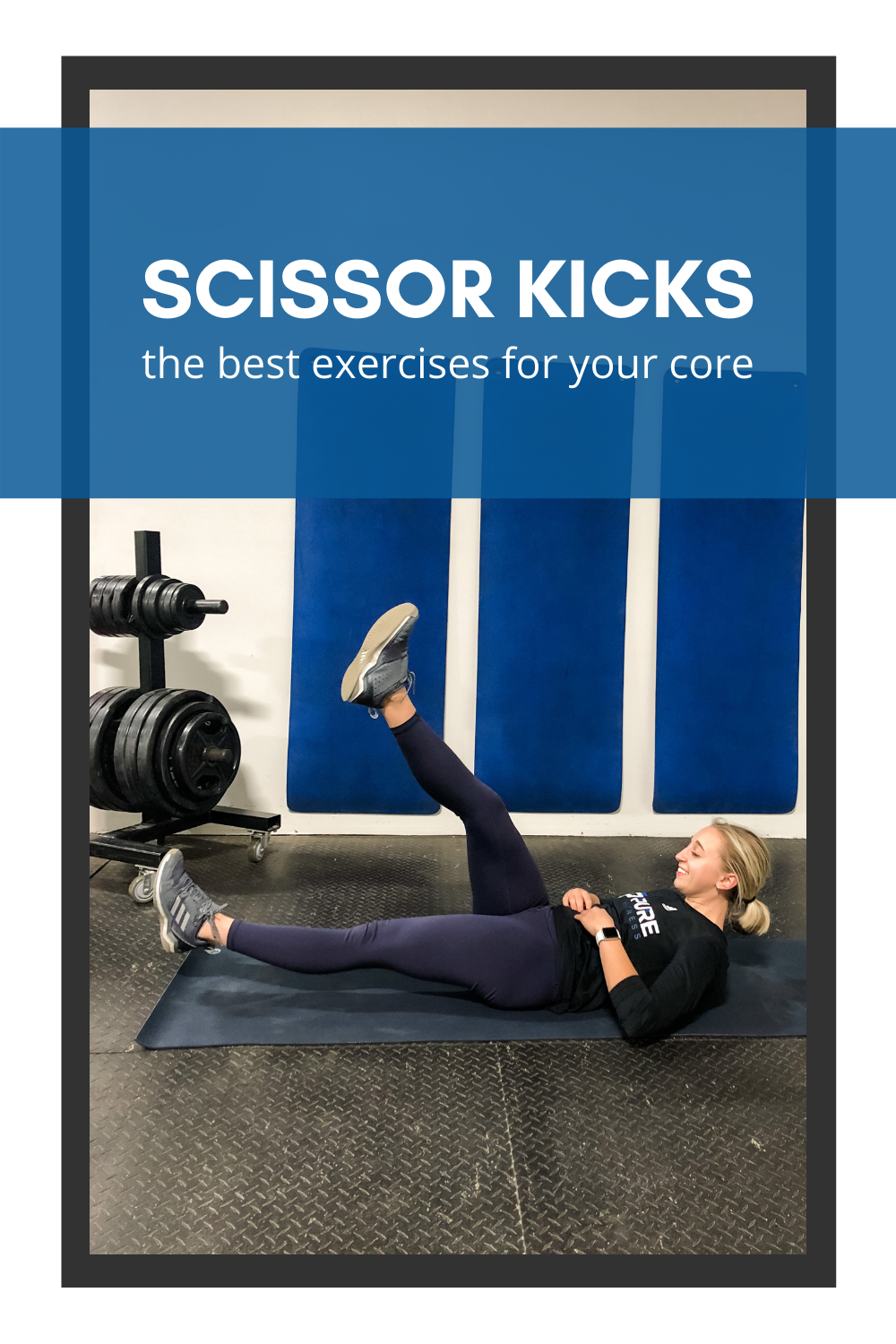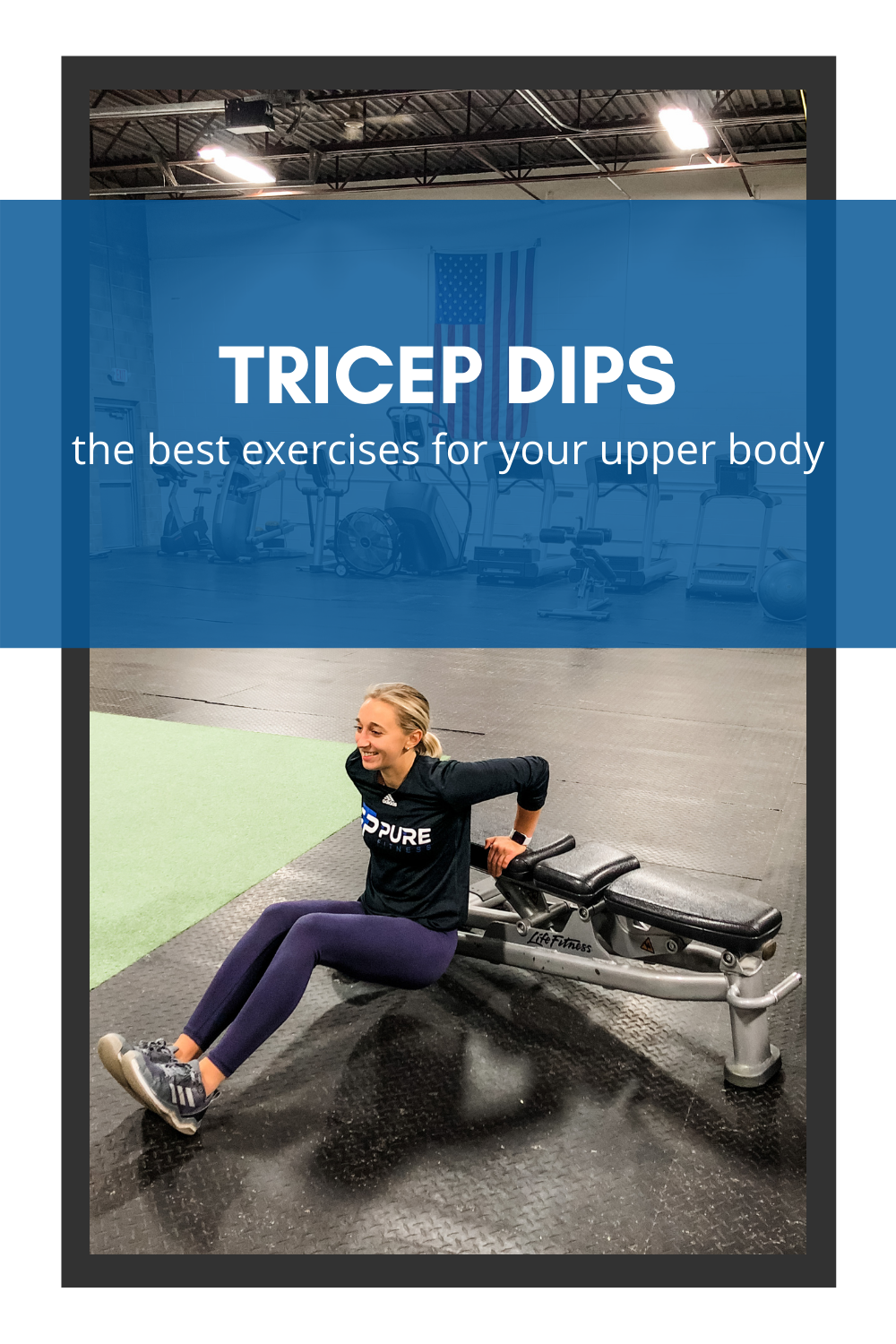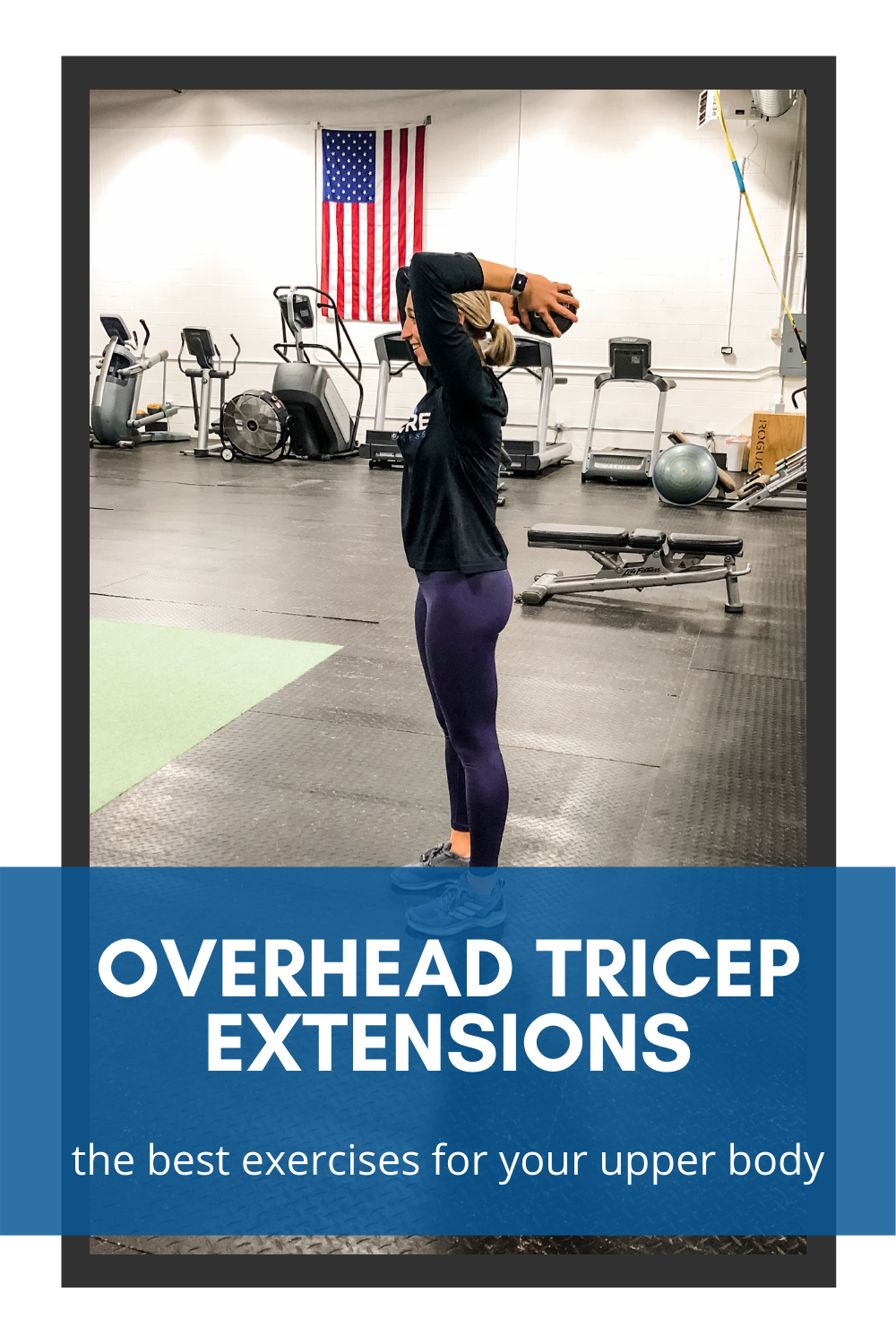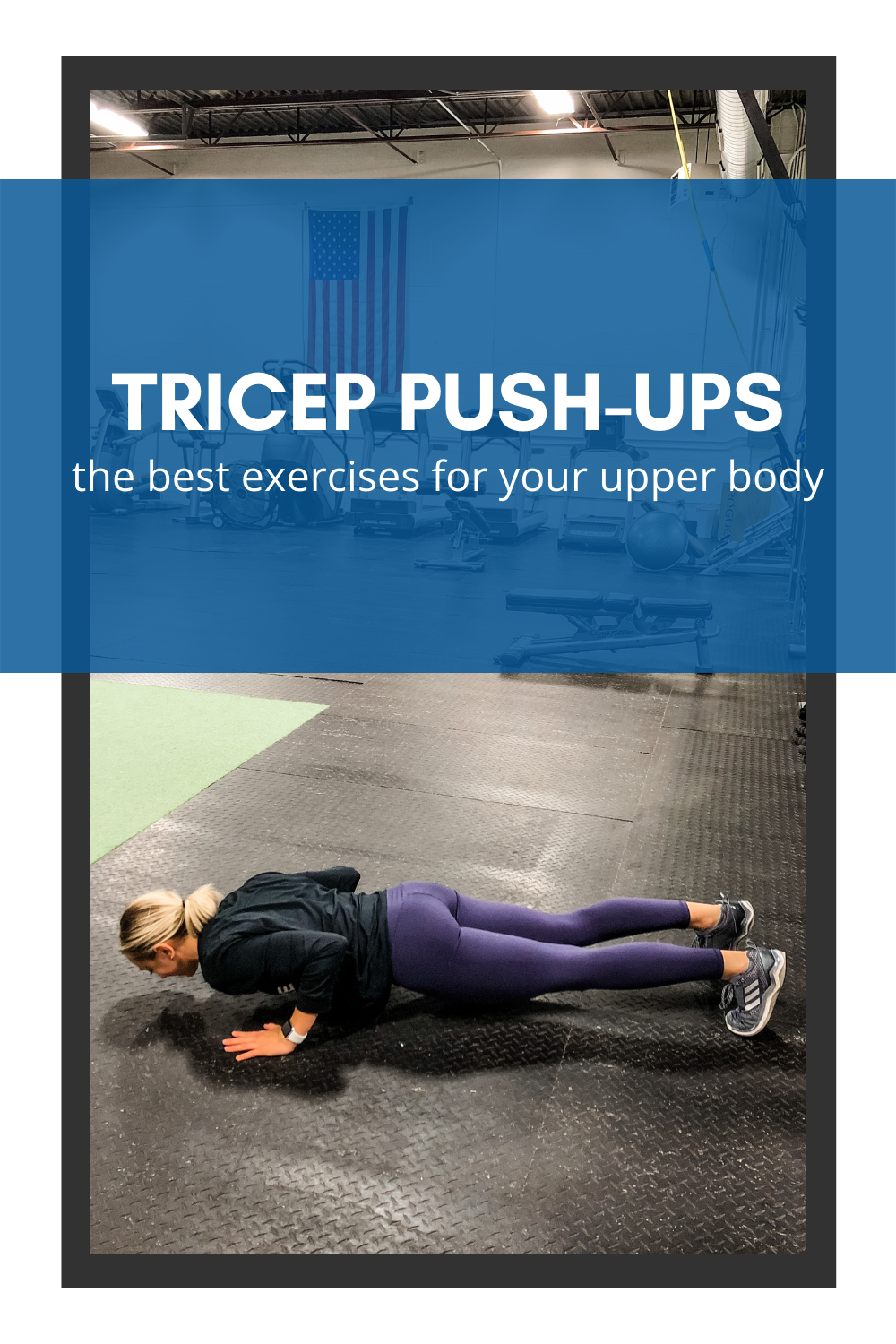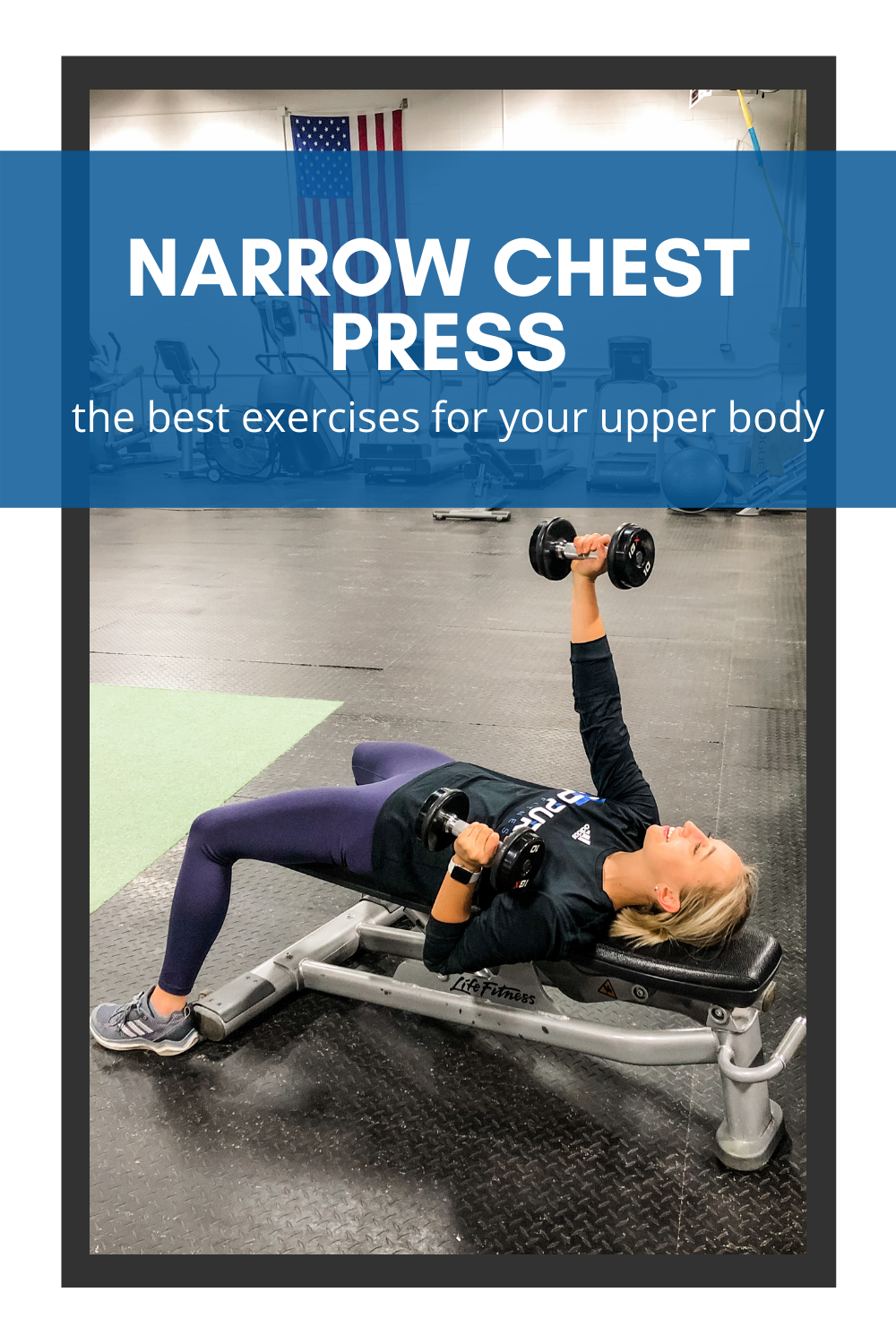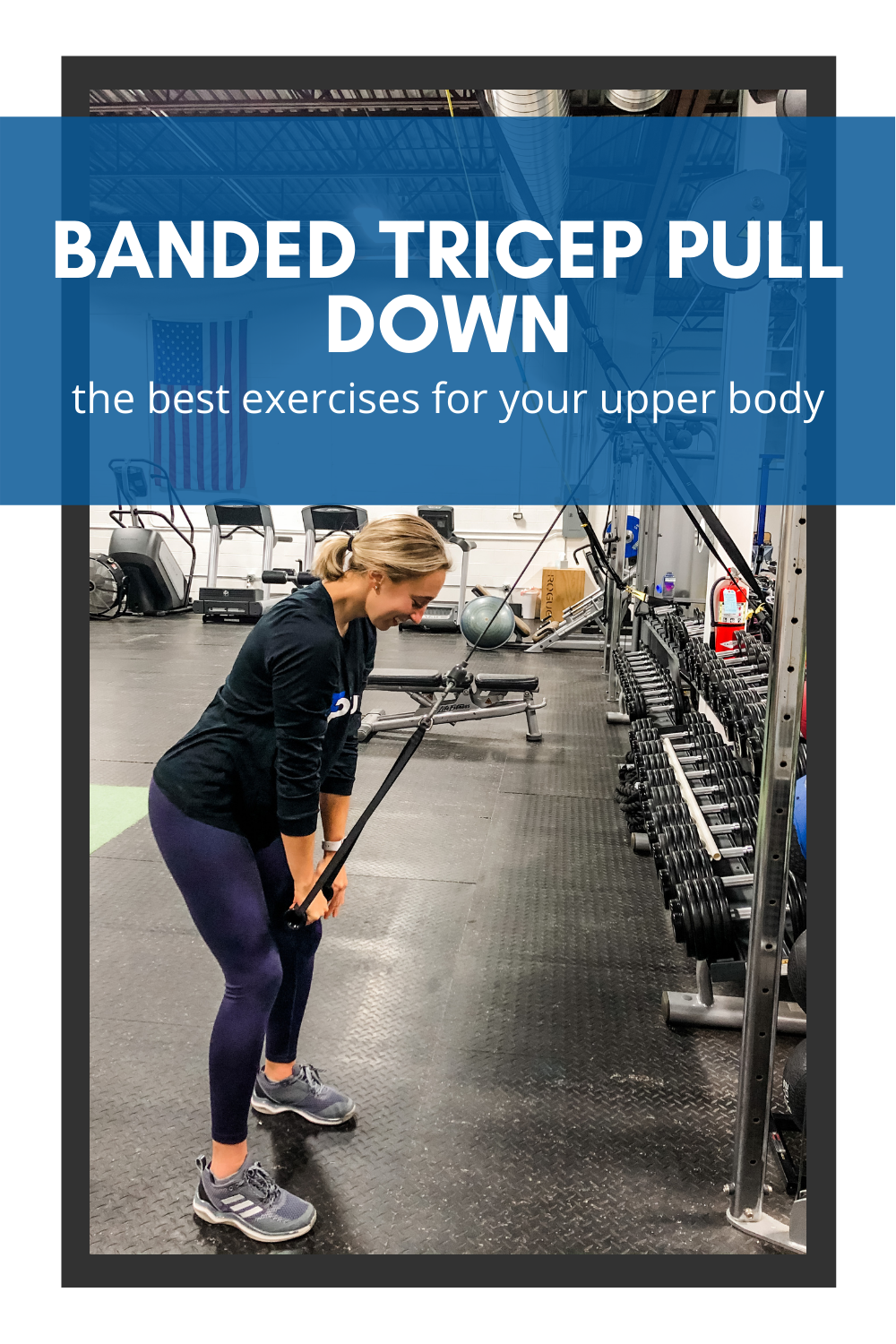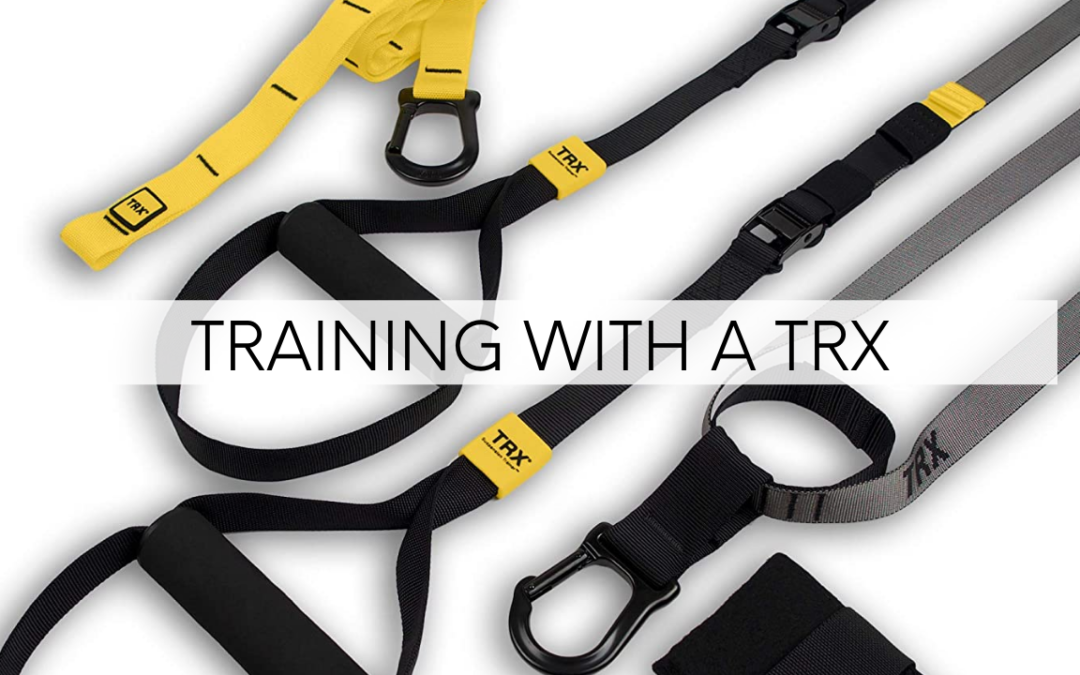
by Chellie
HOW A TRX WORKS
In my mind, I put the TRX into two categories. One, is that you use the TRX to increase the intensity of an exercise by making it more challenging. Two, is that you use the TRX to de-load an exercise to successfully achieve proper muscle activation and/or range of motion. The results are improved flexibility/range of motion, increased stability/balance and growth in strength/power.
This is not to say that 1 and 2 can’t happen at the same time. They work synergistically. A great example would be a plyometric exercise like a squat jump. With the TRX we can increase range of motion in the squat portion which can allow us to develop more strength. You can also ensure that you can perform a quality explosive rep within that full range of motion by having the assistance of your arms. After all a squat jump with your hips going past parallel is a huge increase in difficulty.
This is also true of a more simple exercise like a squat. But for someone who’s own body weight is too much to control down and up in a squat pattern (making it a challenging exercise for THAT individual) the TRX becomes an avenue to de-load the movement while allowing them to work within the necessary range of motion.
Let’s not forget to touch on stability/balance. If you have used a TRX before you know this. The straps can move in all directions giving the exerciser a challenge to their balance. A good example is a push-up. If your hands are holding on to the straps and your feet are on the ground there will be a lot of instability at your upper body. You will have to work very hard to keep your form as you perform the push-up. Which will cause stabilizing muscles around your shoulders and upper body to kick on and it will really fire your core.
Isn’t that interesting? Something simple as straps hanging can have such an impact on stimulating physiological adaptations?
WHY SHOULD YOU BE TRAINING WITH A TRX
I love the TRX because it can train strength, balance, flexibility and stability. But it also can help the user scale the exercise to fit their needs. Making it a top piece of equipment even for a home gym.
The TRX website clearly states why you want to use a TRX, “… to develop strength, balance, flexibility and core stability.” Let’s discuss flexibility and range of motion, stability and strength.
FLEXIBILITY AND RANGE OF MOTION
When we talk about flexibility we are talking about muscle lengthening to improve range of motion. The TRX can be used to help us move into a greater range of motion than we would be able to on our own. Why? Because you can use the TRX as a support system, de-load the exercise and ultimately increase range of motion.
And range of motion is directly correlated to power, which is the result of strength training. But how can range of motion be correlated to power? Let me explain.
Stored elastic energy is what allows us to be explosive and powerful, whether that be for running, jumping or swinging a club. This elastic energy is stored in your muscles and you can think of your muscles as rubber bands. We want them (your muscles) to lengthen like a rubber band and then “snap back” explosively. The more you pull/stretch the rubber band the more speed it snaps back with. So the more range of motion you can access in exercise, with proper stability, allows you to have the potential for greater stored elastic energy and therefore more power.
For the lower body that support comes in the form of holding on to the foam handles with your hands. Take a side lunge, for example. If you hold the handles in your hands you will be able to use your upper body to help you control the decent (lowering) and pull yourself back up. This support or de-loading will allow you to “sit into” a deeper range of motion. If done correctly, it can also help you use the proper muscles throughout the entire movement pattern.
If you put your foot into the loop and perform a side lunge the exercise will feel entirely different. That is because you are no longer supporting yourself to achieve a greater range of motion. You are now challenging your balance, stability and strength. I consider the foot in side lunge to be an advanced variation, and I would not recommend starting here for beginners.
It is worth saying that there should never be pain when working to improve your flexibility. If you have a previous or current injury pushing yourself into a new range of motion may make things worse. You should consult a professional before trying.
STABILITY
How a TRX is designed demands you have stability in order to perform the exercises. The more challenging the exercise the more stability is required as you use the straps while moving. Including variations like single leg, single arm and adding resistance like a dumbbell will all increase the stability demand of the movement.
The TRX can also be supportive. For someone who is unsteady or recovering from an injury the TRX can be used to give them more support to remain stable through their range of motion. A great example is the squat. If you struggle to sit down to a chair without “plopping” or using your hands, the TRX can help you gain the stability to control the movement.
Improved core stability is another advantage of training with a TRX. You can use the TRX to challenge your core stability in exercises you are already doing, like a plank or mountain climbers. Or you can more advanced exercises like a fall out or complexes that include multiple movement patterns to really tap into your core stability and muscular endurance.
As a side note, in order to have good core stability you need ALL of your core muscles to be operating effectively AND synergistically. And your core stability is important because it helps transfer force from the lower to upper body (and back), and to keep your spine healthy (and keep good posture) and prevent injuries.
STRENGTH
And of course the TRX can help increase your overall strength. Now, used by itself you aren’t going to build large muscles or an immense amount of strength because you are using your bodyweight as the resistance.
You can add additional resistance if needed. Holding on to one handle will doing just about any movement and holding a dumbbell in the other hand is an easy way to add resistance. Think of doing a side lunge, in the large range of motion you get from holding on to the handle, but adding more resistance by holding a weight in the other hand. Another example, this time for the upper body, would be a single arm row with a weight held at the chest. This will really challenge your core strength (anti-rotation) and your back muscles.
TRX STRENGTH TRAINING
Upper Body Strength Exercises
- Row on two feet, single foot or single arm (two feet and two arms shown)
- Push-up with feet in or hands in (hands in shown)
- Tricep extension or tricep dip (extension shown)
- Squat and curl at top or bottom (top shown)
Lower Body Strength Exercises
Here are five great exercises for the TRX at various difficulty levels. If you want to take these for a test drive I would recommend starting with the glute bridge or the shrimp. Why? Well, they are the “easiest” of the five.
- Shrimp
- Hamstring Curl
- Pistol Squat
- Side Lunge
- Glute Bridge
Core Strength Exercises
I think most people are familiar with using the TRX with feet in the straps to train your core. It’s challenging. It looks cool. But I would bet there are a few on this list that you haven’t seen before.
- Y Sit-Ups
- Standing Fall Out
- Leg Supported Crunch Variations
- Shifting Plank
- Supported Hallow Hold
- Mountain Climber Variations
- Pikes and Single Leg Variations
- Plank Kick Through
- Plank Tucks
TRX MOBILITY
We talk a lot about mobility. It has become increasingly important in our sedentary world. Our joints can become so tight when we sit for long periods of time or do the same motions over and over. Most commonly we see individuals with tight anterior upper bodies (chest) and tight hips/hamstrings.
One of the main ways we can alleviate some of these aches and pains is by restoring balance at the joint through flexibility/mobility and strengthening. And these need to happen in a cooperative way because you need to have range of motion at a joint, then stability and then power. Which is why mobility training should be a part of your week!
In the exercises below we are going to use the TRX to help provide traction as we reach the end of a range of motion or to help support our body weight to increase our range of motion.
For upper body mobility we are going to target opening up the chest, releasing the lats, and working on upper back rotational mobility. The combination of these three is going to help release a lot of that tension built up from sitting, driving & everyday life. And it will feel great at the end of your workout.
When we talk about lower body mobility we are mostly talking about mobility in and around the hips. Yes, you are going to gain some mobility in the range of motion at the knee joint, but since it is a uniaxial joint that only goes in one direction it will not see as much improvement as the hip will. Since the hip is a multiaxial joint, we have to work for range of motion in multiple directions and you will feel exactly what I’m talk about when you try these exercises.
Upper Body Mobility Exercises
- Chest Openers
- Thoracic Rotations
- “Wall Slides”
- Erector Spinae/Lat Rotations
- Lat Stretch
CHEST OPENERS
Start by having the TRX straps comfortably in hand and facing away from the anchor. Proceed with the mobility exercise by stepping forward and letting the straps gently pull your arms behind you. This will create a traction stretch within your anterior shoulder and chest. Alternate each foot you are stepping with and see if with a couple reps you can improve your range of motion.
THORACIC ROTATIONS
This is a favorite to do in our gym on the wall, but we love being able to use the TRX for an added stretch at the end. I would not recommend this until you are able to do half-kneeling thoracic rotations on the wall as seen in the PureForged Method (great for you golfers out there!).
Starting kneeling with the outside knee up and TRX straps in hand on the side. Begin by rotation away from the anchor. Keep your arms straight as you let your upper back (thoracic spine) rotate and your chest open up at the end. Keep your lower body as still as possible.
“WALL SLIDES”
Start with the TRX straps out to the side of your body as pictured above. You are going to slowly move your arms toward the ceiling while keeping your arms wide. This will allow you to work on shoulder mobility through the entire range of motion while getting some traction stretch in your shoulders toward the end.
ERECTOR SPINAE/LAT ROTATIONS
This next one is going to feel great on the lattisimus dorsi muscle (your lats) and your erector spinae muscle which runs through the middle of your back to your glutes. You are going start facing away from the anchor. Walk your feet back so that you are leaning into the straps and having a slight forward bend. Keeping your arms straight rotate from side to side to get a great traction stretch in both these muscles.
LAT STRETCH
Starting half kneeling with your knee closest to the TRX up, have the straps together as one. Grab onto the one handle with both hands and swing your arms up overhead and lean the outside hip away. This will create a great stretch down the side and through your lats.
Lower Body Mobility Exercises
- Squat for Depth
- Side Lunge/Squat for Depth
- Figure 4 Stretch
- Hip Flexor Stretch
Squat for Depth
Starting with your hands in the handles with elbows bent at your side, take a comfortable squat stance. You may want to take your feet a bit wider to allow for greater mobility. Proceed as you would with a normal squat, sitting back with weight mid-foot to heel. Come back up using your legs with assistance from the TRX.
Side Lunge/Squat for Depth
Similar to the squat, the use of the TRX here is going to allow for greater depth in that side squat/lunge. Often times people are limited moving laterally because they feel like their hip stops them. The use of the TRX is going to allow your hip to go deep, almost deeper than the knee. This is going to create a glute stretch.
Figure 4 Stretch
This is another great glute stretch that is going to allow your lower back to release as well. Start standing with the TRX straps in hand with your elbows at your side and standing on one leg. Take the other leg and cross it over so that your ankle is over the other knee. Squat normally by sitting back into your glute. You should feel a great stretch in your glutes.
Hip Flexor Stretch
This one is one of our go-tos because it is great to open up the hip flexor. You are going to start in a half-kneeling position with your back foot inside the TRX. This is going to create traction for the hip flexor to help it open up. To create a great mobility stretch, have your hips go forward by squeezing your glutes and shifting your weight forward. This will also start to work in a quad stretch. Your body will stretch what it needs to, so whichever is tighter will feel the greatest difference.
TIPS FOR USING THE TRX
- Keep tension on the straps. The whole point is to use the TRX for exercise. A helpful tip is to find the end point of your range of motion when you are training with a TRX. Make sure there is tension and you are in the proper stance or position.
- Remember the intention of the movement. I see a lot of people going crazy when they use a TRX. This results in sawing of the handles, or them sliding back and forth. It also causes a lot of sagging in the low back when doing core work.
- The TRX also shouldn’t rub against your arms. If that is happening you need to adjust your positioning.
- Make the adjustments. If the three above didn’t hammer it home let me be clear. You can make easy adjustments while using the TRX. If your angle is too hard or steep, change it and finish your reps don’t quit. If you can’t keep tension on the straps, stop adjust your positioning and resume your reps. Oh, you can’t control your hips from sagging, or the straps from swinging, or the rubbing on your arms? Stop and adjust. As always with exercise quality comes first.
TRX WORKOUTS
There are various workouts for mobility, upper, lower and core. One of my favorite things to do is mix in cardio intervals after every round. When I am doing a strength workout this breaks up the strength sets and increase my stamina. And when I am doing mobility it helps to keep variation in the workout and keep my body temperature and blood flow to muscles high.
EQUIPMENT – WHERE TO BUY A TRX
These are affiliate links. While there is no cost to you when you order through them, I do make a commission. Your support, by ordering through them, is greatly appreciated!
You can find a TRX all over the place. But if you want to support me and the Pure Fitness team you can order through this link on Amazon 😃
Now for some items you will want to use with your TRX. A high quality exercise mat. My favorite brand is Manduka because it has lasted years, I don’t slip and it is easy to clean. I linked the one I use here.
If you have a space dedicated to a home gym I would get the TRX wall anchor. This way you don’t have to worry about moving your TRX in and out of a doorway every time you want to start and end your workout.
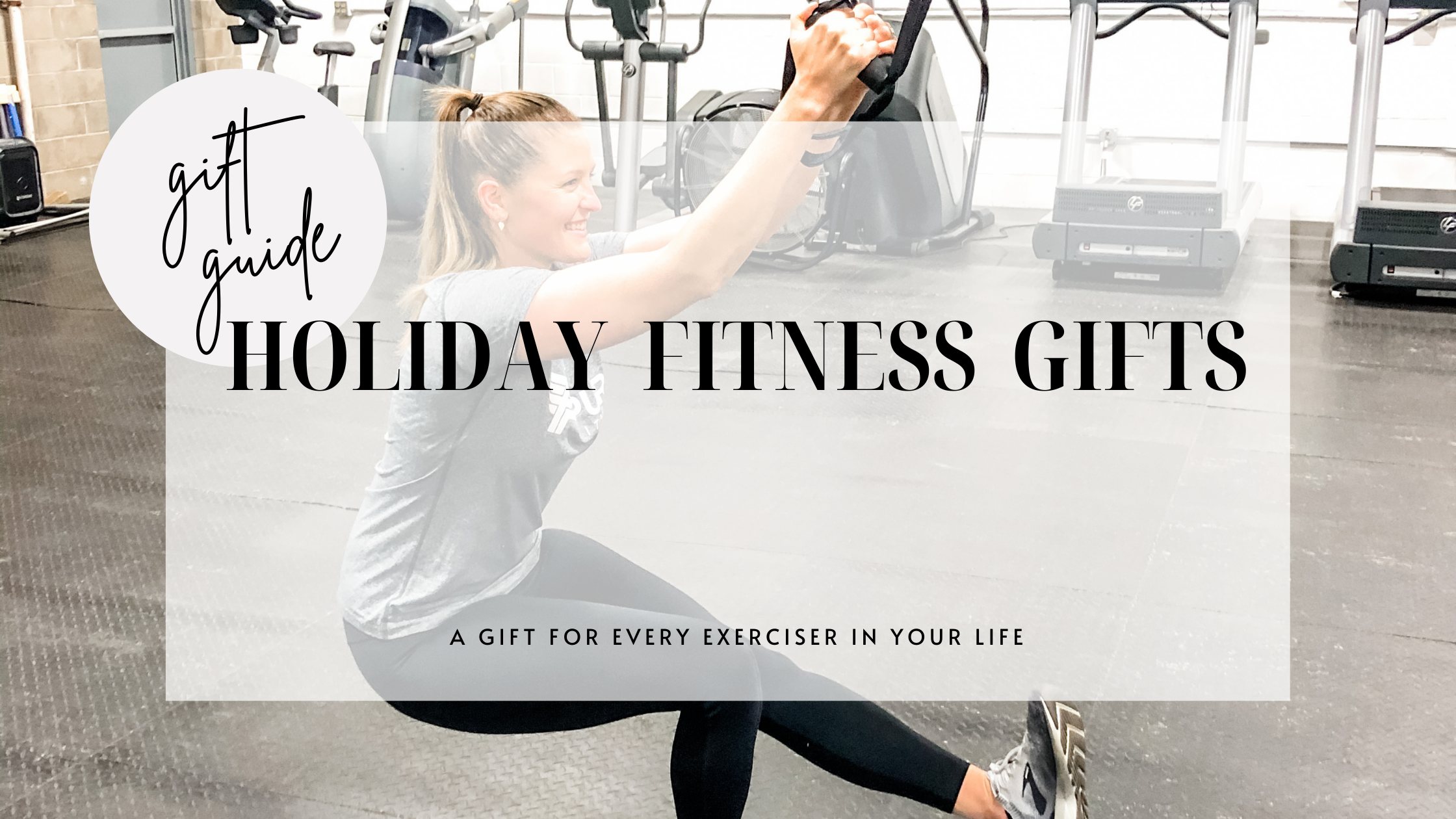
by Chellie
It is the most wonderful time of the year! And I am on a mission to spread more love and joy this year than ever before. Because let’s face it, we need it. 2020 has been a bear of a year. And I enjoy the art of gift giving. I love to see the glisten in someone’s eyes or the corner of the mouth turn up as they open a gift. Which is why I have put together this fitness gifts holiday guide filled with the perfect gift for everyone in your life.
2020 Holiday Guide
Let’s get the gift giving started. I have seven guides for you! You can shop most of the items on these guides through Amazon, but unfortunately a few are not available on amazon. I would like to make a note that I fully support the idea of shopping local and shopping small. So, if you have a local running store or sports store that you can shop PLEASE DO. Take these ideas and find them at a local store 💙.
- The Golfer
- The Athlete
- The Beginner
- The Runner
- The Home Exerciser
- The Triathlete
- Exercise Recovery
- NEW!!! Small Business Gift Guide!
The Golfer – Fitness Gift Holiday Guide
This may have been the year of golf. With the pandemic forcing us to spend more time outside, which we should give thanks for, a lot of people found their way to golf. I was honestly shocked how many.
No better time than now to support someone’s new or old found love for golf with a few perfect holiday gifts. This guide is full of everything from stocking stuffers to new technology. And yes, my husband has it all or will (shhhhh) after Santa decides if he has been naughty or nice.
Ok, being married to a golfer has taught me a few things:
- There is no such thing as having too many golf balls. So if you need a fast and easy gift for a golfer you CANNOT go wrong with golf balls.
- A hat is essential. Even if a snapback or flat brim isn’t your thing, Every golfer needs a solid hat game.
- Tech is king. I swear every year there is something. This year it is a magnetic bluetooth speaker. Totally functional for a golfer and can be used around the house or in the garage too!
And to round this out I am going to make a really big deal about the hip circle. We are personal trainers. We have a specialized program made just for golfers. This hip circle is an essential part of that program. Flexibility and stability are two things that have an enormous and almost immediate impact on golfers. Get your golfer this band and then download our Pure Fitness Golf Method.
TaylorMade TP5 | Bluetooth Golf Speaker | Stitch Club Headcovers | 2UNDER Golf Briefs | Under Armour Hot Jacket | Taylor Made Hat Black | Taylor Made Hat Black/Grey | Yeti Hopper Flip 8 | TheraGun Wave Roller | Hip circle | Support Local – Pure Fitness Golf Program
The Athlete – Fitness Gift Holiday Guide
This guide is for that person who never misses a workout. Who loves to talk about fitness. Who is always focused on their fitness goals. And I have a little shout out to a local protein company that we love – Pure Choice Whey.
If you need a big time splurge gift for someone special take a look at the Theragun and Airpods. Or consider buying a full outfit for your athlete, they won’t be disappointed.
- Clothing – you really can’t go wrong with clothing for a fitness gift. We live in our gym clothing. Huge fan of adidas. They have a really great buy back program as well that allows you to send in your used clothing and shoes for some store credit and they repurpose it. Doesn’t get much better than that.
- Airpods Pro – going wireless is a must for any athlete. Giving the gift of hands free, tangle free workouts is always a win!
- Protein & shaker bottle – I’m willing to bet that your athlete already uses a protein or drinks a smoothie, most of us do. We love this brand Pure Choice Whey because it is exactly what it says, pure. There are no extra ingredients here. Use code Purefitness to support two small businesses – them and us! Plus you get free shipping.
Pull-Up Bar | Shaker Bottle | Protein | Ab Wheel | Leggings | 2UNDER Golf Briefs | Men’s Adidas Hoodie | Women’s Adidas Crop
The Beginner – Fitness Gift Holiday Guide
Every year people decide it is time to start an exercise routine. This is a habit you WANT to support. What better way than giving them gifts to encourage their workouts to help them stay consistent? I’m not sure there is one.
These are the items that I most commonly talk to new clients about having. They help my clients stay on track, motivated and comfortable.
- Notebook – for reflection or journaling on their progress, to track workouts and for some track their macros. Bonus is that this one has a sleek look that makes it easy to bring with you throughout the day.
- Socks – beginning exercisers are going to be putting their feet through more stress than usual, comfortable socks are a great gift. Plus, the feeling of putting fresh socks on is motivating in itself.
- Foam Roller – they will be sore! Learning how to foam roll and using it regularly will help them to stay consistent.
Water Bottle | Hip Circle | Yoga Mat | Foam Roller | Adidas Womens Sweatshirt | Adidas Mens Sweatshirt | Journal | AirPods
The Runner – Fitness Gift Holiday Guide
This is a hot category. Especially in 2020 when so many of us took to the streets when the pandemic hit. But pandemic or not, us runners love the little things that make our runs more enjoyable. From the perfect pair of socks to tracking our every step, these gifts are guaranteed to get your runner moving. And maybe a little alone time for you 😜.
Ok, seriously. As a runner these are a few of my must have items for the winter season. If you want your runner warm, safe and motivated then check these out.
- High visibility gear – make sure your runner is safe for those early morning or early evening (boo 👎🏻) runs.
- Winter hat & gloves – I prefer the headband for running, but something for your ears and hands is key for any runner.
- Garmin watch – this easy to read watch face is great for running. Super easy to read and the Garmin connect app for your phone makes accessing/interpreting data a breeze!
TheraGun | Features Socks Grey | Features Socks White/Black | Garmin Forerunner 235 | Night Running Safety Light | Reflective Running Gear | Running Gloves | Running Gloves | Adidas Running Hat | Adidas Running Ear Band
The Home Exerciser – Holiday Guide
If your person prefers to workout at home then look no further. This list has exactly what you need. Get them a new piece of equipment, or upgrade what they already have. Making their home gym more comfortable and functional will only increase their motivation to workout.
- Bluetooth Speaker – mobile music for your workouts is an awesome (and generous gift). Plus it has so many functions. Use inside our out for workouts, use it for working or studying in the office, have it for music while you are cooking. It is such a wonderful, multipurpose gift.
- Yoga Mat – essential piece of equipment for any home exerciser. They MUST have a high quality yoga mat. One that won’t fall apart or move around while they are using it. Manduka, for me, is that exact mat. It is worth every single penny!
- Organization – nothing discourages productivity like disorganization. Help your home exerciser stay organized with a place to put their yoga mat, foam roller and other exercise equipment. Plus vertical storage is the most efficient types.
Polar Watch | Hip Circle | Yoga Mat | TheraGun Wave Roller | TRX | JBL Speaker | SKLZ | Wall Mount Storage | Clock | Adidas Womens Sweatshirt | Adidas Mens Sweatshirt
The Triathlete – Fitness Gift Holiday Guide
If there was ever a sport where you need a whole lot of things, triathlon is it. Don’t get me wrong, I love it. But was I ever surprised by all the things I needed. I should have been. Since it is three sports combined into one. Showing your triathlete some love this year by filling their stocking with some of these goodies.
- Bike essentials – this has to be what surprised me the most, but every triathlete should have a chain cleaning kit. Taking care of your bike chain is a must, especially when you put on a ton of mileage.
- Garmin watch – this is a cadillac model. Your triathlete can track each phase of their work and really breakdown the details. This one is on my christmas list! An upgrade to the Garmin I currently have.
- Goodr running glasses – perfect stocking suffer for size and price. And for a running perspective they are LIGHT and motionless. Your triathlete will 100% forget they are even wearing them.
TheraGun Wave Roller | Garmin 735XT | Features Socks Grey | Features Socks White/Black | Chain Cleaner | Chain Lube | Body Glide | Honey Stinger | Goggles | Biking Glasses | Goodr Running Glasses | Bike Tube Replacement Kit
Exercise Recovery – Holiday Guide
No matter what type of fitness your person does, giving them the gift of recovery is always a great idea. Last year I had several people give the TheraGun as a gift to their spouse or family. I still hear from them on how much they love it! And this year TheraGun came out with a vibrating foam roller that is to die for.
Take a peak at this list. It has all the items for your fitness person to get a better night sleep, release tight muscles and give back to their body.
- TheraGun Wave Roller – 10 for 10 this is the highest item on my gift giving list. We just got one last week and I have used it everyday.
- Weighted Blanket – if you haven’t heard, you are missing out. Get one for yourself while you are spreading joy.
- Diffusor – candles can be tricky and they run out. Diffusors can provide great scents to help improve your sleep or ability to fall asleep. Plus the aesthetics of this one are spot on!
TheraGun Wave Roller | TheraGun | Diffusor | Essential Oil | Weighted Blanket | Sleep Lotion | Water Bottle | Eye mask | Ice Packs | Shaker Bottle
Wisconsin Small Business – Holiday Guide
You are encouraged to shop small every year and this year is no different. Here are a list of great small, local businesses you could support this year – especially for great stocking stuffers. Click on the business name to get more information. With these businesses being local you can likely still get your gifts in time for the Christmas holiday.
- The Painted Acorn – perfect stocking stuffers are available here. I got a bunch of the flour sack towels for gifts! Lisa also does group craft events. Last year we did a wreath making event and it was wonderful. Keep her on your list for next year!
- Bwidley and Company – season, festive and even appropriate dog collars. Our girl Bella has a nice wardrobe thanks to Bwidley and Company, who happens to be my Aunt.
- Jane’s Medicinals – if you have been interested in trying CBD take a look at Jane’s Medicinals. We had an insider look at their product development and their passion and commitment to quality was incredible. Mike really likes the pre-workout!
- Rob Baranko Art – this is a wow factor gift. And perhaps not available by Christmas, but worth reaching out. Rob has done several custom pieces for us and we are amazed each time. Click on his name and see a gallery of his artwork.
- SHOP – a local women’s clothing boutique you have to visit! They straddle the line between classic and distinctive. You’ll find the perfect item for the woman in your life and they are located right in Shorewood.
- Pure Choice Whey – I love this protein powder because it has minimal ingredients and dissolves so easily. Plus it is farm to shaker! Tony who runs Pure Choice is the son of a dairy farmer. You can use code Purefitness for free shipping.
🚨FOLLOW US HERE 🚨
YouTube: http://www.youtube.com/purefitnesswi
Facebook: http://www.facebook.com/purefitnesswi
Instagram: http://www.instagram.com/purefitnesswi
Pinterest: https://www.pinterest.com/purefitnesswi

by Chellie
This Fall egg bake recipe is absolutely delicious and perfect for a weekend brunch at home. And dare I say it … simple. There is plenty of room for you to customize it to your flavor preferences. For example, I like spicy so I topped mine with sriracha and jalapeños.
I eat a heavily plant based diet. In no way would I consider myself a vegan or even a vegetarian, but I am an odd mix of them. Plus a pescatarian. I love fish & seafood. However, living in the midwest means good fish that hasn’t travel a significant distance is impossible to find. So I limit my consumption.
For my house we went with a plant based sausage. Morning Star Breakfast Patties are the way to go. I haven’t tried a lot of plant based options over the years and this one is my personal favorite. Huge bonus is that Mike, who is mister meat and potatoes, love them too.

For this weekend brunch egg bake I threw together spinach, red pepper, onion, garlic and potatoes from my garden. Salt and pepper to taste and boom you have an egg bake.
Now, most people like to incorporate milk and/or cheese into their egg bakes for a wonderful creamy texture. And that is a great idea. I repeat a great idea. My recommendation would be to put in 1/4 – 1/2 cup of milk and 1/2 c to 1 c of cheese.
Weekend Brunch Egg Bake
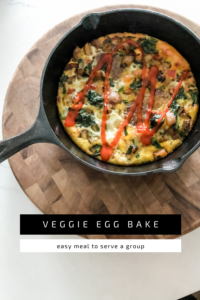
I know my egg bake looks even more delicious because I made it in a cast iron pan, but let’s be very honest … you don’t need one. I also make these egg bakes in glass pyrex dishes. USE whatever you have on hand or check out what I used in the equipment section.
This recipe can scale easily. Cut in half to serve for one or double to serve for a larger group. I like to factor 2-3 eggs per person depending on who’s eating.
You can also sauté everything ahead of time and store to use later. I know MANY egg bake recipes say they can be combined and then sit in the refrigerator over night. I can’t see why that wouldn’t work here. However, I have never tried that. So someone please try it and let me know how it goes 😜.
Feeds 2 hungry people | Prep 20 minutes |Bake 20 – 25 minutes
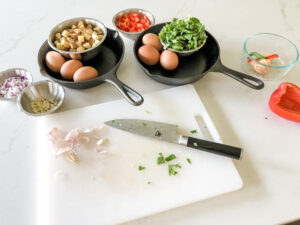
INGREDIENTS
- 6 eggs
- 2 c fingerling potatoes, cubed
- 2 handfuls of spinach, rough chop
- 1/2 red pepper, diced
- 1/4 c red onion, diced
- 2 cloves of garlic, diced
- 4 veggie sausage patties
- olive oil
- salt & pepper to taste
- optional: 1/2 milk & 1 c cheese
STEPS
- Preheat the oven to 350 degrees.
- Chop up the potatoes into cubes. Choose a size that will be easy to eat with a little bit of eggs and other veggies. Rough chop the spinach & dice up the red pepper.
- Dice up the onion and garlic and start to sauté it over medium heat.
- Add in the red peppers and potatoes. Cook until the potatoes start to brown and are soft. Approximately 15 minutes.
- While the veggies are on the stove beat your eggs and optional cheese and milk together.
- Place the frozen sausage patties into the pan of your choice, just make sure you oiled/greased it, then throw on top the veggies and pour the egg mix over the top.
- Pop it in the oven for 20-25 minutes. Optional to start with a piece of tin foil over the top to prevent too much browning and remove it for the last 5-10 minutes.
TIPS FOR MAKING THIS WEEKEND BRUNCH EGG BAKE
I can’t stress the oil your pan section enough. If you decide to buy a cast iron skillet make sure you educate yourself on “seasoning” your skillet or prepare yourself for a post egg bake MESS. I have made the mistake, it isn’t fun. And be aware that metal brushes and abrasive cleaners are a no go for the cast iron.
Try incorporating different flavors with seasonings and cheeses. I like to make this with a Mexican twist and put taco seasoning on the potatoes. Then I serve it topped with salsa or taco sauce and avocado. Game changer. Guaranteed.
Keep an eye on your egg bake. Every oven is different. Yours bake time may vary. You also want to be able to keep an eye on the top of the egg bake and cover it with tin foil if it looks like it is getting over done but the eggs aren’t done. This is a problem when you make a full serving in a smaller dish – so the bake is deep.
EQUIPMENT
Basic kitchen equipment is all you need In fact I would bet you have everything you need in your kitchen right now. But if you want to new tools or just curious what I use, take a look. These are affiliate links, which means I make a commission when you purchase, but it does not impact the price you pay 😃.
My dear friend, Christine ,turned me into a knife snob. She has this line of knives and after one night of cooking with her 5 years ago I was never able to look back. I highly recommend everyone to have one exceptional knife in their house. And more importantly to take care of it.
My grandmother had a few cast iron skillets and I was enamored by them. It felt like the right way you were suppose to cook. I have since learned that I am likely not a qualified cast iron skillet cook and that I wish my grandmother was still around to drop some knowledge on me. HOWEVER, egg bakes and pull apart bread are two recipes that I make in the skillet.
I have never had a better frying pan. My dad turned me on to the all-clad non-stick line when he asked for one for Christmas. They are more expensive, but you will never have a better experience. From the ease of cleaning to the even cooking temperature, this pan is worth every penny.
I also like a cute kitchen. I know that sounds ridiculous, but there is something about having things neat, organized and cute that make me want to cook. Which is why I love the oil container my friend gave me. It was made by an artist in the PNW. Not pictured is a flowered vase that was my grandmothers. The same OG I was talking about earlier. I keep all of my garlic in it.
Have fun with your kitchen set-up and I swear cooking becomes more fun. I like to mix new items with meaningful and practical to make me feel comfortable and creative in the kitchen.
🚨FOLLOW US HERE 🚨
YouTube: http://www.youtube.com/purefitnesswi
Facebook: http://www.facebook.com/purefitnesswi
Instagram: http://www.instagram.com/purefitnesswi
Pinterest: https://www.pinterest.com/purefitnesswi
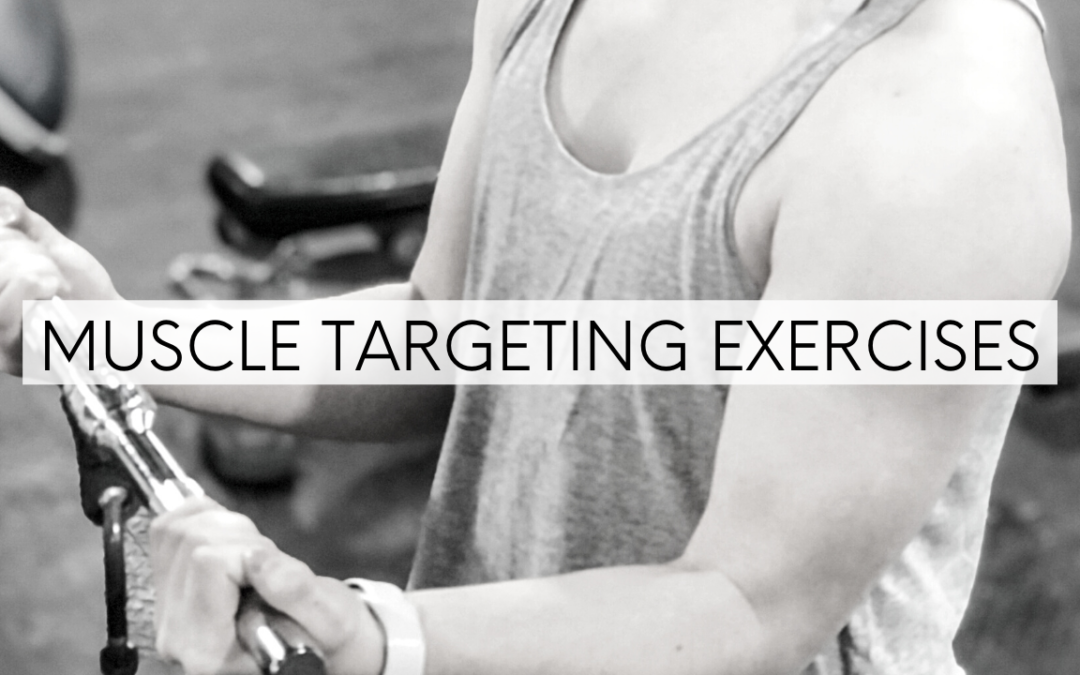
by Chellie
Back Targeting Exercises
The muscles of your back include your latissimus dorsi, deltoid, rhomboids, and teres major and minor to name a few. It is important to strengthen these muscles to open up the anterior of our shoulders. improve posture, and elongate the appearance of our body.
Swimmers
In a prone position, start with your hands overhead and thumbs together. Proceed by moving your hands out away from your body, keeping your elbows almost straight, and then bringing them back toward your glutes. This should work to engage and burn out those posterior shoulders!
Variations: Standing – on a bosu or on single leg, paused, one arm at a time.
Reverse Flys
The reverse fly is executed by holding two dumbbells out in front of you in a forward hinged position with a tight core. With a slight bend in the elbows and palms facing in, control the weights out to the side as you retract your shoulder blades. Be sure to really pinch those shoulder blades to effectively target the rhomboids.
Variations: Pause at the outer most point, stand with a single leg balance, rotate your palms to face up or down.
Bent Over Rows
Start by standing in a bent over (or hinged) position with your back flat and core engaged, and the weights hanging directly below your shoulders. With your palms facing inward, pull the weights up toward your ribcage by retracting your shoulders blades, allowing your elbows to pass your ribcage. Avoid any flexion or extension (bending) at your wrists.
Variations: Use an underhand grip, use an overhand grip, pause at the top, alternate sides per rep.
Single Arm Rear Deltoid Raise
Holding a dumbbell in one arm, have a slightly bent over position with your opposite hand resting on your knee and the weight hanging directly below your shoulder. With a straight arm, extend the weight back while keeping your chest forward to not activate the anterior shoulder. All the work should be in your posterior deltoid!
Variations: use a resistance band, eccentric work as you very slowly resist the force and control the return to starting position.
Banded Pull-Apart
Grabbing both sides of a long resistance band, grip the band according to the difficulty you would like with palms facing up. The closer your hands are together, the more difficult. In a smooth and controlled movement, pull the band apart with your hands while bringing your shoulder blades together for great posterior shoulder work.
Variations: Diagonally pull the band apart, elbows fully bent or fully extended.
Band Face Pulls
Looping the band around a pole, banister or anything stable you have available, grip the band with palms facing toward the floor. Pull the band toward your forehead to activate the deltoids for great back work. As always, keep the core engaged to prevent low back extension (arching).
Variations: Try the exercise in a hinges position for more core work and increased back load, single arm.
Shoulder Targeting Exercises
The shoulder joint is very dynamic, allowing for a wide range of movement, which means it needs a lot of stability to stay healthy. It also means it can be susceptible to injury and that not every exercise is right for every person.
Neutral Grip Press
Starting with the dumbbells at your shoulders and palms facing in, proceed to raise them up above your head. The keys here are not to let your lower back arch or let momentum take over. These can be prevented by keeping core tension and focusing on the movement in the shoulder.
Variations: Palms facing outward, use band instead of dumbbells, add a curl before the press, seated or standing, in an isometric lower body hold, single leg or on a bosu for balance.
Front Raise
Starting with the dumbbells at your side with palms facing in. Lift them up in front of your body until about shoulder height. The dumbbells should not be lifted higher than that. Your core should remain tight to not allow your back to arch at the top.
Variations: Palms facing toward the ground, seated or standing, use one weight instead of two, banded instead of dumbbells, in an isometric lower body hold, single leg or on a bosu for balance.
Lateral Raise
Similar to the front raise, a lateral raise is just going to go out to the side of your body instead of in front of it. For the lateral raise, your palms will be facing the front of your body. As always, core tension is important. Similar to the front raise, it is important not to raise the weights above shoulder height.
Variations: Palms facing toward your body, seated or standing, banded instead of dumbbells
Upper Body Mountain Climbers
Start in a push-up position with feet shoulder-width apart. Begin by lowering one elbow to the ground, then the other. Using the first arm, extend the elbow to go back to the push-up position. Then do the other arm. Start with the other hand the next rep. Be sure to keep a neutral spine and tight core during the reps.
Variations: To make the exercise easier elevate your arms off the ground using a bench or try it from your knees. To make it more challenging try using a bosu ball (round side up) at your elbows or feet, add a lower body movement between each rep, or place a weight on your upper back (don’t let it fall off!)
Bent Over Y’s
In a slightly bent over position, start with your arms between your legs and palms together. In a smooth and controlled motion, raise your arms above your head while keeping your thumbs toward the ceiling. At the top position your arms should form a Y with the rest of your body (hence the name)!
Variations: Add small weight (2.5s, 5s), Lay prone on the ground (start overhead and lift a couple inches off the ground), swimmers.
Arnold Press
Start with your palms facing your body and weights up in front of your face. The first step is rotating your arms from in front of your face to the side of your head so that your palms face outward. The next step is to push the weights up overhead with the palms still facing out. As you lower the weights down, repeat the same pattern in reverse. This creates some great rotational work in the shoulders.
Variations: This is an exercise done best without any variations because it keeps the load most heavily focused on the shoulders.
Bicep Targeting Exercises
The biceps are made up of the brachioradialis, brachialis, and the biceps brachii (long and short head). When people think of the biceps, they think of bulky muscles and definition in the arms. However, those biceps are more than just for looks. Our Biceps are one of the main muscle groups we use in our everyday life. From carrying in our grocery bags, lifting up the trash bags, and even having to do our hair for a long period of time.
Bicep Curls
This is one you see almost everyone doing in the gym. One of the most simplistic exercises for targeting those biceps. Start with the weights at your side with palms facing forward. Flexing at the elbow proceed to lift the weights up toward your shoulders while putting the load into your biceps. As always, keep core tension and limit momentum moving the weights.
Variations: take your arms to the outside of your hips and perform wide curls, stand on a bosu, single leg or in a split stance to challenge balance, use resistance bands or a cable to change the load.
Hammer Curls
This is going to be the same as your bicep curl, but switching your grip to have your palms facing each other. This is just going to target a different muscle head of your bicep to put the load into your bicep brachialis.
Variations: bring your arms in a crossbody pattern alternating hand towards opposite shoulder, stand on a bosu, single leg or in a split stance to challenge balance, use resistance bands or a cable to change the load.
TRX Bicep Curl
Starting with your palms facing up in the TRX bands, position your body to the level of difficulty you desire. The more parallel your body is with the ground, the more difficult it will be. Proceed to bend your elbows towards your chest to lift your body up. It is very important to keep core tension and limit low back arching.
Variations: change your palm positioning and try overhand (palms down) and neutral grip (palms in), try single arm or single leg and fit the rotation that gravity applies to you.
Isolation Work
This is not a specific exercise, but incorporating a single arm curl while the other hold the dumbbell with 90 degree flexion can be very effective in strengthening the biceps. This can also be done with an isometric hold during a pull-up. This just helps us work not only eccentric and concentric, but also isometric!
Variations: try a flexed hang from a pull-up bar or single arm bent over row with the non-rowing arm holding a (isometric) row position.
Eccentric Neutral Grip Pull-Up
By either climbing up or jumping up to have your chin over the handles, lower your body downward toward the bench or ground with a 3-5 count. This is going to work your biceps eccentrically. It is a more advanced exercise, but can be really effective in strengthening your biceps.
Variations: change your hand grip for an increased challenge – wide palms facing away is the hardest. Add a weight vest to increase the load
Tricep Targeting Exercises
Working our triceps can be tough. They are a small muscle group that can fatigue quickly. But working on our triceps is just as important as getting strong biceps. They can help increase numbers for a bench press, help get those toned arms people are always searching for, and just assist with every day activities.
Tricep Dips
A favorite among anyone who looks to work their triceps. This is a simple exercise in which you start with your hands behind you on the bench with knuckles forward. While being slow and controlled, lower your body to the ground to reach about 90 degrees of flexion at the elbows. The further away your legs are from you, the more difficult the intensity!
Variations: hold a weight on top of your legs, pause at the bottom, or add leg raise with toe touch at the top.
Tricep OH Extensions
Holding a dumbbell or resistance of your choice above your head with full extension at the elbows, lower the weight down behind your head. It is very important to resist the tendency to arch the low back. Prevent this by keeping core tension and letting your triceps do the work. Limit the work that your shoulder is doing and keep the focus on the triceps.
Variations: increase weight or reps, add a single or double leg lower to get the core active, or add a skull crusher between each rep.
Tricep Push-Ups
Set up in a high plank position with your hands directly below your shoulders. As any other push-up, lower yourself toward the ground and push back up while maintaining a flat back and tight core. The narrow position of your hands will allow for the load to go into your triceps. This can be done on your knees or on an incline as well.
Variations: elevate the legs, single leg, weight on the back, pause at the bottom, or hold a plank after completing your last rep.
Narrow Bench Press
Lying supine on a bench or on the ground, start with the dumbbells above your chest. Lower the weights down toward your chest while keeping your elbows in tight to get the work into your triceps. Your grip should be neutral, having your palms face each other.
Variations: increase weight or reps, put your feet on the bench, or lower the weights on a 5 count loading the eccentric phase.
Banded Tricep Pull-Down
Attaching the band higher up on a banister, pole, or anything you have (or use a cable as seen in the picture), place hands about shoulder width apart on the band to start. Extend your elbows to bring the band down toward your hips. Be sure to keep core tension to not let the work go into your low back. This can also be done with a cable machine using the handles or rope attachment.
Variations: single arm pull-downs, hand on top of hand pull-down, or standing on top of a bosu.
SKLZ Single Arm extensions
Using your SKLZ sliders, a towel on a hardwood surface, or a Tupperware lid on carpet put one underneath one of your hands in a kneeling position. As you extend the hand with the SKLZ, the other arm goes into elbow flexion, keeping the arm close to your body. This creates a single arm tricep push-up in the arm off of the SKLZ.
Variations: this is an advanced movement, you may need to regress and perform tricep push-ups and the ab wheel separately to build enough strength and stability. You can make this harder by going from your toes and even harder by elevating your feet or putting them on a bosu.
Glute Targeting Exercises
Posterior chain training, which includes your glutes, is so important to your overall health. Lack of proper glute activation and engagement can lead to pain (back, hip, knee), and many other issues throughout the kinetic chain. Learning how to focus and use this muscle will change not only your workout, but the way your body feels!
Banded Step-Outs
With the band right above the knee, start with your knees slightly bent. Step out to the side with one leg, then switch to have the other one step out while still standing in the right spot. Be sure to think about squeezing your glutes to prevent your hip from doing the work.
Variations: Make it a band walk by stepping out and together for about 10 yard and back! Put the band below your knees to make it harder.
Glute Bridges
Lay on your back with your knees bent and feet on the ground. Proceed by lifting your hips up toward the ceiling and engaging your glutes. What we want to prevent here is a low back arch and pain. The goal is to be able to have a straight line between your head, hips, and knees. However, this should not come at the expense of low back pain and using the wrong muscles.
Variations: Elevate your heels on a bench, put a band above your knees, pulse at the top, add a weight on your hips, or try them on single leg.
Plank Leg Lifts
In an elbow plank position, start with your feet about shoulder width apart. Lift one leg up no higher than the hips, so that you just use your glute to extend your hip. Alternate and do the same thing on the other leg. This should all be done while keeping your core engaged and a flat back. Tip: squeeze your glute before your foot leaves the ground.
Variations: Add a band above your knees, move to a high plank, have your elbows or hands plank on a bosu.
Clam Shells
Lay on your side with your knees bent at 90 degrees with a band just above them. Think about your heels being in line with your glutes. Your arms can be in whatever position is most comfortable. Squeeze your glutes to lift the top leg against the resistance of the band. Again, this should only be done in the range of motion that only engages your glutes, and not your hips. Control your legs as they lower back down to the starting position.
Variations: This one can be done without a band as well, in a side plank from your elbow or with your butt against the wall to control any torso rotation isolating the work to your glutes.
Reverse Hyper
This is not a piece of equipment most would have at home, but at your gym go find this machine! It is one of the most effective exercises for targeting your glutes. Lying on your stomach with hands on the bars, start with your legs hanging toward the ground. Begin by lifting your legs up through your glutes. Similar to the plank leg lifts, be sure to prevent low back arch by not extending higher than your hips.
Variations: If you do not have this equipment, you could replace it with a banded hip extension or backward band walk
Squat
Although the squats hit pretty much every muscle in the lower body, it can be great for our glutes. If you don’t feel your glutes working during the squat try using one of the above exercises before squatting to “wake them up”. Super setting squats with a glute isolated exercise can provide a great glute burn.
Hamstring Targeting Exercises
Training our hamstrings involves a lot of hip hinging or flexion at the knee. The more you teach your hips to hinge properly, the better off you will be in real life. Hamstrings are very active as you bend down to pick things up or do other everyday tasks (laundry, gardening, stairs, etc.).
Bonus! Training your hamstrings effectively will make you faster if you are an athlete. This is due to their role as a hip extensor which also helps in your ability to decelerate and change direction.
Single Leg RDL
This is one of my personal favorites, and not just because it does a great job of targeting your hamstring. Start balancing on one leg with a slight bend in the knee. Proceed by hinging at your hips, pushing your butt back while keeping your core tight and back flat. The leg not on the ground will extend back while your hips and shoulders stay square to the ground. Reach for mid-shin with your hands or to the length that your hamstring and good form allow. Return back to the upright position, tapping the other foot down when needed.
Variations: Add weights in each hand, only one weight in one hand, perform on a bosu, use a cable as resistance, use a swiss ball under the back foot.
Double Leg RDL
Very similar to the single leg RDL, the double leg starts with a slight bend in the knees and a hip hinge back. Lower the weight to below the knee, again only as low as your great form allows. Return back to neutral by standing up tall and squeezing your glutes at the top. This is a great bilateral alternative to the single leg RDL.
Variations: Use a barbell instead of dumbbells, perform on a bosu, use a single weight, use a cable, or make it a complex with other exercises.
Hamstring Curls on Swiss Ball
With your back flat on the ground and your knees bent at 90 degrees, put your feet up on the stability ball. Lift your hips up as if your were doing a glute bridge. Extend your legs out while keeping the stability ball underneath your feet. Pull the stability ball back in using your hamstrings and maintaining core tension so that the work is not felt in your low back.
Variations: Put your feet in TRX straps, try single leg curls, or place your feet on the SKLZ sliders
Hamstring Walk-Outs
Begin with shoulders and feet on the ground with your hips up in a glute bridge position. Begin by stepping out with your heels alternating right and left. Step out 2-3 steps each side, then walk back in to the original position.
Variations: add a band above your knees to increase glute engagement, squeeze a medicine ball to work your inner thighs also, hold a weight on your hips.
Kettle Bell Swings
With a little bit of knee bend and holding the weight between your legs, start with the same hip hinge back as your would with a double leg RDL. Proceed by bringing the weight forward in a swinging motion by pushing your hips back to neutral and squeezing your glutes. Do not use your arms to bring the weight higher or let momentum do the work.
Variations: Use dumbbells as your resistance, use a band to pull through your legs
Eccentric Hamstring Curl
While on your knees, your feet can either be pinned down by a partner, or have them in a machine in the gym. Slowly lower your chest toward the ground until you cannot anymore. Either drop to the ground or use a stick as assistance to lift yourself back to the original kneeling position.
Variations: If you are crazy you could try this single leg 😜 otherwise you could use a hamstring curl machine focusing on slow extension to get an eccentric load.
Quad Targeting Exercises
These are mass muscle movements. This means that in the list below I am not giving you quad isolated movements. Rather movements where the quads are active and prime movers. When these exercises are used consistently and properly you will benefit from stronger quads. Work them routinely on a weekly basis to see your work pay off.
If you have any lower body joint issues or chronic pain I suggest you find an experienced and educated fitness professional to help you get started. And remember if you are light headed or dizzy you should stop exercising,
Goblet Squat
Standing in an upright position, hold a dumbbell at your chest. Proceed by bending you knees and squatting down. Keys are to not let the weight bring your chest toward the ground, but instead keep good posture. This does not mean arching your back, instead keep good core tension. When coming out of the bottom of the squat, use your quads to help push your body back up to neutral.
Variations: Swiss ball on the back against the wall, standing on a bosu ball.
Wall Sit
Although this is a fairly common exercise, it can often be done incorrectly. Sit against a wall as you would sit in a chair with your feet shoulder width apart. Be sure to keep your upper body in contact with the wall. Do not let the weight get too far on your toes or heels. Aim to sit as close to 90 degrees at your hips as you can.
Variations: Use a Hip Circle band and pulse your knees out, put a med ball between your legs.
Leg Press
Seated in the chair place your legs on the platform at a comfortable position as you would with a squat. Push the platform up and release the safety bars using the handles. Proceed to bring your knees toward your chest, going only as close as your hip mobility and strength allow. Push back up to the original position without locking out your knees. Once you complete the reps return the safety bars to their original position.
Variations: Single leg, toes out with a sumo stance.
Split Squat
Start with one leg out in front of you with the weight mid-foot to heel and the other one behind you on the ball of your foot. Lower your body down by bending both of your knees but keeping your posture upright and your core tight. The goal is to reach 90 degrees in both knees while still keeping great form. Return to top position and repeat.
Variations: Swiss ball on the back, front foot on Bosu, back foot on bosu.
TRX Single Leg Squat
Using the TRX straps, go as far back as you can while keeping your elbows bent comfortably at your side lift one leg up out in front of you. Sit back as if you were doing a normal squat, while letting the leg not on the ground stay out in front of you. Be careful not to lean too much into the bottom leg or let your chest fall toward the ground. Push up through the ground to lift yourself up and squeeze your glute at the top.
Variations: Foot on Bosu, without TRX for advancement.
Bulgarian Split Squat
Similar to the split squat, the Bulgarian elevates your back foot onto a bench. The weight should still be mid-foot to heel on the front foot. The back should be either on the ball of your foot or rest the top of it on the bench. Proceed to lower yourself keeping the same upright posture and knee staying in line with your front toe. Push off of the ground to bring yourself back to the top.
Variations: Add weights, add a rotation for stability.
Oblique Targeting Exercises
The obliques serve a great purpose as the muscles that support the sides of our core. They assist in the deep exhalation in our breathing routine. They help us with rotation, anti-rotational stability and overall strength in the core. Training your obliques should be a part of your program.
Side Plank Hip Taps
Start in a side plank position with your bottom elbow directly below your shoulder. The other hand can be on your top hip, extended toward the ceiling on the floor for some balance. One leg should be stacked on top of the other. Begin by lowering your body to the ground so that your bottom hip taps the ground. Do not do this at the expense of your form. Make sure your knees, hips, and shoulders all stay in line.
Variations: Bottom knee bent on the ground to decrease load, elbow on stability pad or bosu ball, hold a weight in your top hand.
Plank Hip Dips
In an elbow plank position with tension in your core, be sure not to have your hips too high or your low back arch with hips too low. Proceed by trying to tap one hip to the side and then switch over to the other. It is not essential to tap each completely to the ground if it means your feet are coming off the ground. This one crushes my obliques!
Variations: Elbows or feet on the soft side of a Bosu Ball or stability pad.
Side Plank Crunch
Start in the same position as the side plank hip taps above. Begin by bending your top knee and top elbow. Have that elbow and knee meet in the middle as you crunch through your top oblique and your bottom one stabilizes isometrically. Return to the original position and repeat.
Variations: Bottom knee on the ground, elbow or bottom foot on a stability pad or bosu ball.
Pallof Press
Using a band or a cable machine, stand so that your side is facing the machine (perpendicular). Have your inside hand on the bottom and outside had overtop. Bring the cable handle or band to the middle of your chest at your sternum. Keeping a tight core, press straight out with the handle/band, then return to the chest. Be sure to control the band or cable keeping your hands moving in a straight, consistent line.
Variations: add a rotation in before you press, use a split stance, or incorporate a bosu ball at your feet.
Woodchoppers
Hold a weight in your hands (dumbbell, weight plate, med ball) and start in a loaded position with the weight at your shins on one side of your body. Using your core to rotate, bring the weight back up across your body to about shoulder height on the other side. Continue by diagonally chopping the weight down on the outside of your body near mid-shin where you started and repeat.
Variations: bring the weight all the way over head at top.
V-Sit Twists
Start by sitting in a v position with your pelvis tucked under so that your core is thoroughly engaged (if you cannot do this without back pain, use a different exercise). Holding a weighted resistance in both hands, move it front one side of your hip to the other in a twisting motion.
Variations: add a press, tuck, single leg tuck, flutter kick or scissor kick after the twist.
Upper Abdominals Targeting Exercises
Targeting the upper abdominals can be tough because working this area of our core often times means a lot of crunches. These usually bore people, give them neck pain, and even when done improperly can lead to some lower back discomfort. Here are 6 variations of a regular crunch that give you better targeting of your upper abdominals.
Straight Leg Sit-Up
Begin by lying flat on the ground, with your arms overhead and your legs straight out. Ensuring that your core is properly engaged by tucking your hips under, proceed to do a sit up while keeping your hands above your head and your legs out straight. Come up only so that you are in a seated position. Then lower yourself back down without letting your back take over the work.
Variations: Hold light weight with one hand, both hands or a weight in each hand.
Flatback Bicycle
Lay flat on the ground with your legs bent at 90 degrees with feet in the air and your hands behind your head. Proceed to crunch your opposite elbow and knee together as your head rotates with it. Extending the opposite leg straight. Repeat the other direction, as the other elbow comes to the other knee.
Variations: Pause at the end of each crunch, perform in a v-sit.
Toe Touches
Lying on your back, put both feet up in the air. The straightness of your legs is going to depend heavily on your flexibility in the hamstrings. Only hold them at the range of motion you have, pain free. Have both hands up in the air, similar to the beginning stages of a deadbug. Using only your core and not the momentum from your arms, reach for your toes by crunching through those upper abdominals and lifting your shoulders off the ground.
Variations: Add a weight, hold one leg up in the air and do a single leg.
OH Extension to Crunch
Start with your back flat to the ground, your knees bent and feet on the ground, and holding a weight in your hands up in the air above your chest. Extend the weight over your head while ensuring your back does not arch off the mat as you do so. How far back the weight goes will depend on the range of motion you have in your shoulders and your ability to maintain core contraction (keeping your back flat to the ground). Return back to the original position of your weight. Proceed to crunch your upper abdominals while keeping your arms extended. Be careful to not go too far forward or the load will enter your back.
Variations: Perform with a weight in single arm to work shoulder stability and unilateral load, change the overhead extension to a skull crusher, change the crunch to a toe touch.
Penguins
Start with your back is flat to the ground, your knees are bent, your feet on the ground, and your arms are at your side. Crunch up slightly so that your head up and shoulders are peeled off the ground. Proceed to reach along the ground for your foot with the hand that is on the same side as the foot you’re reaching for. Creating a side crunch motion. Then go to the other foot and repeat, alternating each rep. This will create a rocking motion back and forth (similar to a waddling penguin). If you have any neck pain (very common) in this exercise, you can support your head with your hands and just create the same motion.
Variations: Reach to both sides then relax back to the ground, pause an hold for a 2 count on each side.
Crunch w/ Extension
Lying on the ground, bend one knee and place your foot on the ground while the other is extended straight out in the air. Have your hands at your head and proceed to crunch with your upper abdominals while the leg stays extended. Do the reps all on one leg, then switch which leg is extended. Height of the extended leg will depend on your ability to keep your core contracted, back neutral and pain free.
Variations: Adjust height of leg to increase or decrease difficulty, extend both legs to increase difficulty.
Lower Abdominals Targeting Exercises
Having strong lower abdominals can help reduce back pain, improve overall balance, and just like all core can help improve your posture. Your rectus abdominus has this lower and upper split and many people only target the upper abdominals with many crunch variations. The lower abdominals are often tougher to work and therefore get pushed aside.
REVERSE CRUNCH FOR LOWER ABDOMINALS
Lying on the ground with your knees bent at 90 degrees suspended above the mat. With your entire upper body staying grounded to the mat, lift your hips up as your knees come toward your head. Using your abdominals, crunch your knees toward your head. While still controlling through your core, return back to the original position and repeat.
Variations: Hanging from a pull-up bar, holding on to the handle of a decline bench.
V-SIT HOLD FOR LOWER ABDOMINALS
Begin seated with your knees bent and feet off of the floor. Be sure to have your core engaged by tucking your pelvis under. Place your hands directly out in front of you or holding them together above your stomach. It is important not to try and sit too upright. This is a mistake many people make that causes the load to go into their low backs.
Variations: Add a curl and press, Add a twist, do an overhead extension with it.
KICK OUT, KICK UP FOR LOWER ABDOMINALS
Lying on a bench or a mat, start with your knees tucked to your chest. You can place your hands underneath you or behind your head holding on to the bench if that is where you are doing the exercise. Begin the movement by extending your legs out so that your body is as straight as possible while still having your back maintain contact with the mat/bench. Proceed to bring your knees back toward your chest. Then, kick your legs up in air by lifting your hips off of the mat.
Variations: Perform the same actions on a decline bench.
FLUTTER KICKS FOR LOWER ABDOMINALS
Lying on a bench or a mat, extend your legs out so you are as straight as possible and feet are off of the ground. Only do this to the height where you are able to keep your back flat. Trying to get lower with your legs by arching your back will only lead to a pain in your lower back and your core not firing as it should. This kind of compromise defeats the purpose of the exercise and does you no good! With this in mind, proceed to the exercise by alternating which leg is lifted higher and which is lowered. Keep switching back and forth while maintaining good form.
Variations: Speed up your kicks and go for time or a higher rep count, slow down and control each kick with a pause and each end.
LEG RAISE FOR LOWER ABDOMINALS
Start lying flat on the ground or on a bench. Place your legs directly in the air as close to your body making an L shape as you can. This is largely going to depend on your hamstring flexibility. You can place your hands underneath you for support, hold on to the bench, or even hold on to a beam behind your head. This will help maintain core tension. With keeping your back flat to the mat, lower your legs down to as close to parallel as you can get while keeping the load in your core and not your lower back. Keeping your core braced, raise your legs back up to the starting position. This can be difficult for those who have tight hips and will sometimes cause some discomfort because of that.
Variations: Hanging from a pull up bar, single leg lower.
SCISSOR KICKS FOR LOWER ABDOMINALS
Similar to the flutter kicks, start by lying flat on a mat with your legs extended out in the air. Again, it is important to keep your back completely flat. Instead of kicking alternating your legs up and down, you are going to instead do it side to side. This is going to create a “scissor” like motion with your legs. It is also important to remember that compromising to lower your legs by arching your back does not do you any good!
Variations: Speed up your kicks and go for time or a higher rep count, slow down and control each kick with a pause and each end.
EXERCISE DISCLAIMER
Before starting an exercise routine make sure that you are prepared for exercise and consult a medical professional if you have any concerns. If you are recovering from an injury be sure to have clearance to exercise from your doctor and listen to your body. Results will come from consistent work. Injuring yourself will only further delay your results.
If you feel dizzy or lightheaded you should stop exercising immediately and seek help. Pain or joint discomfort should not be ignored. If you can’t exercise without pain or discomfort you should seek out a trusted fitness professional to guide you. They will be able to adjust your form & technique, programming & volume to manage your discomfort. Make sure that you search for an educated and reputable fitness professional who will support your needs.
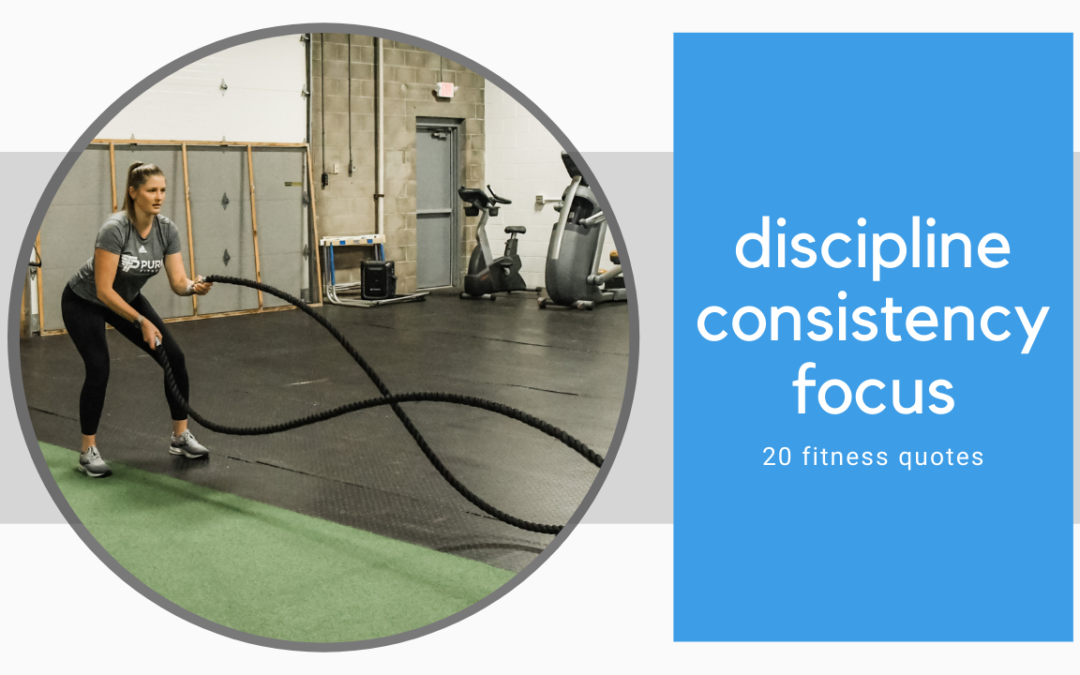
by Chellie
Staying consistent isn’t easy. We aren’t born with perfect discipline. BUT we should work to create a lifestyle that makes us feel good. Which means you will need to try to be consistent and you will need to practice discipline. Working out is no exception. That’s why we rounded up 20 of the best fitness quotes to help you fuel your next workout or keep you grinding for that next goal.
Here is a collection of 20 fitness quotes to get you moving & keep you moving.
1. “An imperfect workout is still a workout.”
Sometimes we need to hear this. A good reminder that life doesn’t always go to plan and neither do your workouts. Sleep, nutrition, work, friends, family and more impact your workout. Frequently, what disrupts your workout flow is beyond your control. Roll with the ups and the downs because imperfections are a part of life.
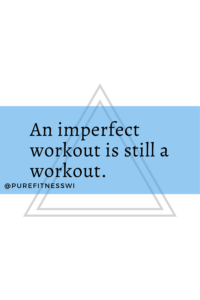
2. “The body achieves what the mind believes.”
We put limits on ourselves everyday. Imagine what we could become if we stopped limiting our potential. That goes for your workouts. Do you want to run a marathon, but you are scared you can’t do it? That’s a limit you put there. Do you want to do a fitness competition, but you are scared you won’t be consistent? That’s a limit you put there. Your body can achieve what your mind tells it is possible.

3. “You don’t have to be extreme just consistent.”
Consistency is highly underrated. People are looking for shortcuts and quick solutions everywhere. Put that much energy into being consistent and you would be well on your way to your goal.

4. “You are enough.”
Practice saying this on a daily basis. Show yourself some grace and some love. You will be surprised how much more you can get out of yourself. We are as strong as we allow ourselves to be. And even the strongest need to give back to themselves.
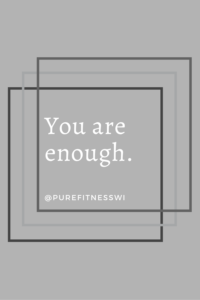
5. “If you aren’t willing to work for it. Don’t complain about not having it.”
No comment needed.
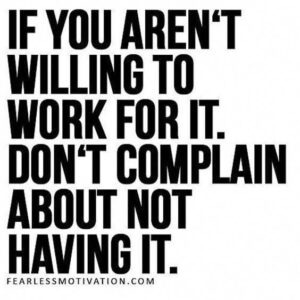
6. “Extremes wont get you the results you’re looking for. Consistency will.”
Here is that C word again … consistency. I know you don’t want to workout today, but even if your workout is a 10 minute walk that will build momentum. Momentum derived from your consistency.
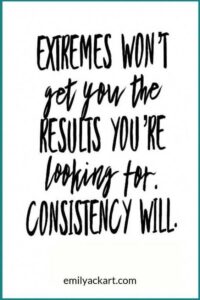
7. “Never measure your progress using someone else’s ruler.”
We are each different. Our goals our different and so are the ways we get there. Stop comparing yourself to others.
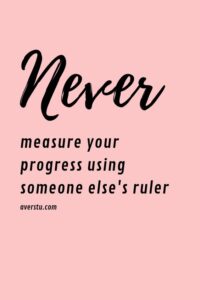
8. “Willpower is like a muscle, the more you train it, the stronger it gets.”
And do you know what willpower will get you? Consistency.
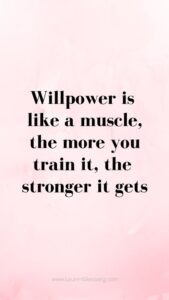
9. “Starve your distractions, feed your focus.”
We all know what distracts us. But we usually don’t like to admit it. So if Netflix is keeping you from your workouts consider deleting it from your phone. The more energy you put into things that distract you the less energy you have to put towards your goals.
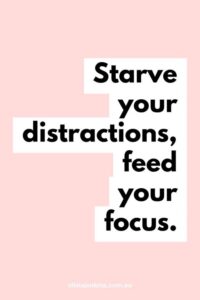
10. “Get into the habit of asking yourself, does this support the life I’m trying to create.”
If your fitness goals are a priority, the rest of your life should support them. Take a minute to evaluate what else you have going on in your life and see what needs adjusting.
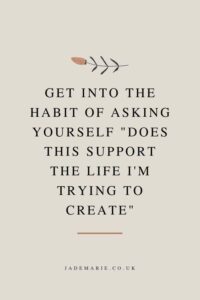
11. “Discipline is choosing between what you want now and what you want most.”
Read this everyday. Struggling to make a decision? Read this quote and evaluate. The choice should be clear.
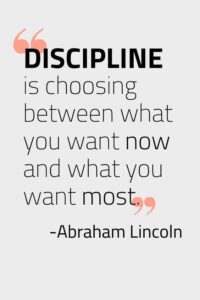
12. “Decide what you want … believe you can have it, believe you deserve it, believe it’s possible for you.”
Make your mind up today. Whatever your goal is – in the gym or out – and never waiver. Believe in yourself, believe in your persistence. And everyday you will be one day closer to what you want.

13. “99% of the time training your posterior chain is the right answer.”
Everyone loves a leg day, right? If you aren’t already intentionally training your posterior chain often and efficiently you should start immediately. Proper loading and training of your posterior chain can improve chronic pain, produce better sports performance and make daily tasks like stairs or yard work easier.
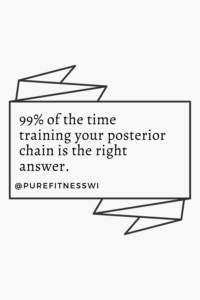
14. “It’s a slow process, but quitting won’t speed it up.”
Starting and stopping projects seems like a right of passage into adulthood. We have all done it. BUT that doesn’t mean we have to keep doing it, especially in the gym. Slow down, enjoy the journey and find the success you are looking for.
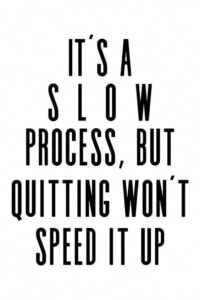
15. “It always seems impossible until it is done.”
There are so many things in life we can look back on and say, wow I really thought that was close to impossible. Like passing your driver’s test as a teenager, or getting into your dream school for college or winning a promotion at work. Fitness is no different. People thought squatting over 1,000 pounds was impossible until someone did it.
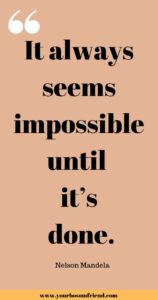
16. “Focus on the step in front of you, and not the whole staircase.”
Keep your eyes focused on the step you need to take today to prevent getting overwhelmed. But keep that long term goal front and center of your priorities or risk a longer road than you ever wanted.
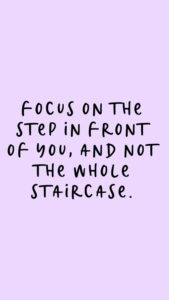
17. “Your core is your body’s foundation.”
If you are ever feeling lost on what to train, let this guide you. Your core is your foundation so you should train it. Shoulders to hips and everything in between. Keep it simple, make it consistent and feel strong day in and day out.
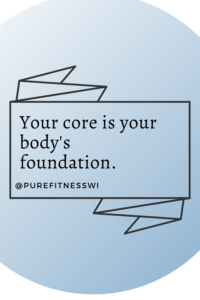
18. “You gotta nourish in order to flourish.”
Food is not your enemy. Water is not your enemy. Sleep is not your enemy. Positivity is not your enemy. Provide your body with the basic elements and it will provide for you.
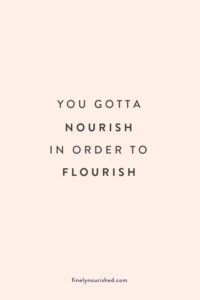
19. “I’m working on myself, for myself, by myself.”
Make your number one reason for working you yourself and consistency, discipline and success come right along. Put anything else in front and you will be ridding the fitness roller coaster of inconsistent results and dissatisfaction.
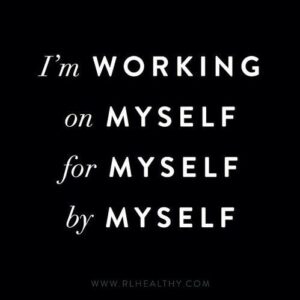
20. “Discipline is the most underrated piece of exercise equipment.”
Answer honestly, what is the difference between you and everyone else? We would say discipline. Regardless of if it is your workout consistency, nutritional habits, or performance at work discipline sets us all apart. With great discipline, comes great success. Focus on what you can do, do it regularly and grow from there.
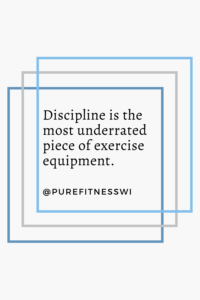
🚨FOLLOW US HERE 🚨
YouTube: http://www.youtube.com/purefitnesswi
Facebook: http://www.facebook.com/purefitnesswi
Instagram: http://www.instagram.com/purefitnesswi
Pinterest: https://www.pinterest.com/chelliedegelleke/



